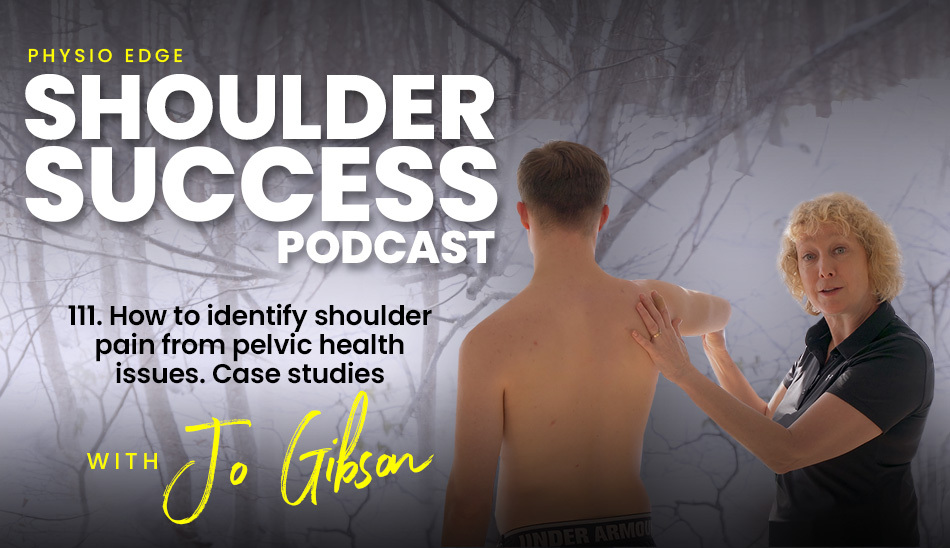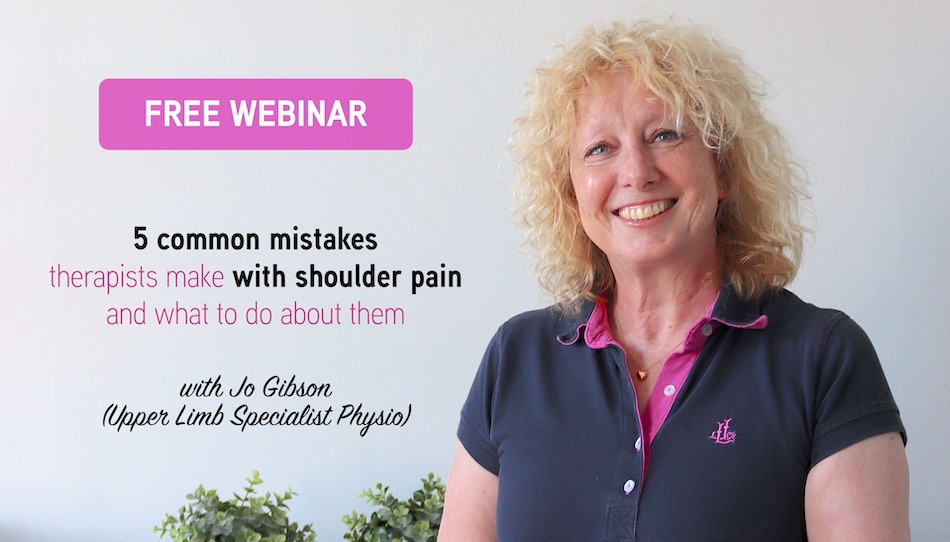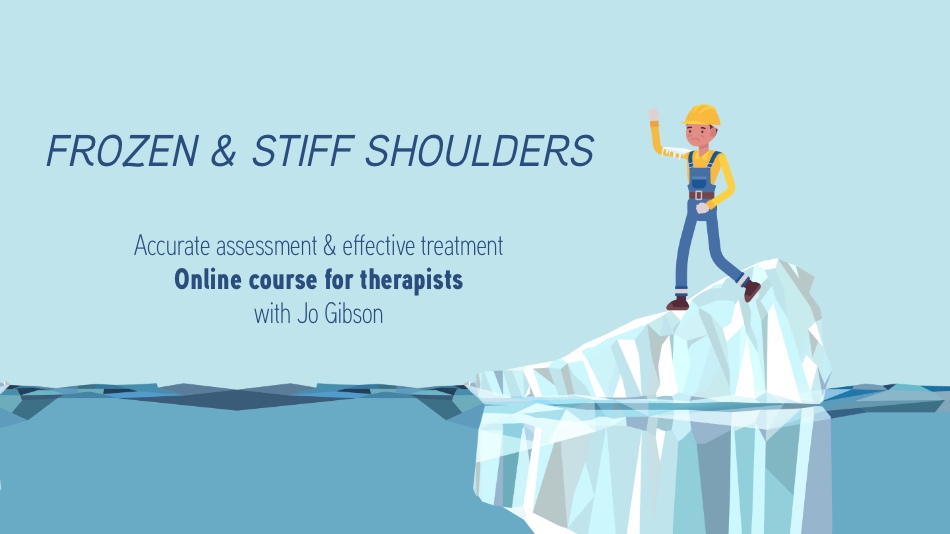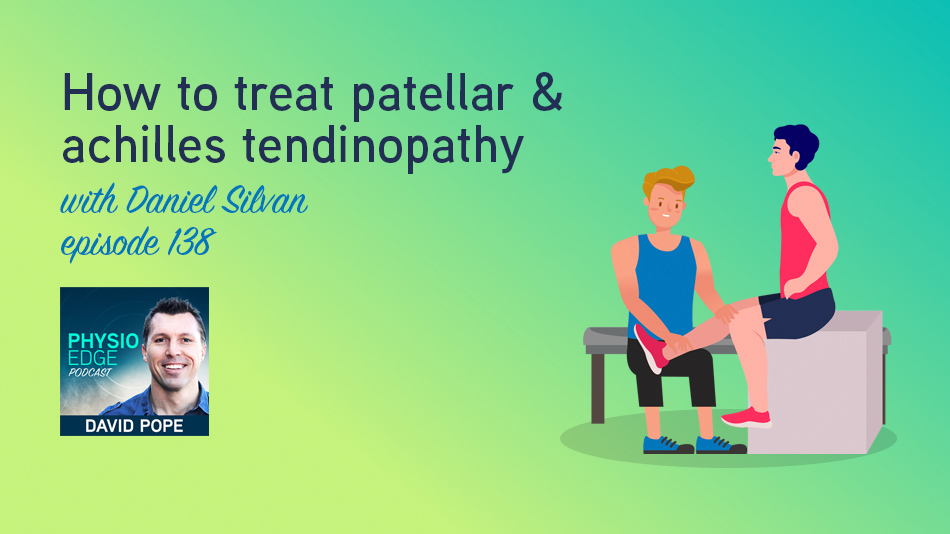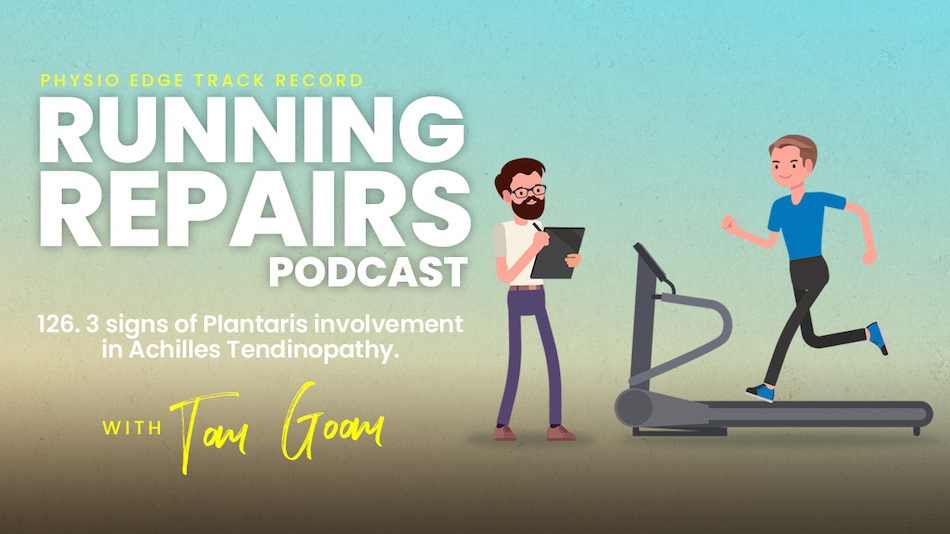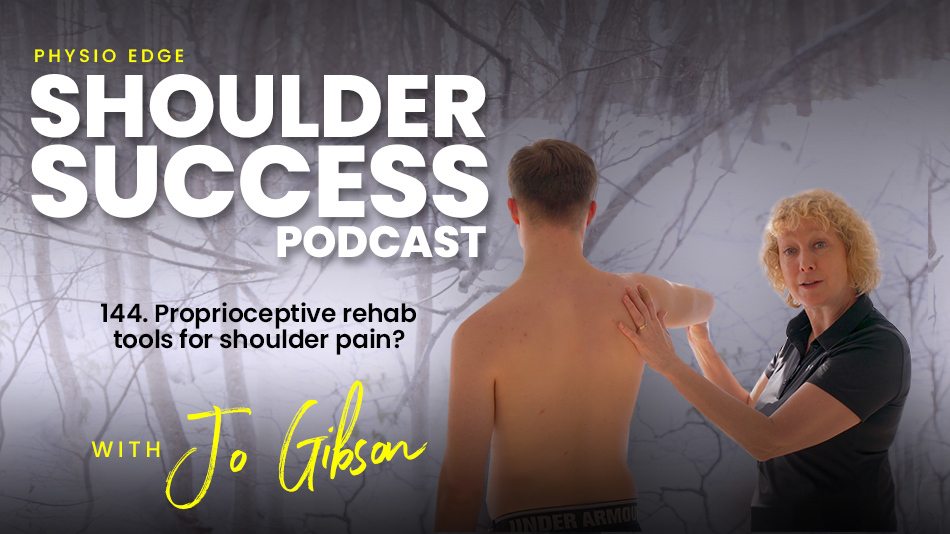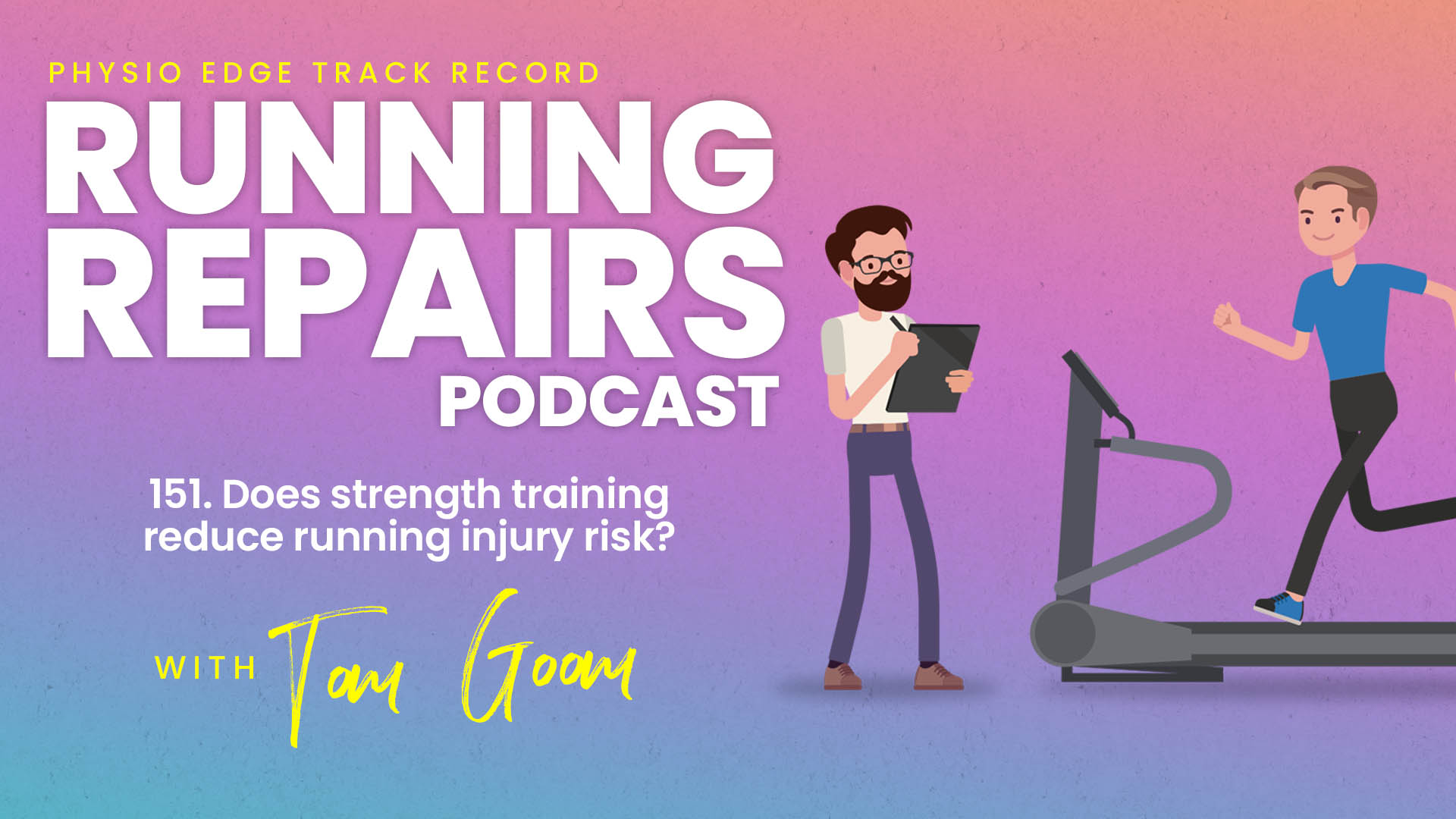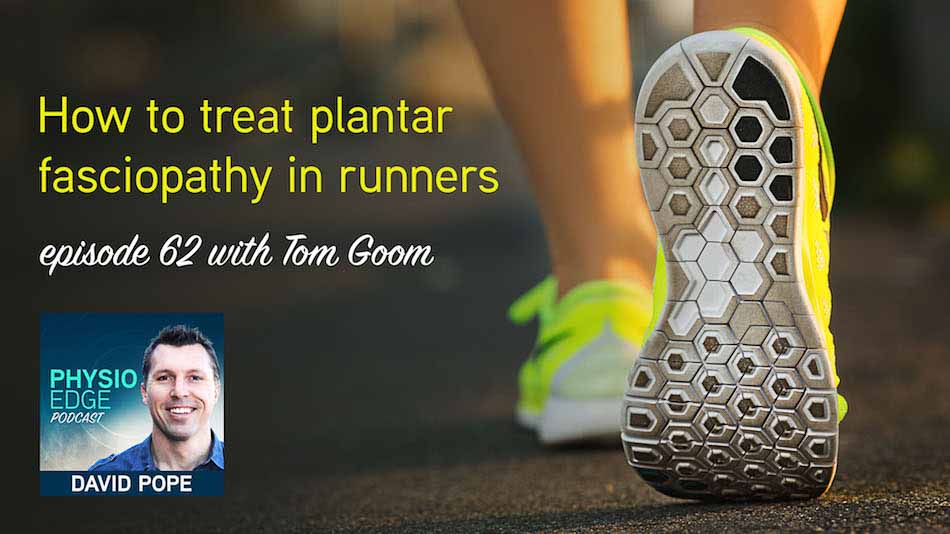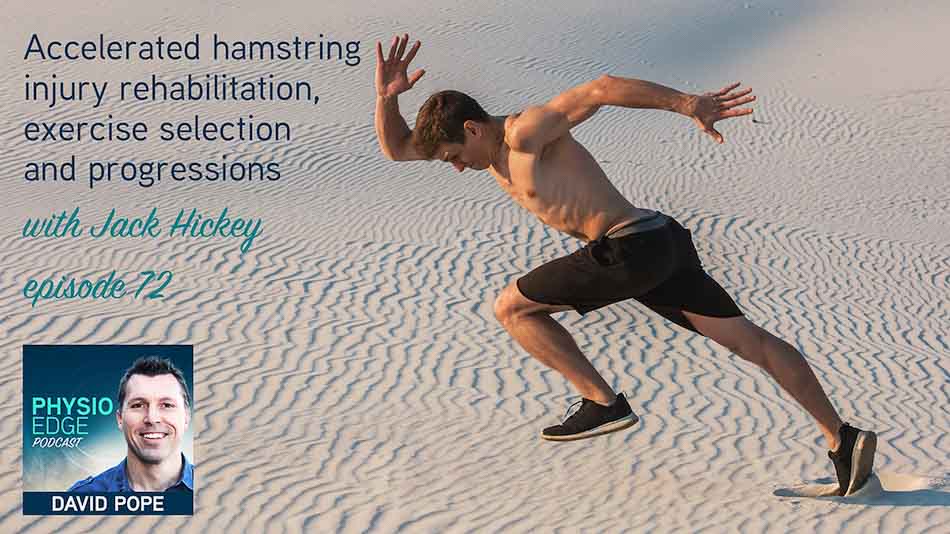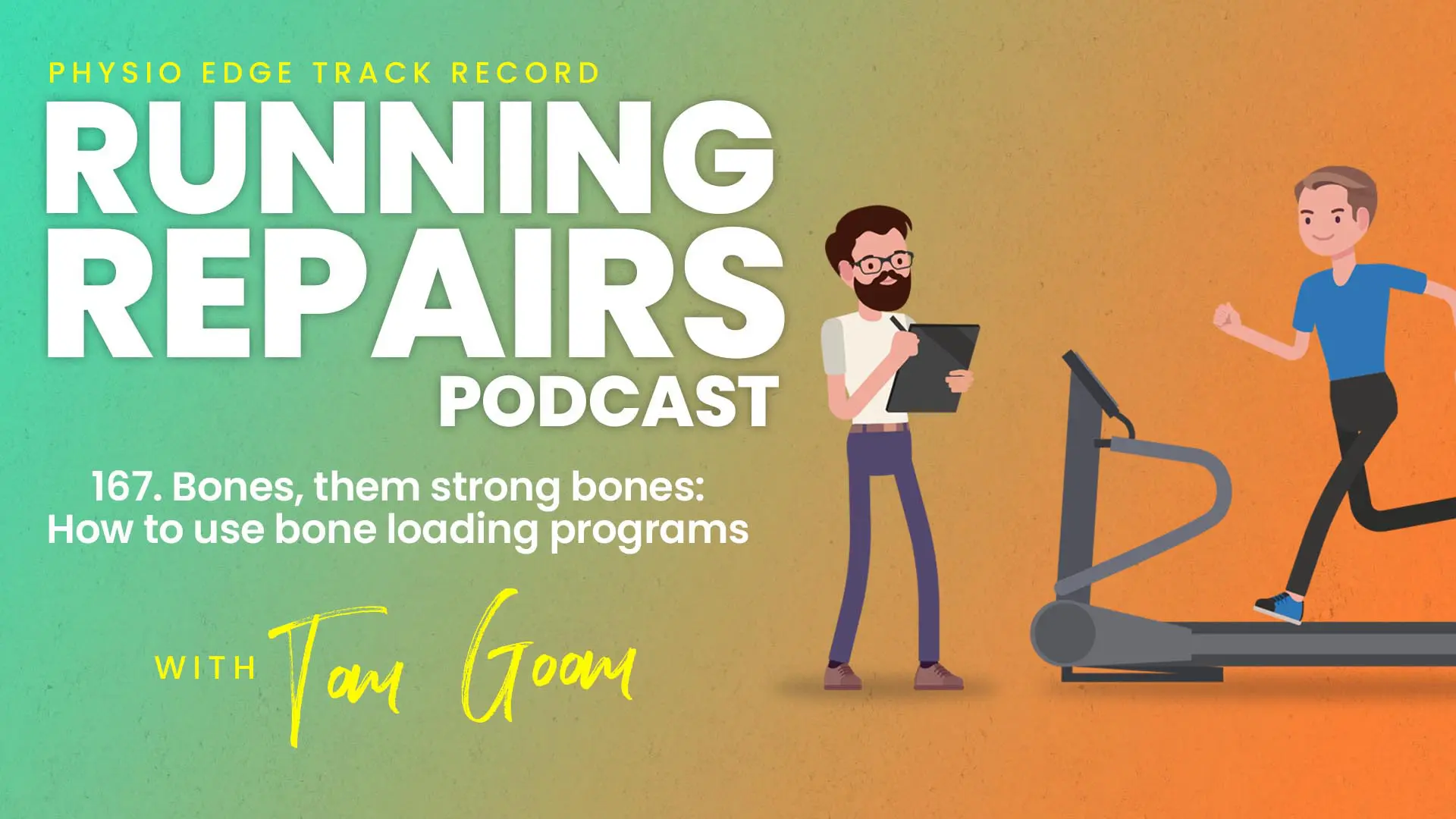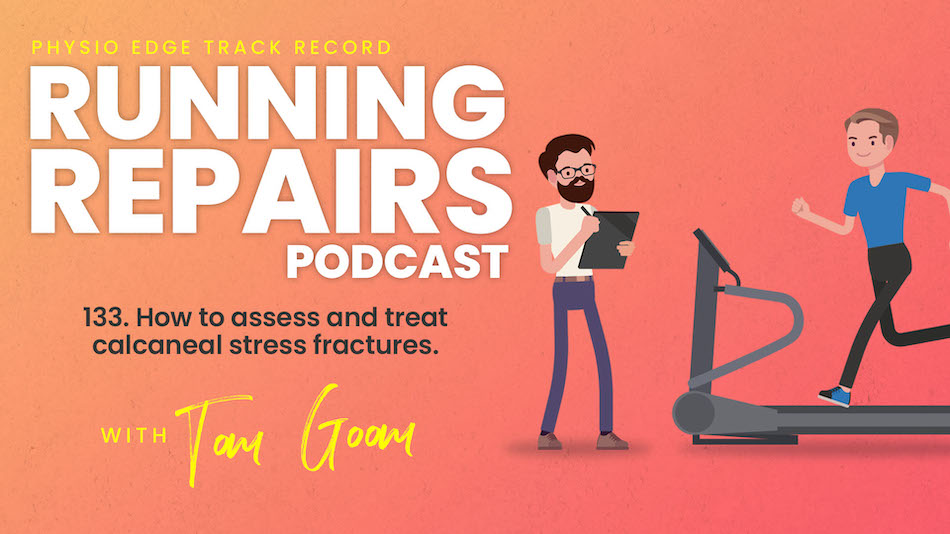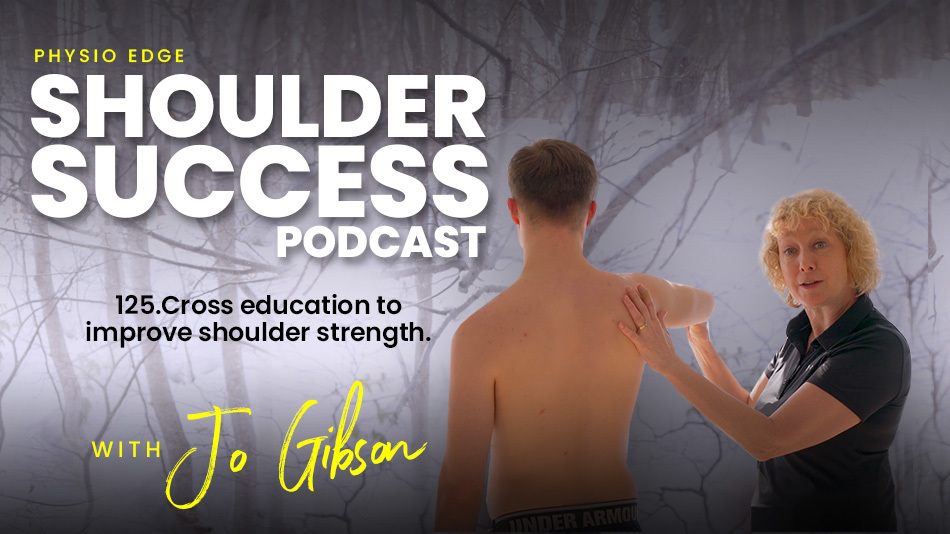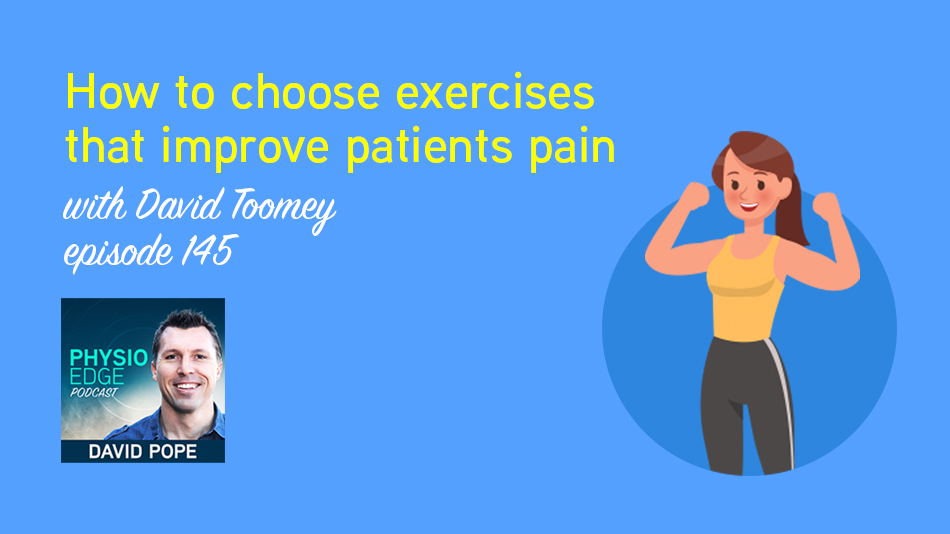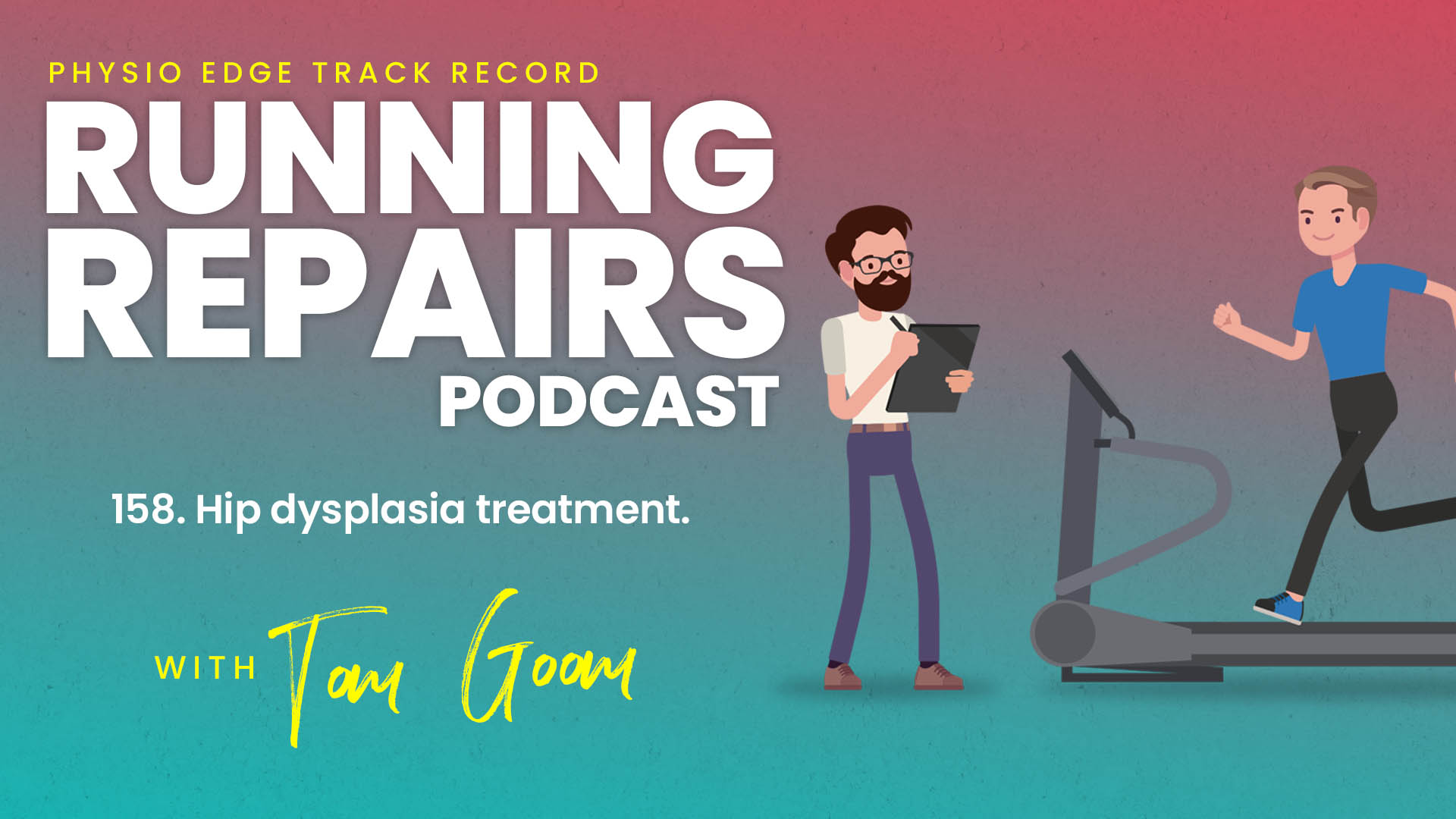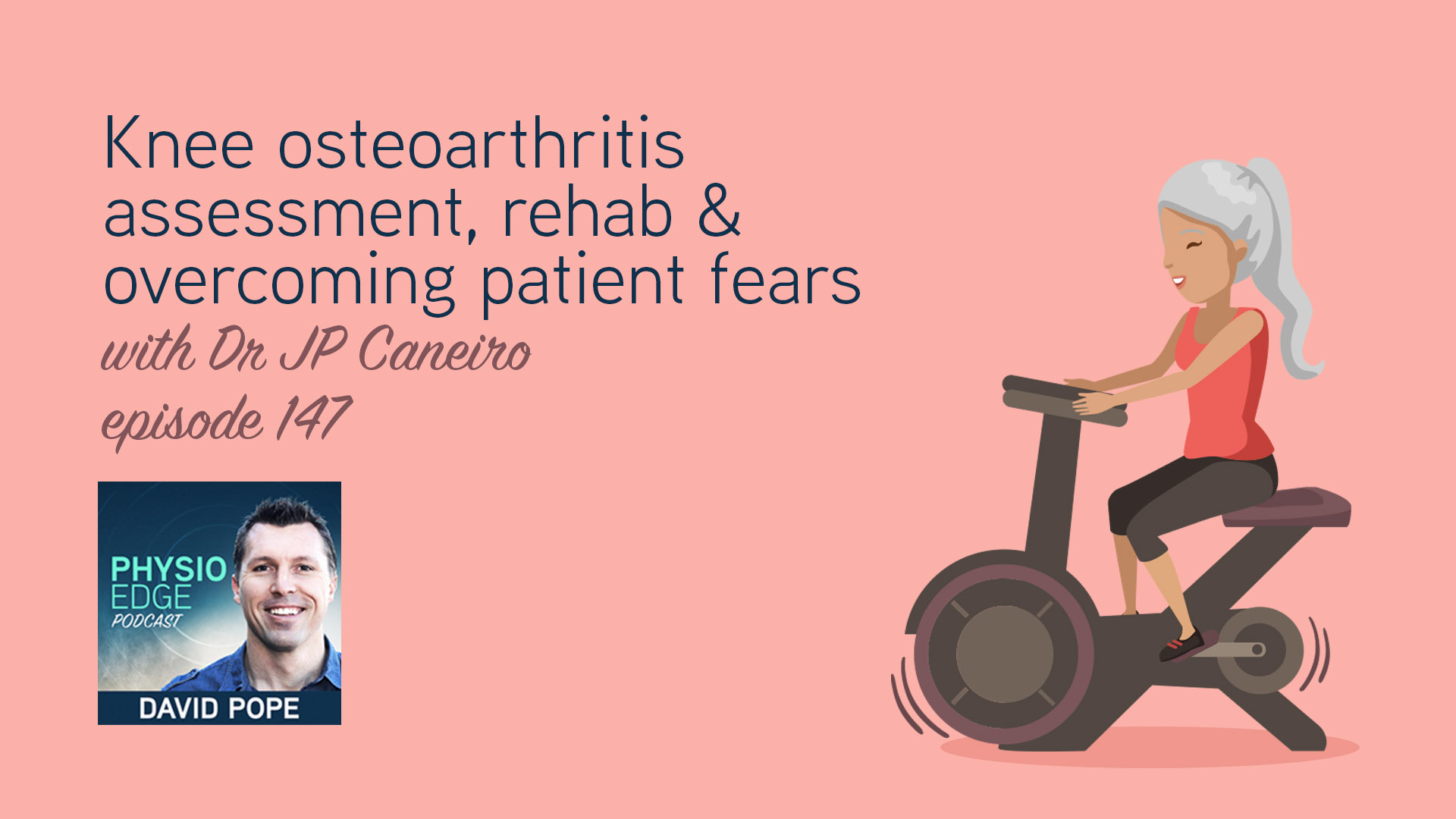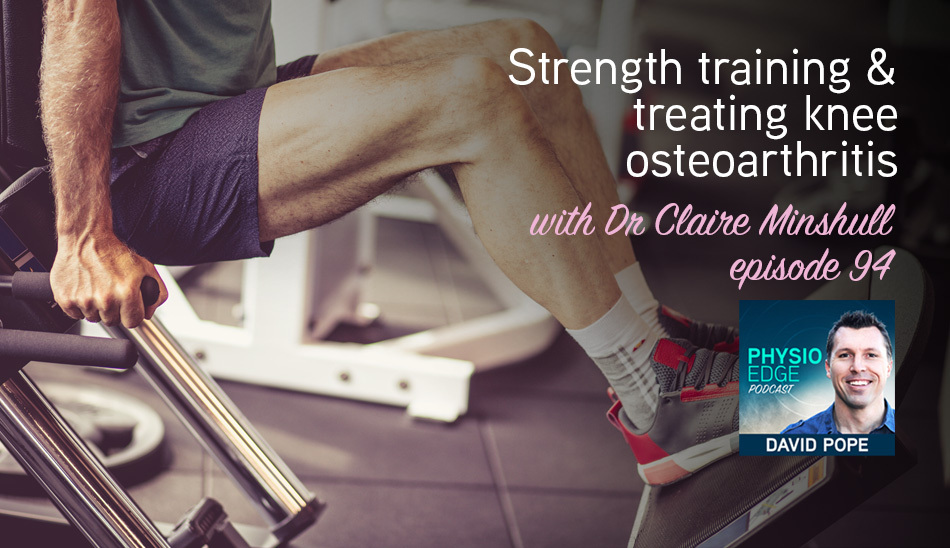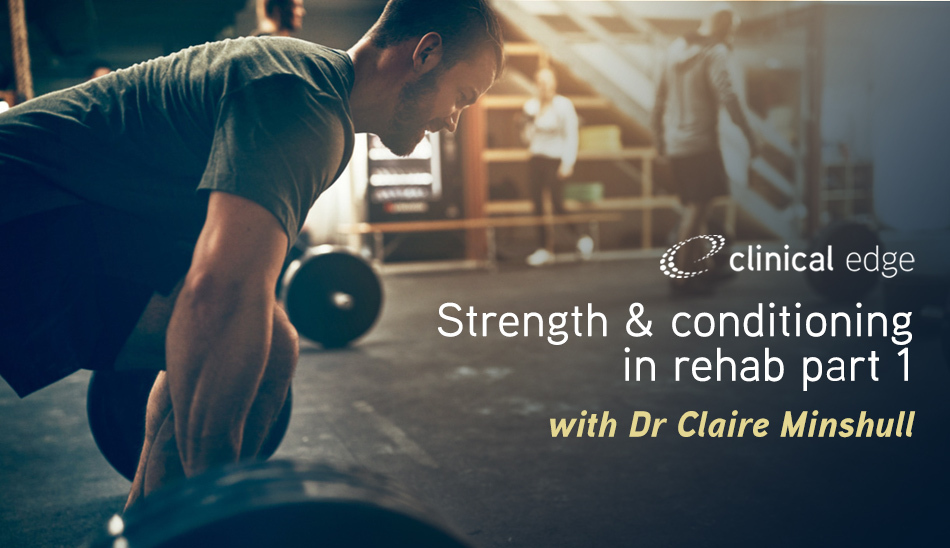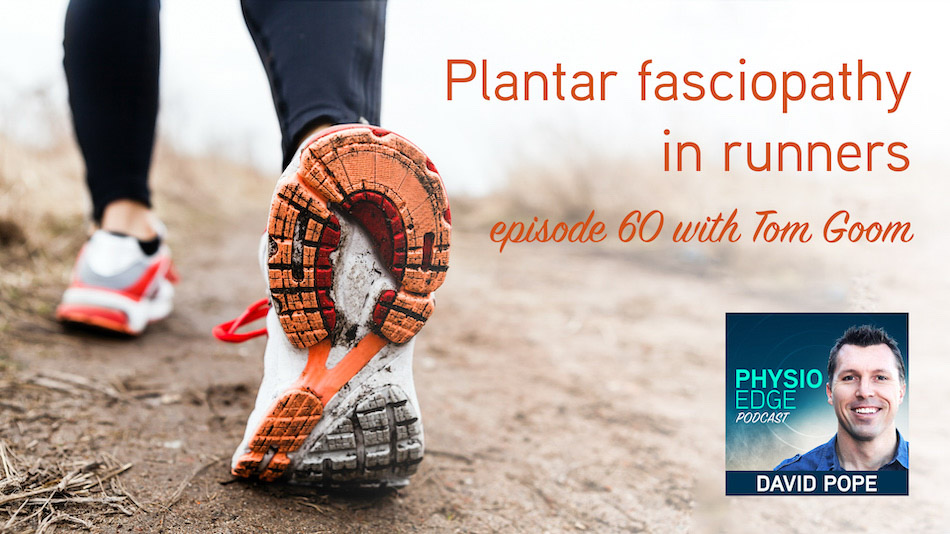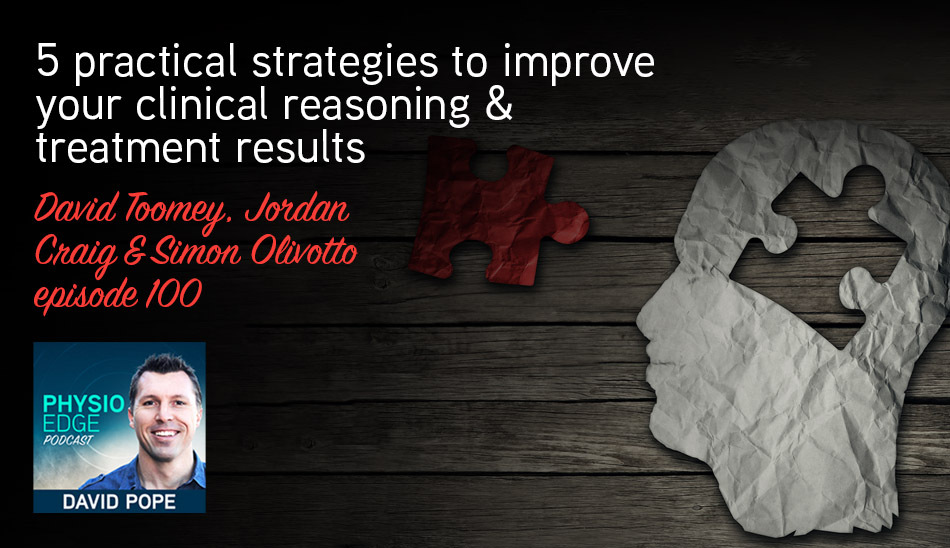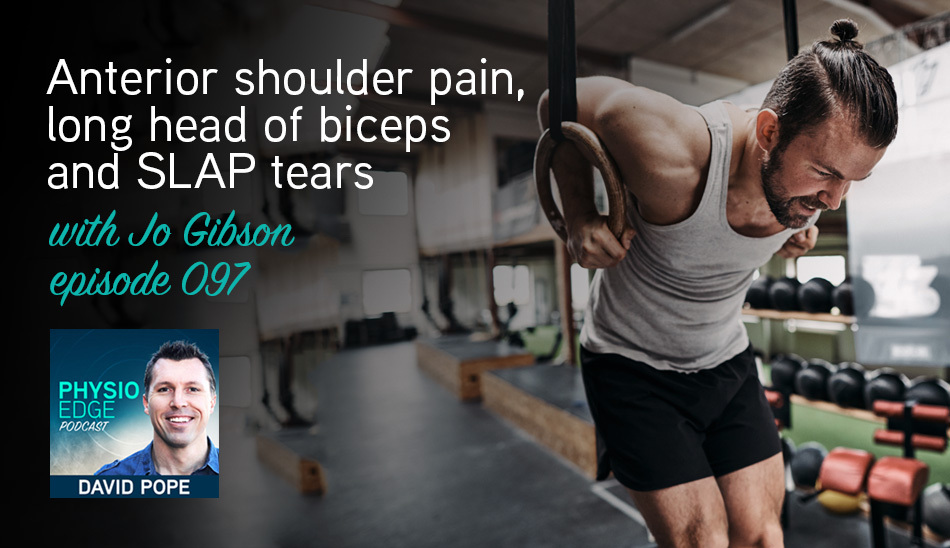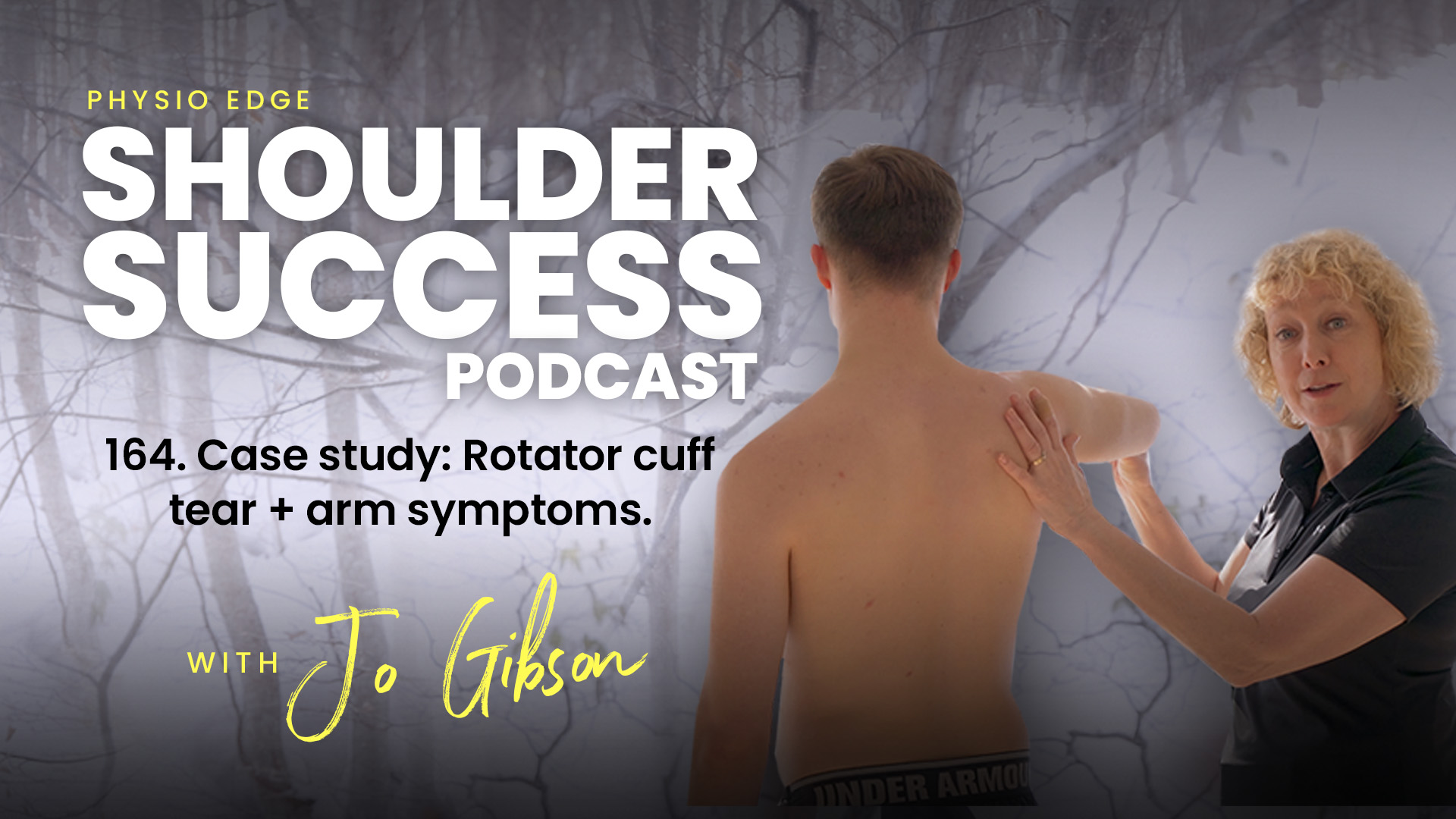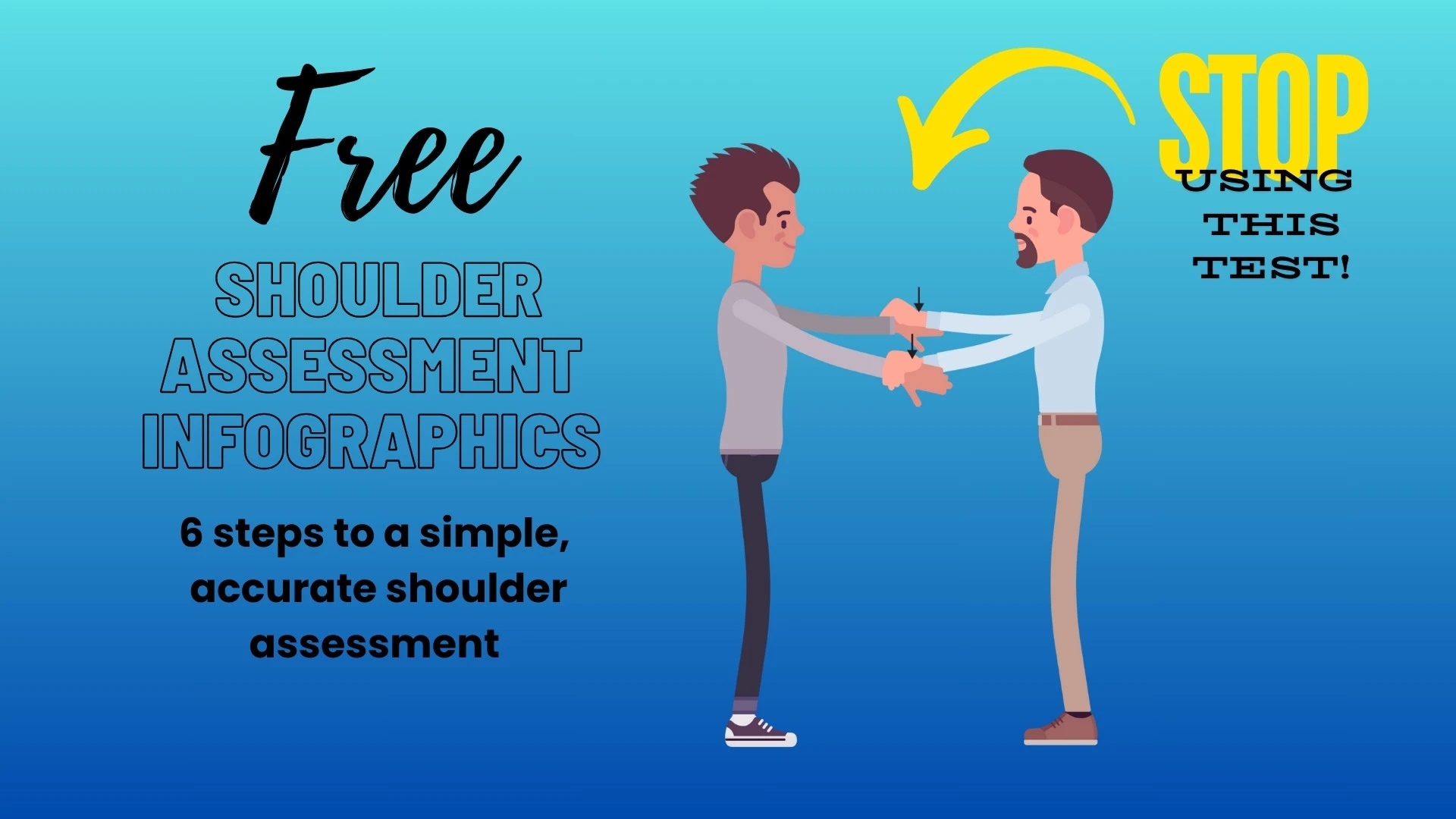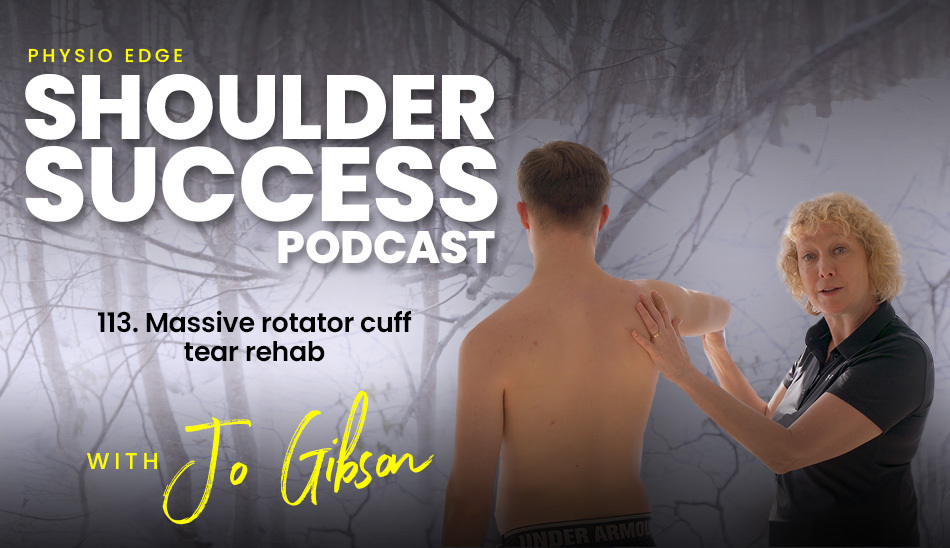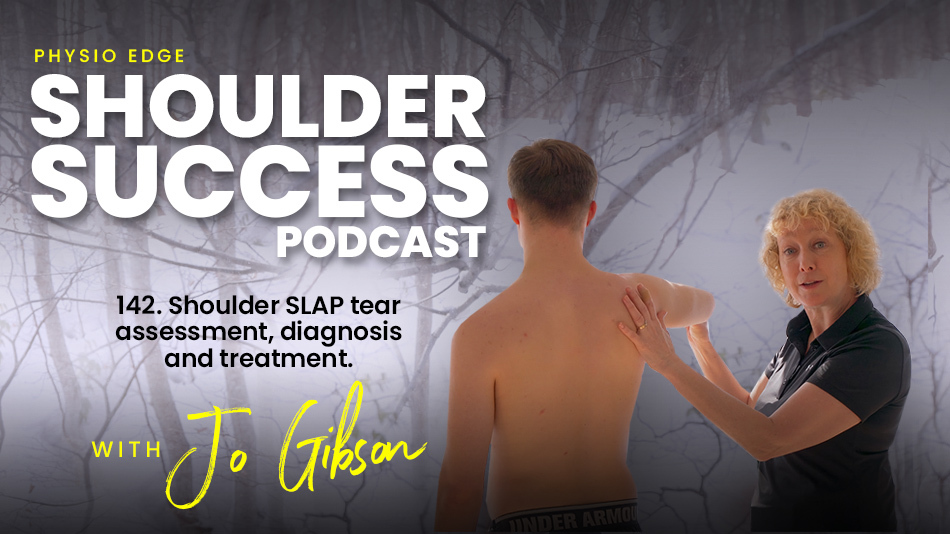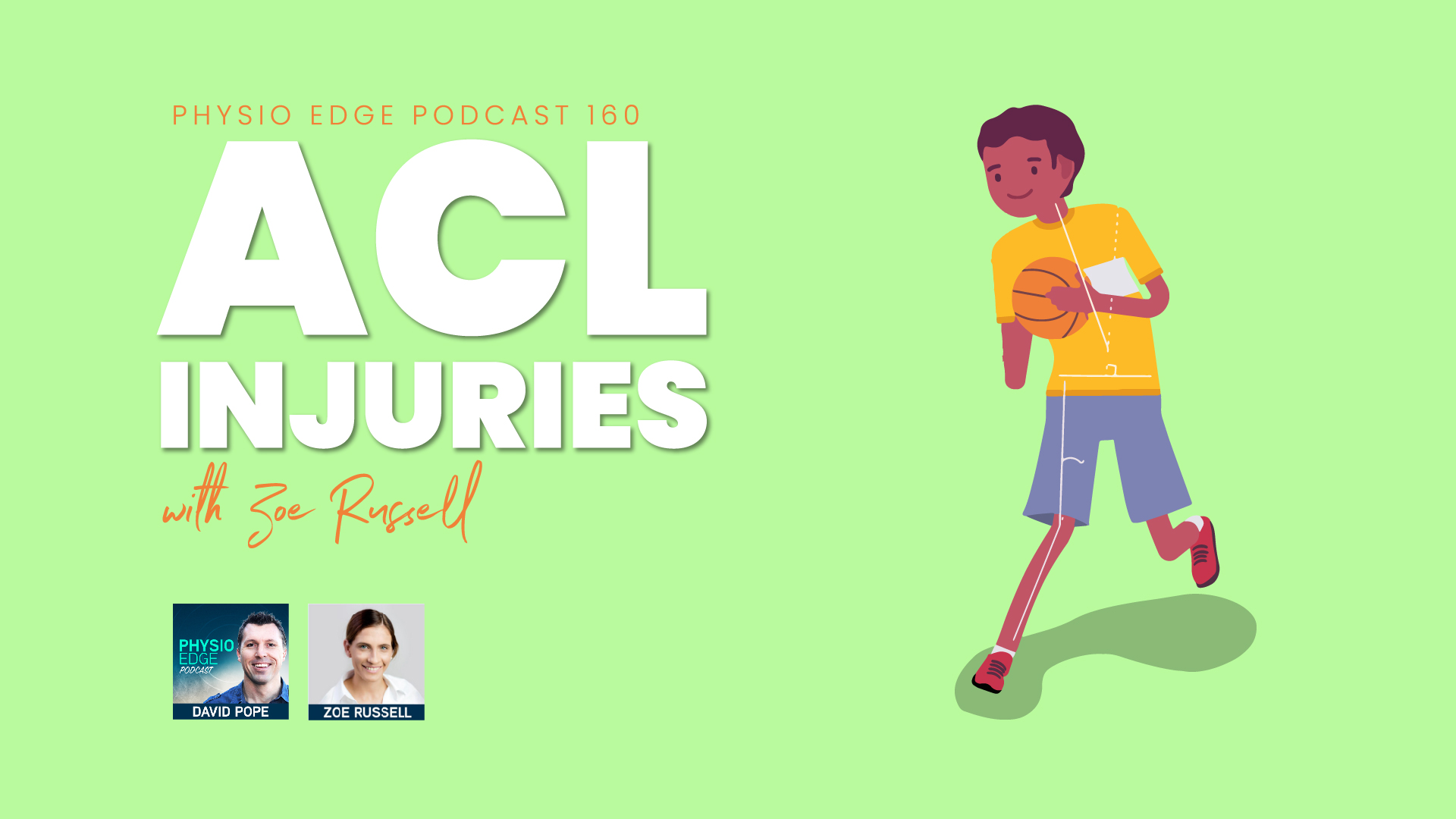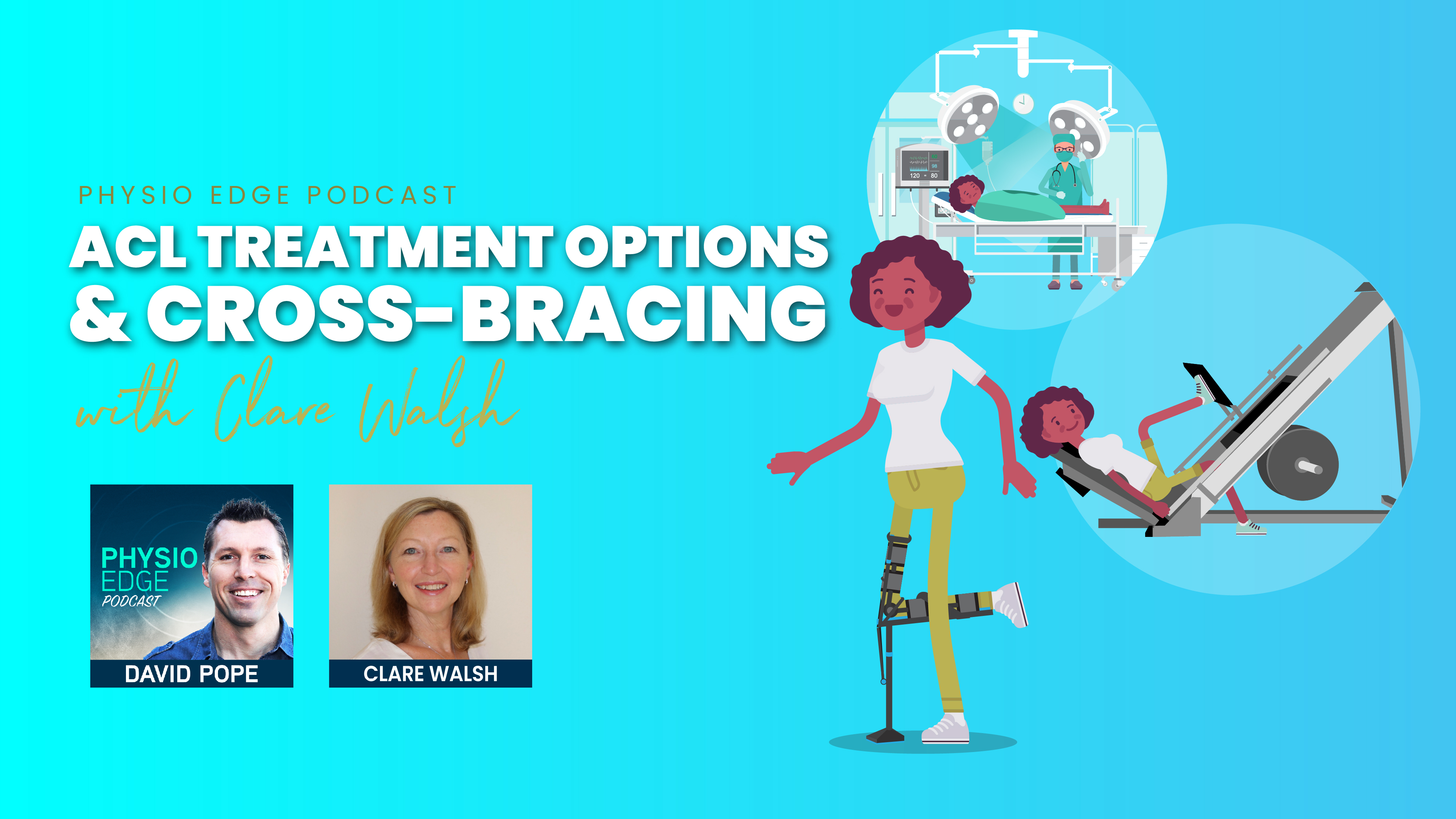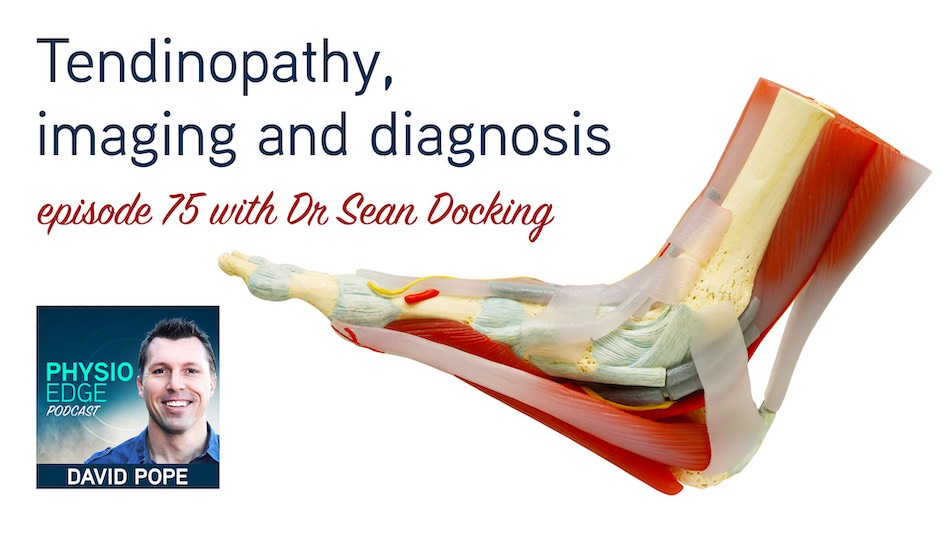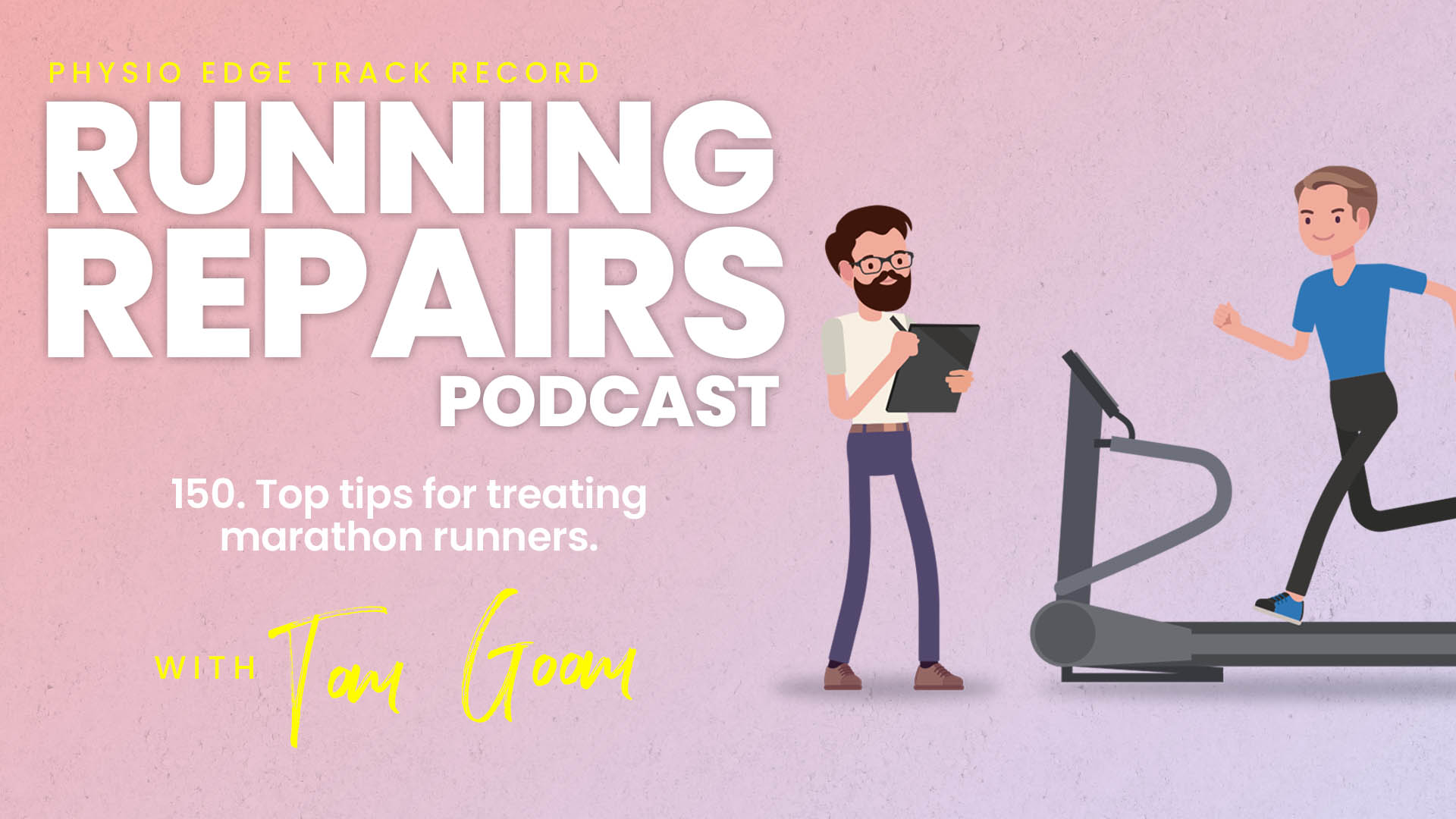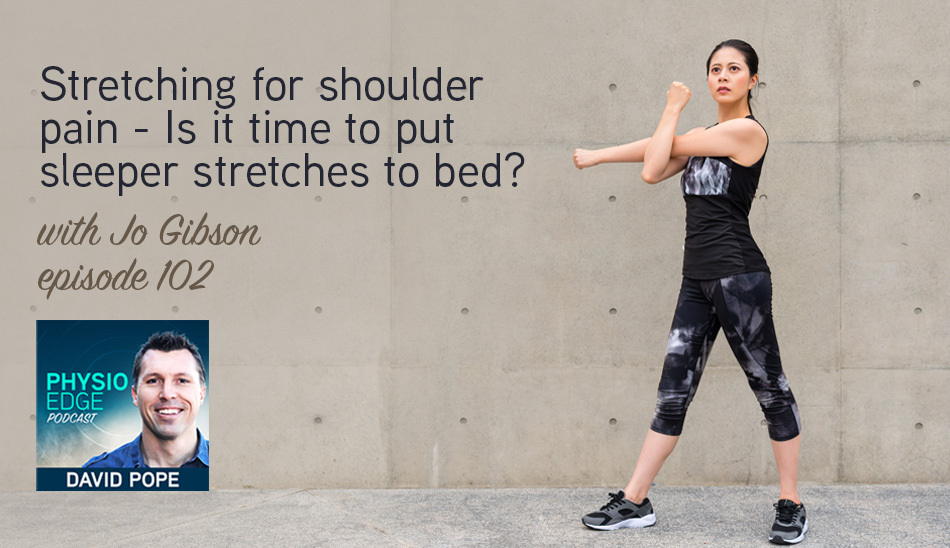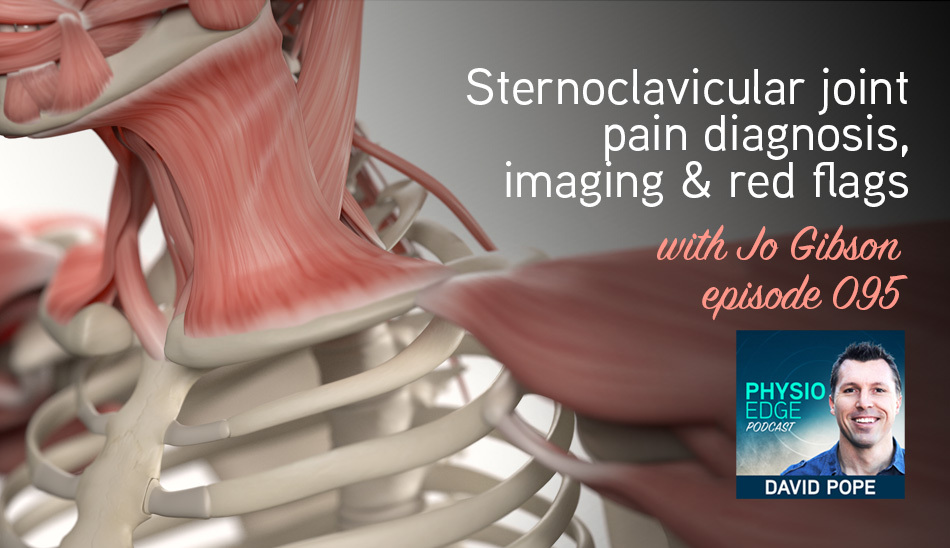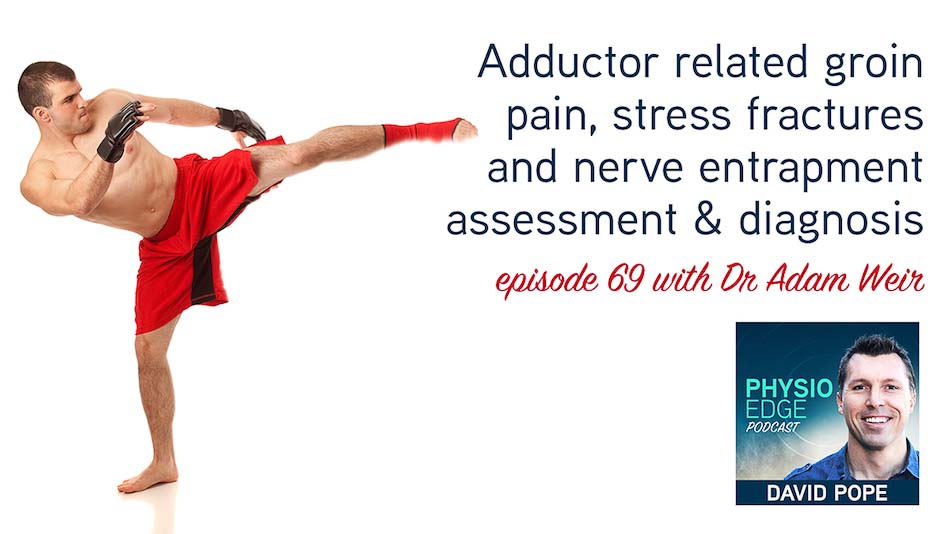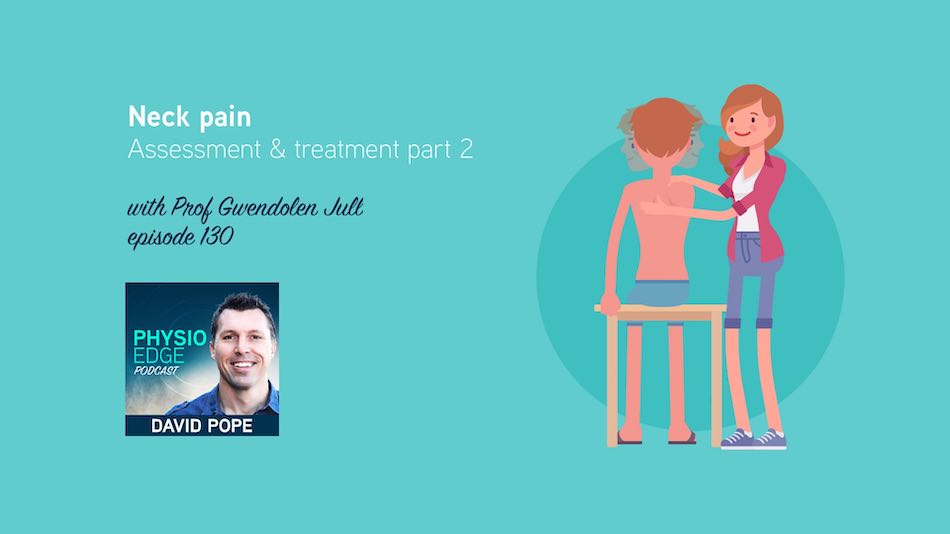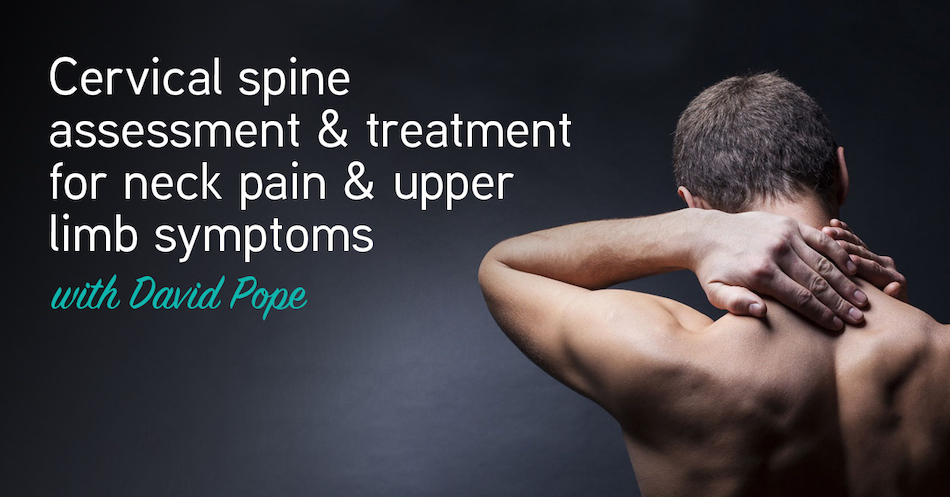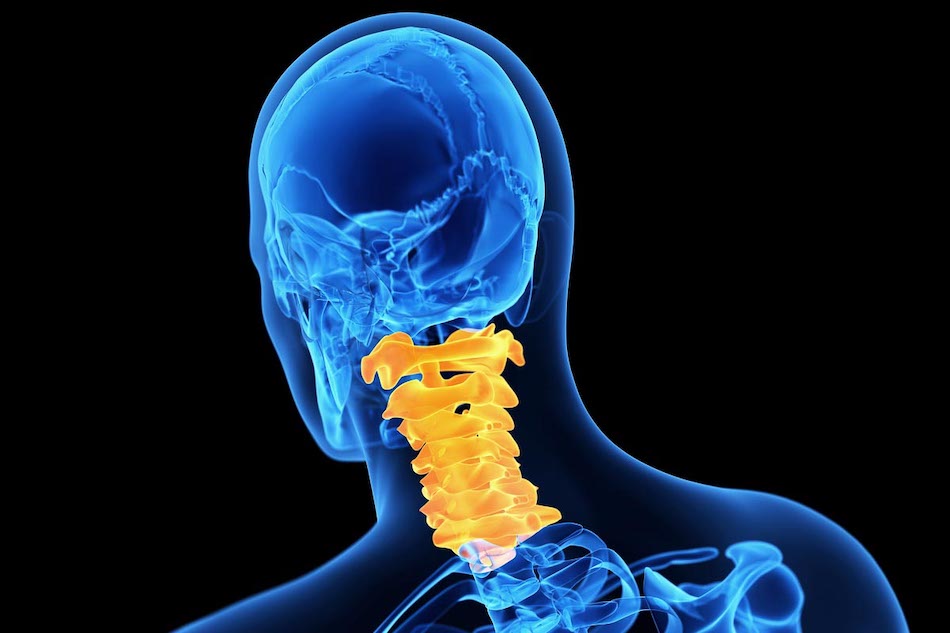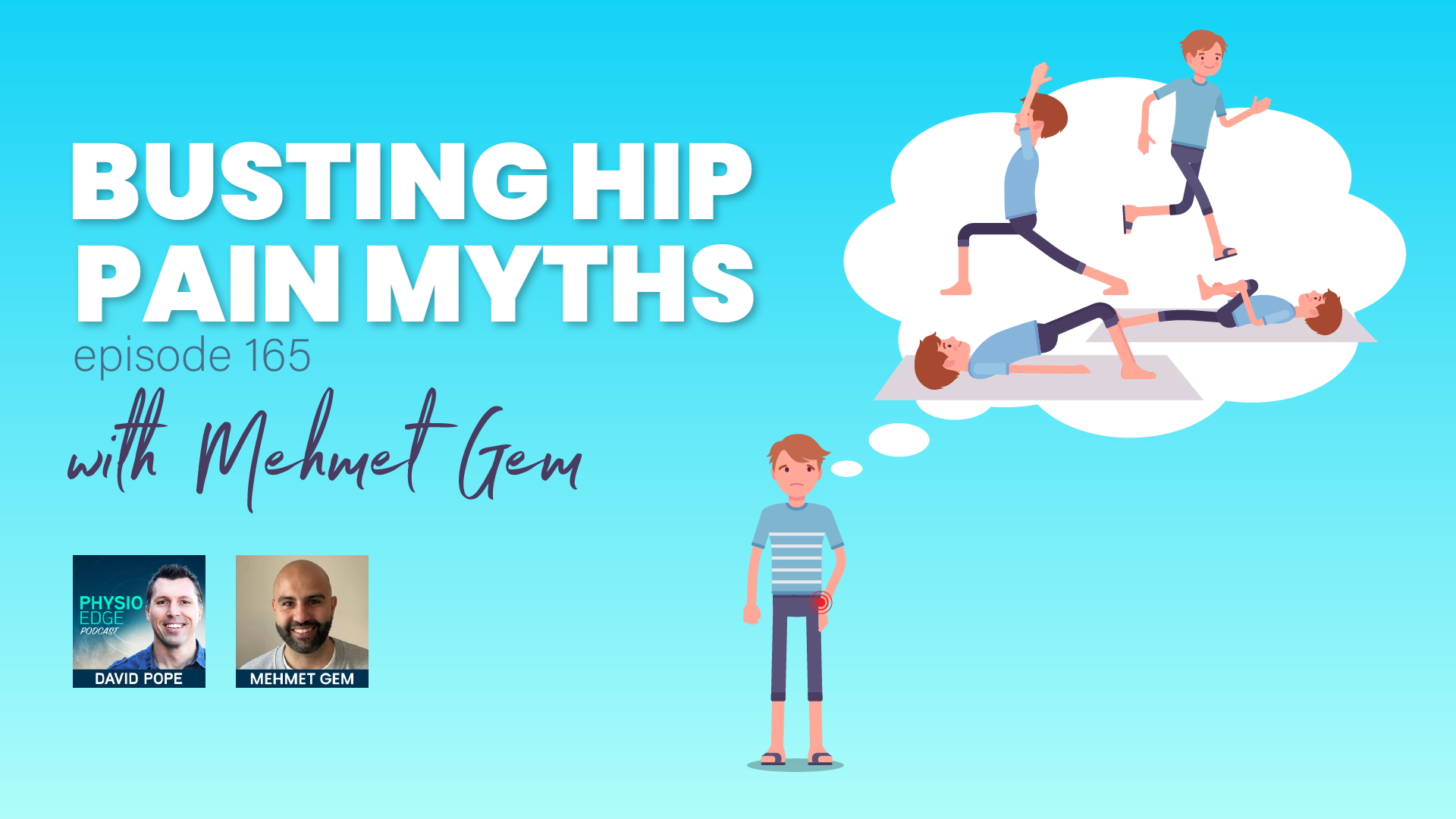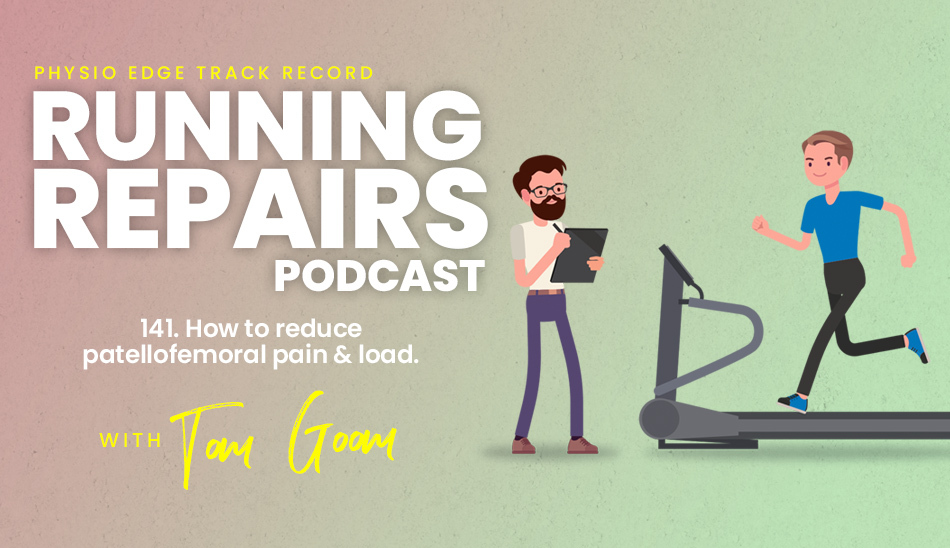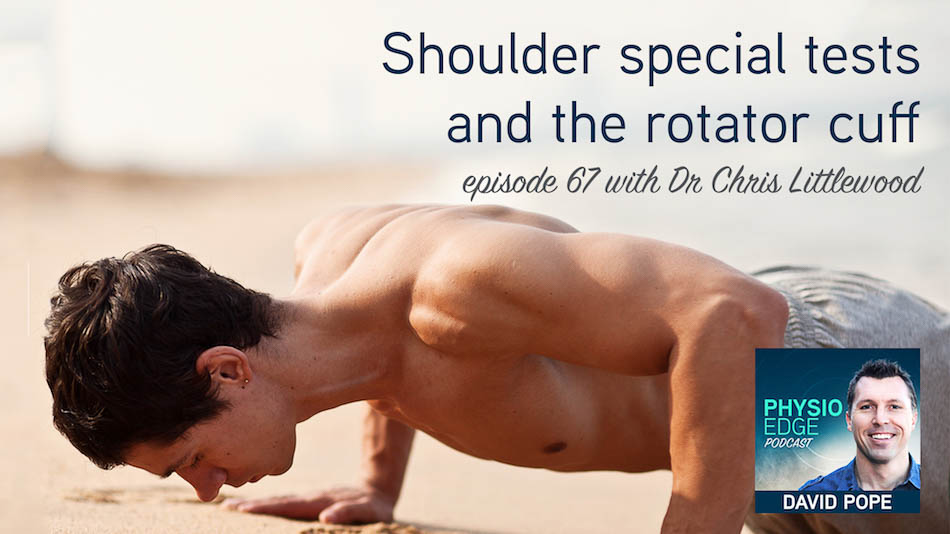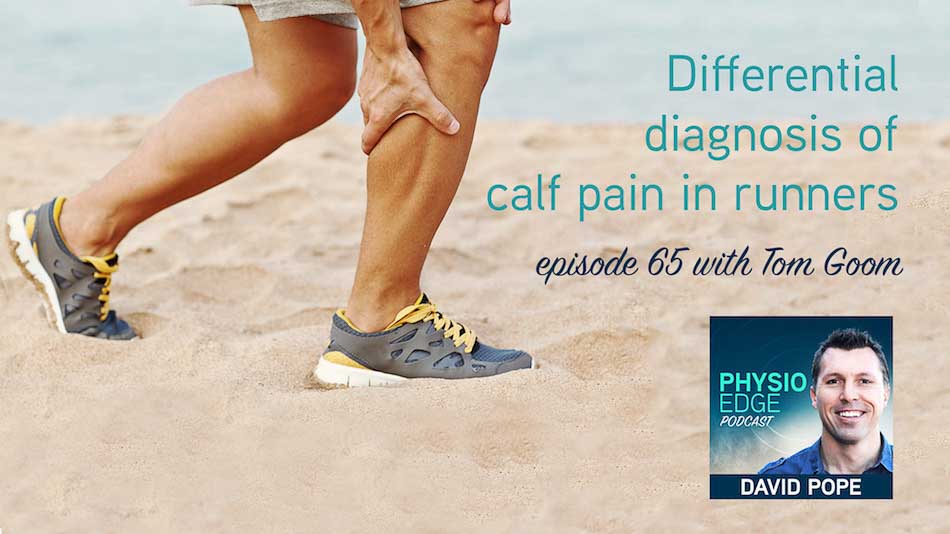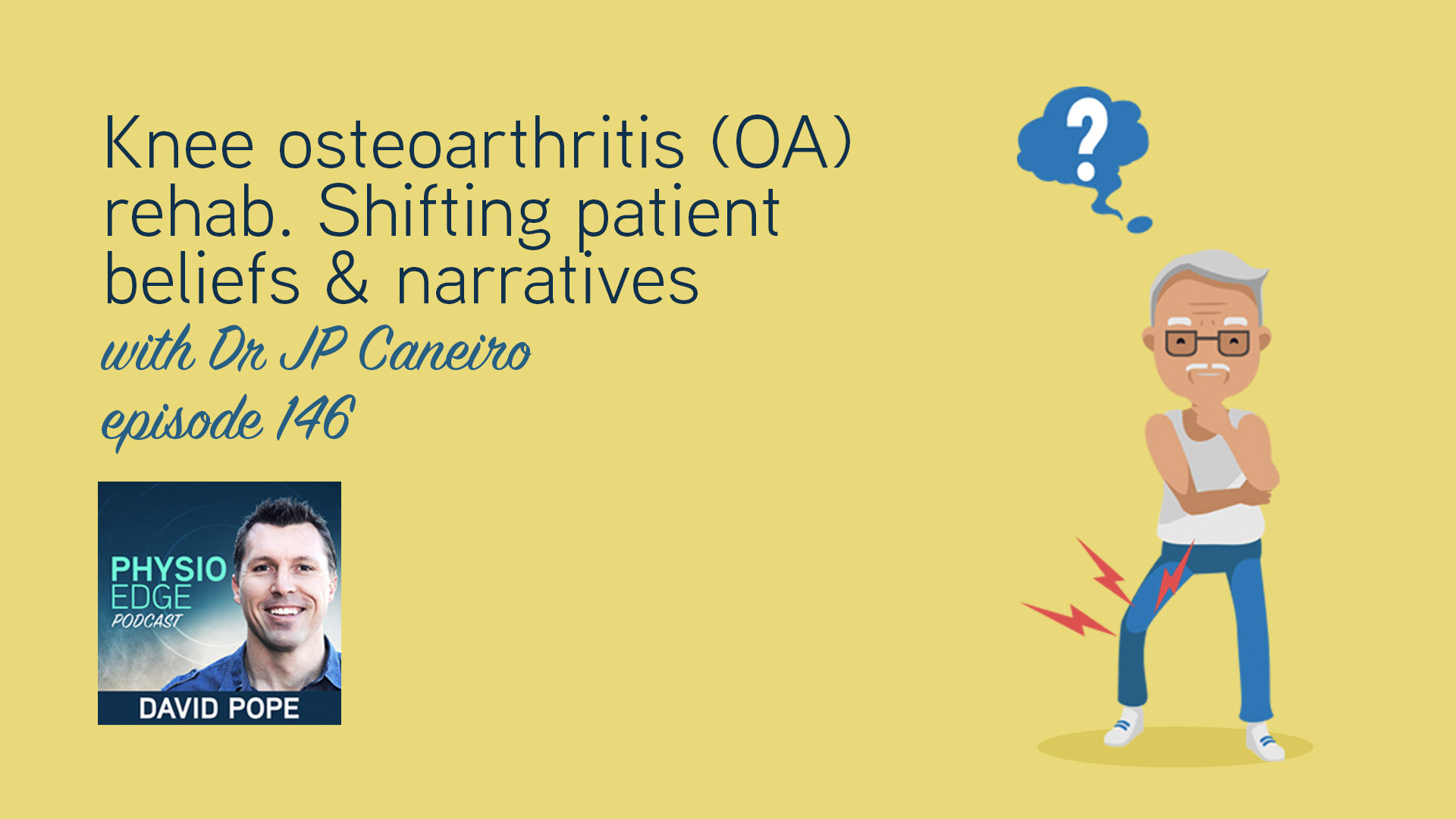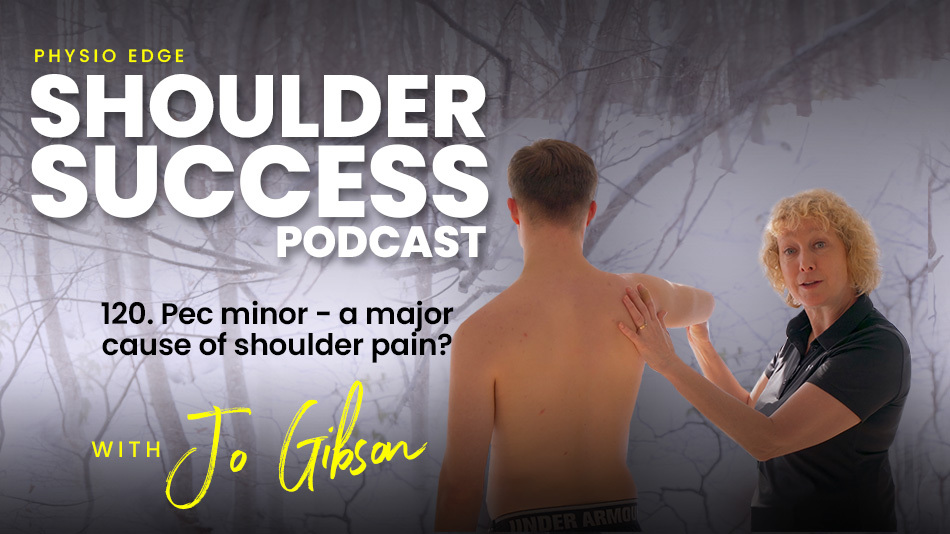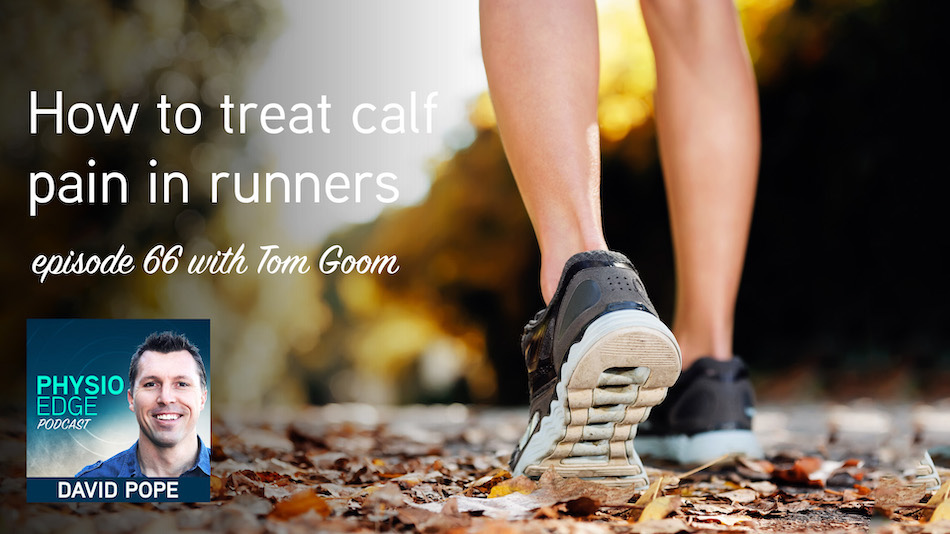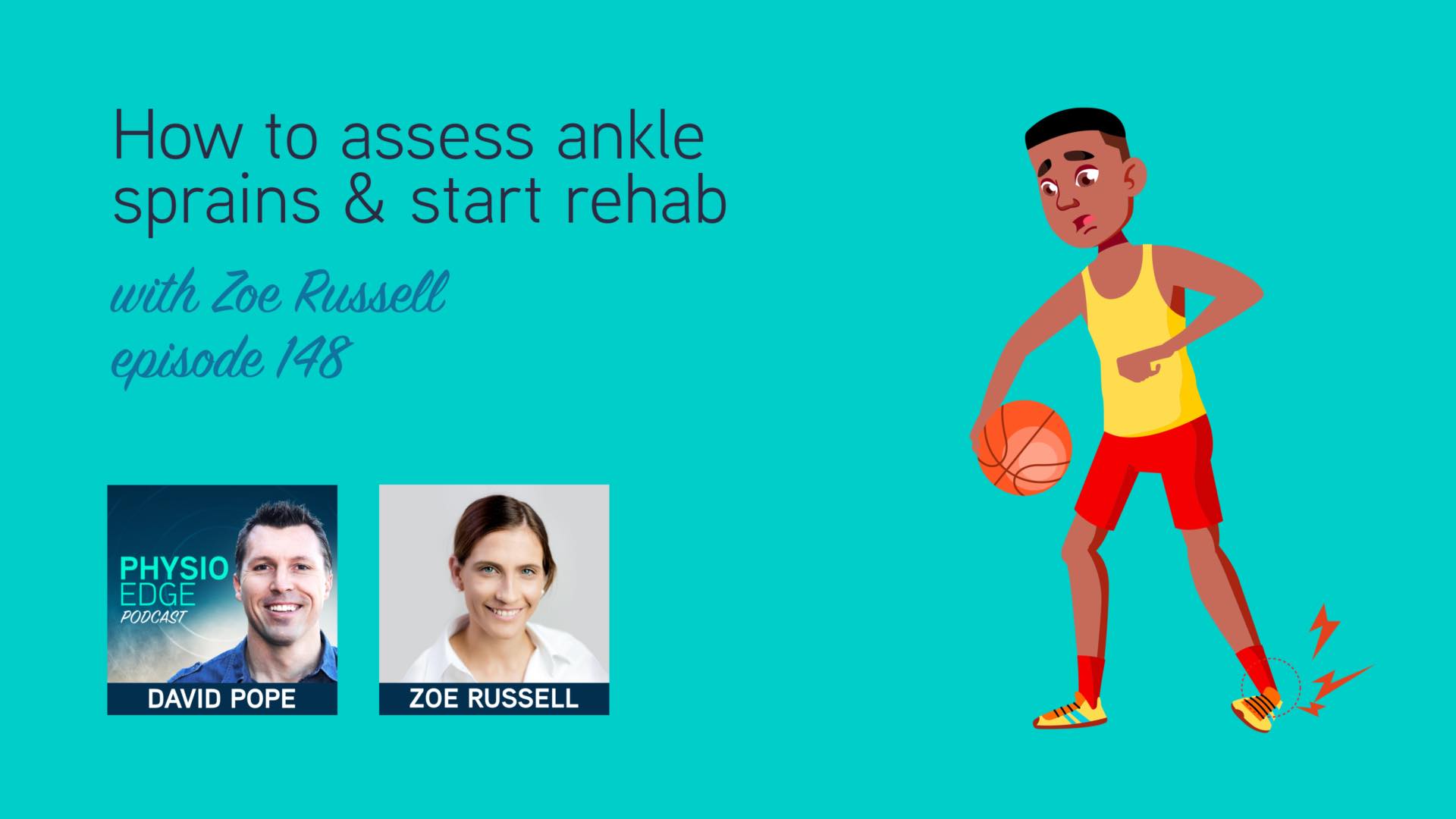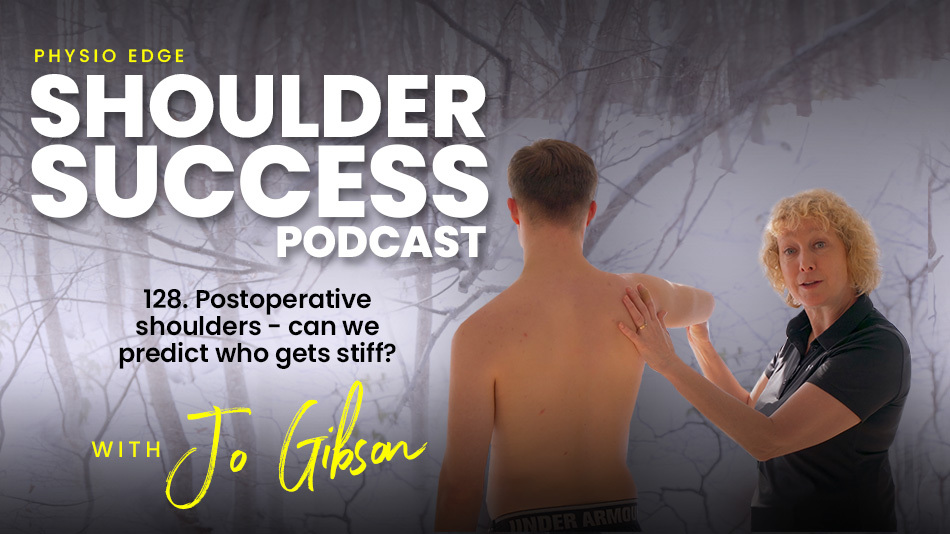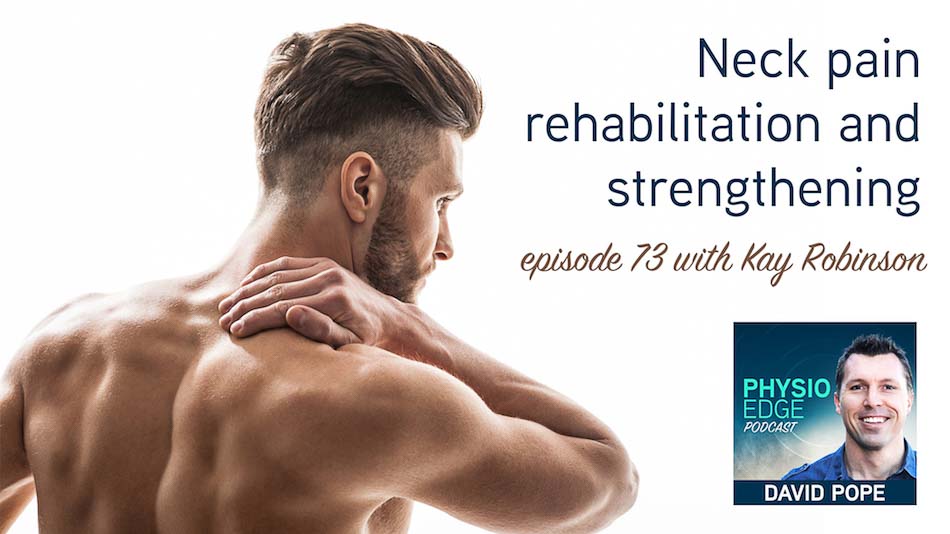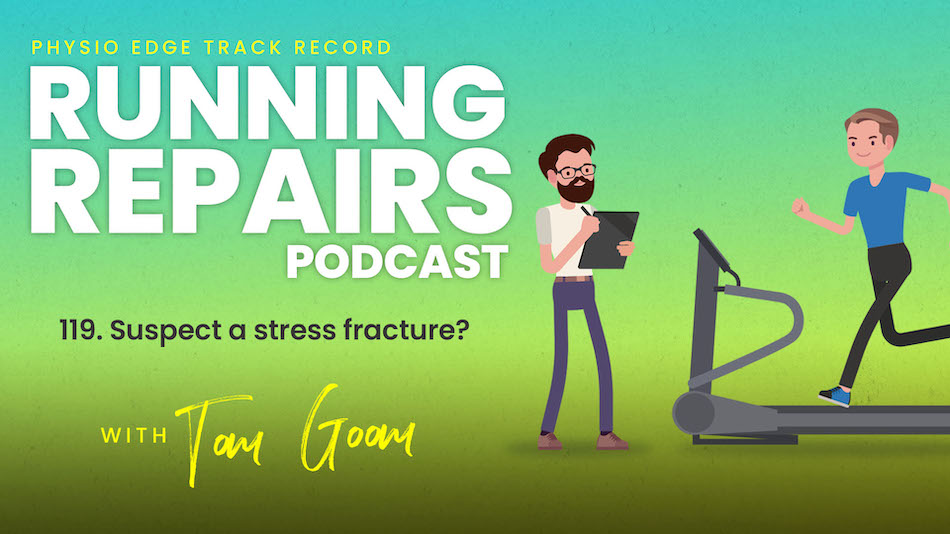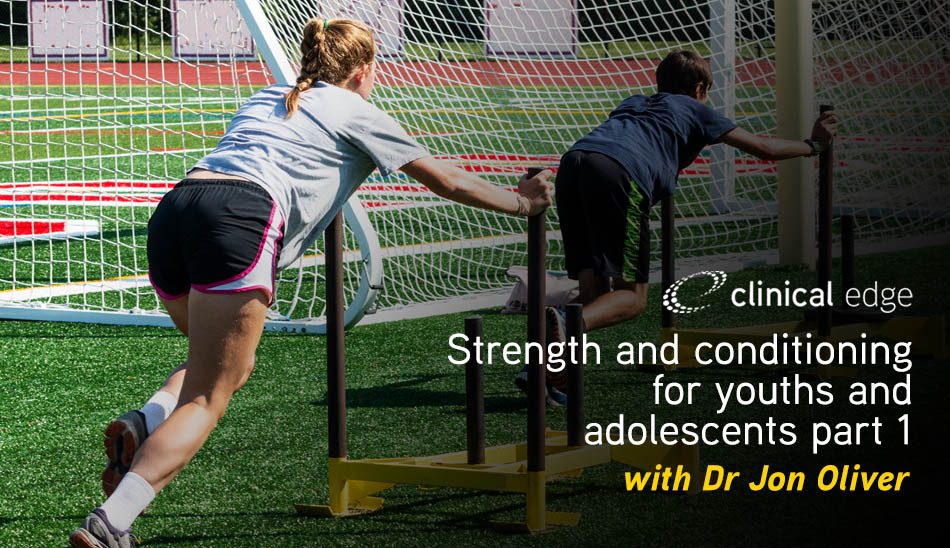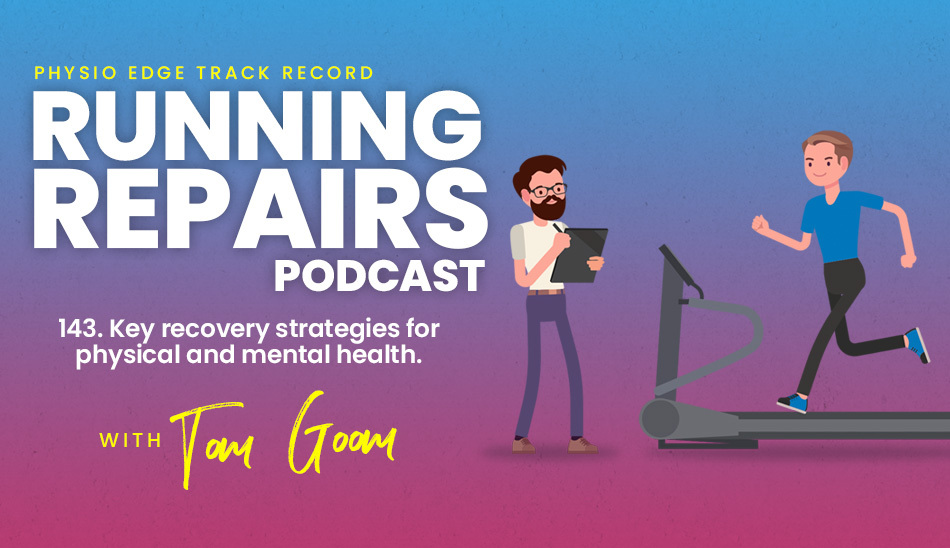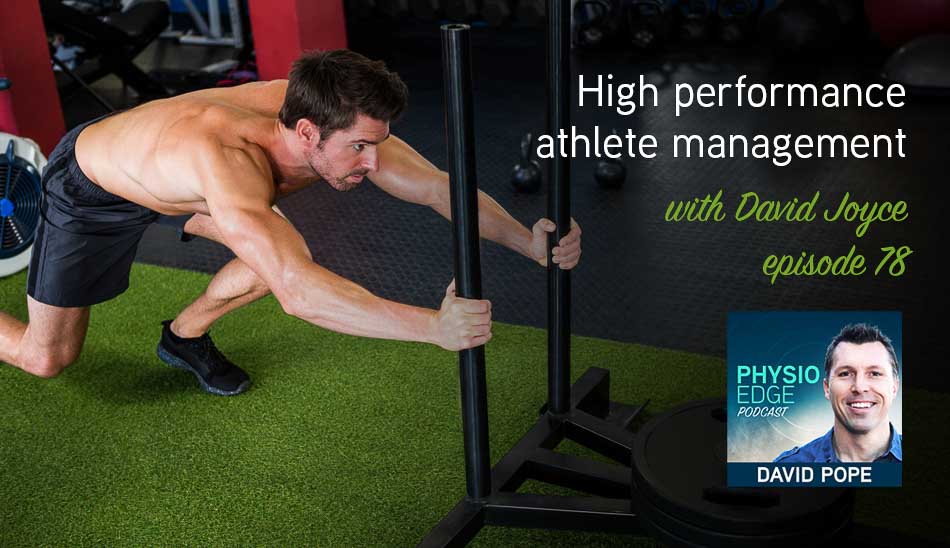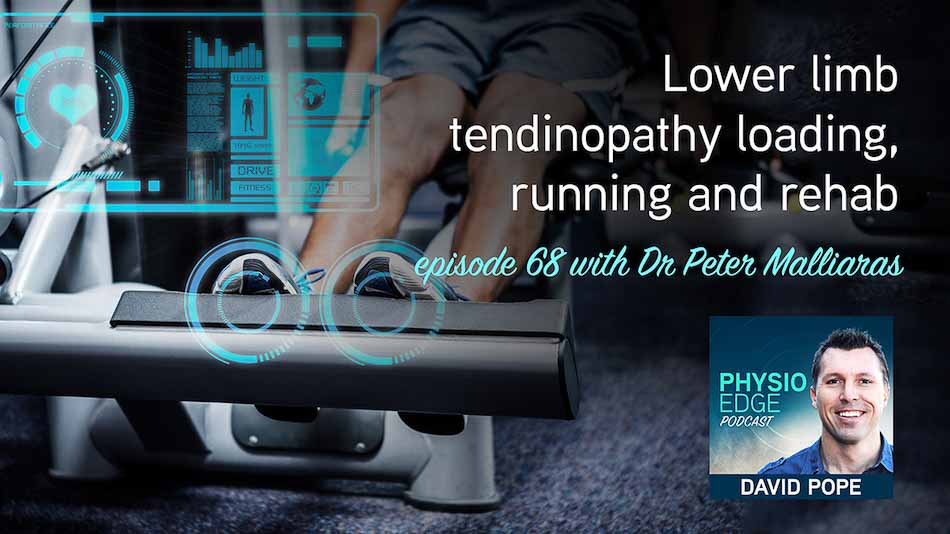
Physio Edge podcast with David Pope (David Pope at Clinical Edge)
Explorez tous les épisodes de Physio Edge podcast with David Pope
| Date | Titre | Durée | |
|---|---|---|---|
| 17 Sep 2020 | 106. Cervical radiculopathy, central sensitisation, achilles tendinopathy, hip & groin pain, and strength testing with Paula Peralta, Simon Olivotto, Nick Kendrick & David Toomey | 00:47:55 | |
Explore cervical radiculopathy, central sensitisation, achilles tendinopathy, hip & groin pain, & strength tests for athletes with Simon Olivotto, Dave Toomey, Paula Peralta & Nick Kendrick. The Clinical Edge Senior Physio Education & Presentation team and I sat down to answer Clinical Edge member questions, and we wanted to share this one with you, so you can benefit from it too. In this Q&A, we discussed: Cervical radiculopathy patients with an irritable presentation
Sensitivity to cold or ice
Calf & achilles strengthening
Hip joint pain and the acetabular labrum
Strength assessment & screening of athletes
How can you make sense of pain? How can you describe pain to your patients in a way that makes sense, and doesn’t tell them “it’s all in your head”? Find out how to improve your confidence with acute and persistent pain in the upcoming “Making sense of pain” module. Warning: Contains swearing. Links associated with this episode:
Articles associated with this episode: | |||
| 24 Feb 2022 | 137. Acute AC joint injury imaging, rehab & recovery. Physio Edge Shoulder Success podcast with Jo Gibson | 00:29:26 | |
Do your acute ACJ injury patients require surgery, or can they be managed conservatively with a rehab program? Find out in this podcast as Jo Gibson (Upper Limb Rehabilitation Specialist Physio) reveals how to grade patients’ acute ACJ injuries, help patients decide on surgery or conservative management, and rehab your patients effectively. Click here for the free webinar with Jo Gibson “Rotator cuff revealed! Rehab & reasoning”. Free trial Clinical Edge membershipUse a fresh approach to your musculoskeletal and sports injury treatment with a free trial Clinical Edge membership at clinicaledge.co/freetrial Links associated with this episode:
| |||
| 23 Nov 2015 | 042. Treatment of Plantaris & Achilles Tendinopathy with Seth O’Neill | 00:28:08 | |
In Episode 41 of the Physio Edge podcast, Dr Christoph Spang and I discussed how Plantaris may play a role in Achilles tendinopathy. In this episode of the Physio Edge podcast, I discuss with Seth O’Neill how you can identify Plantaris involvement in your patients, and adjust and progress your conservative treatment of Achilles pain and tendinopathy with Plantaris involvement. Seth O'Neill and I discuss:
Links of Interest
| |||
| 02 Jun 2023 | 155. Stingers, burners & shoulder instability in sport. Physio Edge Shoulder Success podcast with Jo Gibson | 00:25:58 | |
Stingers or burners are a burning or stinging pain, often with some paraesthesia and occasionally weakness, often occurring in impact sports such as rugby or American football. When your patients present with neck and arm symptoms, how can you differentiate a stinger or burner from a C/sp fracture, discogenic symptoms or nerve root compression, which all require very different treatment? How should you manage patients with one-off or repeated stingers or burners? Find out in this podcast with Jo Gibson (Upper Limb Rehabilitation Specialist Physio). The handout for this podcast consists of a transcript, summary and articles referenced in the podcast. Click here for the free webinar with Jo Gibson “Rotator cuff revealed! Rehab & reasoning”. Free trial Clinical Edge membershipUse a fresh approach to your musculoskeletal and sports injury treatment with a free trial Clinical Edge membership at clinicaledge.co/freetrial Links associated with this episode:
Articles associated with this episode:
Chapters:
| |||
| 06 Sep 2018 | 083. Running gait retraining, strengthening, glutes & ITB syndrome. Q&A with Tom Goom | 00:59:17 | |
What are the key components when assessing and treating runners? Should your treatment of running injuries focus on glutes? How can your runners schedule their training to improve recovery? Physiotherapists Tom Goom and David Pope answer your questions on how to assess and treat patients with running-related injuries, including:
Free running injury assessment & treatment video series available nowLinks associated with this episode:
Other episodes of interest:
| |||
| 26 Mar 2015 | 035. Know Pain with Mike Stewart | 01:26:53 | |
Persistent pain can be a challenge, but also enjoyable to treat. In this episode of the Physio Edge podcast, Mike Stewart and I focus on specific examples and case studies of patients with complex or persistent pain, how you may approach persistent pain patients, explain their pain, use metaphors and explanations so they understand it, and help guide them through the recovery process. Mike and I get into the details on:
Links of Interest Clinical Edge discounts for Undergraduate Physio students available by emailing verification of your student status to info@clinicaledge.co | |||
| 10 Jun 2015 | 037. Pilates beyond low back pain with Lana Johnson | 01:26:05 | |
Pilates is commonly known and used for rehabilitation of persistent low back pain, however Pilates principles and equipment can also be used for assessment and treatment of pain beyond the pelvis and lumbar spine. In episode 37 of the Physio Edge podcast, Lana Johnson, a former dancer and a Physiotherapist from BPS Tensegrity in Sydney and I discuss how you can use Pilates for knee and shoulder pain, as well as:
Links of Interest | |||
| 20 Nov 2015 | 041. The role of Plantaris in mid portion Achilles Tendinopathy with Dr Christoph Spang | 00:32:09 | |
Plantaris tendinopathy and compression of Plantaris on the Achilles has been shown to play a role in some cases of Achilles Tendinopathy, slowing down their rate of rehabilitation progress. Dr Christoph Spang is a Biologist and Sports Scientist, and completed a PhD on “The plantaris tendon in relation to the Achilles tendon in midportion Achilles tendinopathy”. In this podcast we discuss the interaction of Plantaris in patients with midportion Achilles Tendinopathy, including:
Links of Interest Get your free access to videos on Lower Limb Tendinopathy Dr Christoph Spang’s PhD Thesis Dr Christoph Spang on Research Gate Out very soon…. Conservative management of Plantaris involvement in Achilles Tendinopathy with Seth O’Neill | |||
| 09 Feb 2018 | 077. Anterior shoulder pain, long head of biceps tendon pathology and SLAP tears with Jo Gibson | 01:21:45 | |
The long head of biceps tendon and superior labrum can get a hard time in throwing athletes and patients that fall on their arm or shoulder. This can result in long head of biceps tendon pathology or SLAP tears, and cause ongoing shoulder pain. A lot of our shoulder tests are non-specific, and are unable to identify particular structures that are irritated or painful in the shoulder. In the case of the long head of biceps (LHB) tendon and slap tears, there are a few useful tests that in combination with a good history can help you identify when the structures are involved in your patient's shoulder pain. In episode 77 of the Physio Edge podcast, Jo Gibson, Shoulder Specialist Physio and David Pope discuss anterior shoulder pain, LHB pathology and SLAP tears. You will discover:
Podcast handoutFree video series “Frozen shoulder assessment & treatment” with Jo GibsonShoulder: Steps to Success online course with Jo GibsonImprove your assessment and treatment of shoulder pain with the Shoulder: Steps to Success online course with Jo Gibson, now available for enrolment at clinicaledge.co/shouldersuccess Links associated with this episode:
Articles associated with this episode:
Exercise videosOther episodes of interest: | |||
| 13 Sep 2018 | 084. Running injury treatment - tendinopathy, MTSS, total hip replacement & high BMI patients. Q&A with Tom Goom | 01:16:49 | |
How can you manage lower limb tendinopathy in your patients that like to run? Can runners with medial tibial stress syndrome (MTSS) continue to run? Can patients with high BMI or following total hip replacement run? Physiotherapists Tom Goom and David Pope answer your questions on how to assess and treat patients with running-related injuries in this Q&A conducted live, including:
Free running injury assessment & treatment video series available nowLinks associated with this episode:
Other episodes of interest:
| |||
| 19 May 2023 | 154. Hip dysplasia key signs and symptoms. Physio Edge Track record: Running repairs podcast with Tom Goom | 00:15:40 | |
Hip dysplasia is a commonly missed cause of hip and groin pain, catching, clicking, locking or popping, resulting from lack of coverage of the femoral head by the acetabulum. How can you identify hip dysplasia in your hip or groin pain patients, and avoid misdiagnosing it as iliopsoas or adductor related groin pain? What signs and symptoms will your patients reveal in their subjective history that’ll help you identify this condition? Find out the key signs and symptoms of hip dysplasia in this podcast with Tom Goom (Running Physio). Improve running injury assessment & treatment now with the Running Repairs Online course with Tom Goom at clinicaledge.co/runningrepairs Free running injury assessment & treatment video series available nowLinks associated with this episode:
Articles associated with this episode:
Chapters:
| |||
| 27 Oct 2017 | 071. Hamstring strengthening, lengthening and injury prevention with Dr David Opar | 00:58:17 | |
Hamstring injuries are the most common injury in football and AFL, and we can help our patients strengthen their hamstrings while significantly reducing their risk of injury with the right exercise program. What are the best exercises to use to strengthen and lengthen the hamstrings, and to prevent hamstring injury? In this Physio Edge podcast with Dr David Opar, we discuss hamstring injury prevention, which athletes will benefit, which exercises to use, the most important aspects of each exercise and how to incorporate these with your athletes. You will discover:
There has been a lot of great research performed recently on hamstring injuries, and to share this and help you with your hamstring injury patients, we have invited Dr David Opar to present at the upcoming Sports Injuries virtual conference in December 2017. You can access six free preconference sports injury presentations by CLICKING HERE. Related Links
Articles associated with this episode:
| |||
| 20 Oct 2014 | 030. CrossFit injuries with Antony Lo | 01:15:40 | |
CrossFit is a very popular form of improving strength and fitness, and CrossFit athletes have a variety of common injuries. Training errors and the athlete’s biomechanics often contribute to these injuries, and identifying incorrect biomechanics and other contributing elements in their training is often the key to helping your patients recover from injury, train pain free and importantly for your patients, ultimately get stronger and fitter. In episode 30 of the Physio Edge podcast, David Pope discusses CrossFit injuries, training, biomechanics and injury recovery with Antony Lo. Antony is a Musculoskeletal Physiotherapist with a number of clinics within CrossFit gyms across Sydney, and a large proportion of his patient population are CrossFit athletes. In this podcast Antony and David explore:
Links of Interest | |||
| 09 Apr 2012 | 012. Plantar fascia, achilles tendinopathy and nerve entrapments with Russell Wright | 00:38:25 | |
David Pope and Russell Wright talk about everything to do with feet and ankles. Plantar Fascia and Achilles Tendinopathy are conditions that need good differential diagnosis and specific tailored treatment programs, especially in runners, and in this episode we chat about how you can get the best results with these patients. We cover:
(Warning: this podcast has occasional explicit language) Links of interest | |||
| 13 Mar 2023 | 152. When should patients permanently stop running? Physio Edge Track record: Running repairs podcast with Tom Goom | 00:18:44 | |
Free running injury assessment & treatment video series available nowLinks associated with this episode:
Chapters:
| |||
| 21 Apr 2017 | 057. Advanced Running Tests & Optimising Performance with Tom Goom | 00:30:13 | |
Helping our running patients recover and return to running following injury is our primary rehab priority, however we may also have the opportunity to help improve their running performance. Runners are often motivated by improving their speed, performance and times, and incorporating these goals into their rehab can increase motivation and exercise compliance. How then can we help our patients to improve their performance when returning from an injury? Find out in this episode of the Physio Edge podcast with Tom Goom You will also discover:
Free running injury assessment & treatment video series available nowLinks of Interest | |||
| 24 Nov 2017 | 074. Hip pain and femoroacetabular impingement FAI with Dr Joanne Kemp | 00:59:26 | |
Femoroacetabular impingement (FAI) may contribute to hip and groin pain, buttock pain, pelvic or low back pain and referred pain into the thigh. Is conservative management effective in patients with FAI, or is surgery required? If we can treat FAI conservatively, what is the best treatment, and how can you tailor your treatment to your individual patients? In episode 74 of the Physio Edge podcast with Dr Joanne Kemp you will discover:
Sports Injuries virtual conference presentation As mentioned in this episode Joanne will be part of the Sports Injury virtual conference. Her pre conference presentation will discuss FAI and the diagnostic process in more detail. Her subsequent conference presentation will be available on 9-10 December 2017, with access for up to 12 months following the conference, and will discuss:
Enrol on the 2017 Sports Injuries virtual conference by CLICKING HERE Links associated with this episode:
Articles associated with this episode:Other episodes of interest: | |||
| 12 Jun 2023 | 156. 3 types of hip dysplasia and how to identify them. Physio Edge Track record: Running repairs podcast with Tom Goom | 00:15:37 | |
Hip dysplasia is a commonly missed cause of hip and groin pain. In this podcast, which is part 2 in the 3 part series with Tom Goom (Running Physio), you’ll discover three types of hip dysplasia that will cause different symptoms and need different treatment (based on Wilkins et al. 2017), how to identify each type, and common exercises and a treatment approach that may be stirring up your patients hip and groin pain. Improve running injury assessment & treatment now with the Running Repairs Online course with Tom Goom at clinicaledge.co/runningrepairs Free running injury assessment & treatment video series available nowLinks associated with this episode:
Article associated with this episode:
Chapters:
| |||
| 13 Mar 2020 | 099. Upper traps - are they really a bad guy with Jo Gibson | 00:19:33 | |
Patients with shoulder pain, rotator cuff tears and nerve injuries can often be seen shrugging their shoulder while they lift their arm, appearing to overuse their upper fibres of trapezius. Surface EMG research has shown increased activity in UFT in shoulder pain and whiplash patients. To add to this, patients get sore upper traps, and can be adamant that they need regular massage of their upper fibres of trapezius (UFT). We seem to have plenty of evidence that we need to decrease UFT muscle activity, and help this by providing exercises to target the middle and lower traps. Is this really the case? Are the upper traps really a bad guy, or a victim caught in the spotlight? Do we need to decrease upper traps muscle activity to help our patients shoulder or neck pain? Or perhaps counter-intuitively, do we need to strengthen upper traps and help them to work together with the surrounding muscles? In this podcast, Jo Gibson (Clinical Specialist Physio) explores the evidence around the upper fibres of trapezius, and implications on your clinical practice. You’ll discover:
Download this episode now to improve your treatment of shoulder and neck pain. Podcast handoutFree video series “Frozen shoulder assessment & treatment” with Jo GibsonShoulder: Steps to Success online course with Jo GibsonImprove your assessment and treatment of shoulder pain with the Shoulder: Steps to Success online course with Jo Gibson, now available for enrolment at clinicaledge.co/shouldersuccess Links associated with this episode:
Articles associated with this episode:
| |||
| 19 Jul 2018 | 081. How to treat ankle syndesmosis injuries with Chris Morgan | 01:14:22 | |
Ankle syndesmosis injuries following forced ankle dorsiflexion and lateral rotation of the foot require very specific management and rehabilitation to achieve great treatment outcomes. If you approach management of ankle syndesmosis injuries in the same manner as a lateral ankle ligament injury it will likely result in long term pain and dysfunction for your patients. In the previous episode of the Physio Edge podcast - How to assess ankle syndesmosis injuries, Chris Morgan and David Pope explored how to assess and diagnose ankle syndesmosis injuries (ASI). In this new Physio Edge podcast - "How to treat ankle syndesmosis injuries with Chris Morgan (Arsenal 1st Team Physiotherapist in the English Premier League), you will discover how to manage different grades of ASI, including: Grade 1 syndesmosis injury management
Grade 2 syndesmosis injuries
Unstable injuries - Grades 2b, 3 and 4
To accurately grade your patients ASI and prescribe the most appropriate rehab I strongly recommend listening to Physio Edge podcast episode 80 – How to assess ankle syndesmosis injuries with Chris Morgan prior to this podcast. Free webinar - Medial knee injuries with Chris MorganMedial knee injuries often occur in snow sports, or other sports when landing or being tackled. Different areas of the medial knee can be injured, including the deep, superficial, proximal or distal fibres of the MCL and medial knee. Depending on the injured structures, patients will either cope with a more aggressive treatment approach and early return to sport, or require a more conservative approach. How can you know the rehab approach your individual patient requires? In this free webinar with Chris Morgan (1st Team Physiotherapist with Arsenal FC), you will explore:
You can CLICK HERE to access this free webinar Links associated with this episode:
Articles associated with this episode:Other episodes of interest: | |||
| 20 Nov 2024 | 166. To tape or not to tape? Physio Edge Shoulder Success podcast with Jo Gibson | 00:24:32 | |
Taping: does it really help patients with shoulder pain, or is it just a brightly coloured placebo? In this thought-provoking episode of the Physio Edge Shoulder Success Podcast, Jo Gibson, upper limb rehab specialist at Rehab for Performance, unpacks the complexities of taping in shoulder rehabilitation. Drawing from the latest evidence and her extensive experience with shoulder pain, Jo shares two compelling case studies and whether taping was useful in the treatment of:
Jo examines the evidence behind taping, addressing key questions:
You’ll also gain insights into:
With a blend of evidence, clinical expertise, and practical examples, this episode offers a balanced view on the role of taping in physiotherapy. Whether you’re a seasoned clinician or early in your career, you’ll come away with fresh perspectives on using taping effectively in your practice. 🎧 Tune in now to discover when, why, and how to use taping to support your patients’ shoulder rehab success! Click on an image below to access these free resources from Jo Gibson and Clinical EdgeThe handout for this podcast consists of a transcript associated with this podcast. Click here for the free webinar with Jo Gibson “Rotator cuff revealed! Rehab & reasoning”. Shoulder: Steps to Success online course with Jo GibsonImprove your assessment and treatment of shoulder pain with the Shoulder: Steps to Success online course with Jo Gibson, now available for enrolment at clinicaledge.co/shouldersuccess Free trial Clinical Edge membershipUse a fresh approach to your musculoskeletal and sports injury treatment with a free trial Clinical Edge membership at clinicaledge.co/freetrial Links associated with this episode:
Chapters:
| |||
| 14 Dec 2018 | 086. "Sore but not stuffed" - understanding and explaining your patients pain with Dr Tim Mitchell and Dr Darren Beales | 01:24:07 | |
How do you answer your patient when they ask why they still have back or neck pain more than 12 months after an injury? Shouldn't their body have healed by now? Why does their knee pain get worse every time they do their exercises, put tape on it, go for a walk or just climb the stairs? What is going on? Why do they still have pain? How are you going to explain it, and how can you help them? In this podcast with Dr Tim Mitchell and Dr Darren Beales, you'll discover:
Links associated with this episode:
Resources associated with this episode:BJSM Podcast - Lorimer Moseley Pain Health - Pain Self-checks Örebro Musculoskeletal Pain Questionnaire Örebro Musculoskeletal Pain Questionnaire Short Form Agency for Clinical Innovation - Best practice care for people with acute low back pain Other Episodes of Interest:PE 035 - Know pain with Mike Stewart Part 1 | |||
| 23 Oct 2020 | 107. Treatment of peripheral nerve sensitisation with Dr Toby Hall | 01:22:52 | |
When your patient has neck and arm pain, or low back and leg pain from neural tissue pain disorders (NTPD) such as peripheral nerve sensitisation (PNS), how will you treat them? Pain associated with PNS can occasionally be mild and non-irritable, but more often than not, it’s severe, highly irritable, and easy to stir up. How can you provide treatment that settles their pain, without stirring them up? What advice, education, manual therapy and exercise will you provide to help improve symptoms and speed up recovery? What are the keys to success with PNS patients? In Physio Edge podcast 104, Dr Toby Hall and I discussed PNS, common symptoms, causes, questions to ask, and how to assess and diagnose PNS in your patients. In this followup podcast, the second in our two-part series, Dr Toby Hall and I take you through the next phase - how to treat PNS. You’ll discover:
CLICK HERE to get access to Sherlock Holmes and the sign of the four hypotheses with Nick Kendrick Links associated with this episode:
| |||
| 14 Jun 2019 | 091. Return to running - a guide for therapists with Tom Goom | 01:25:11 | |
When you love running or any other sport or activity, having to take time off with an injury is really frustrating. Your patients with an injury limiting their running will feel frustrated and be keen to keep running or get back to running as quickly as possible. We can make a huge difference in helping them return to running, but how do we do it? It would be pretty simple if we could hand all of our running injury patients a standard return to running table with a list of set running distances, and send them on their way to just follow the program. The trouble is, it doesn’t work that way in real life. Each of your patients will have different goals, and respond differently to rehab and increases in running, depending on their injury, irritability of their symptoms, their load tolerance, and a lot of factors. Since recipe-based approaches won’t work for a lot of patients, how can you tailor your rehab and guide your running injury patients through their return to running? In this podcast with Tom Goom, we’re going to help you return your patients to running as quickly as possible, know which factors you need to address in your rehab, and how to tailor your rehab to each of your patients. You will explore how to:
We will take you through four real patient case study examples so you can apply the podcast in your clinical practice, including:
Free running injury assessment & treatment video series available nowLinks associated with this episode:
Other episodes of interest:
| |||
| 02 Jan 2012 | 09. Lateral hip pain with Dr Alison Grimaldi | 00:53:29 | |
Patients regularly present for Physiotherapy with lateral hip pain. This is often aggravated by walking or standing, sidesleeping, performing hip stretches, and sitting, amongst other activities, and lateral hip pain can often mimic lumbar spine pathology. In this podcast, Alison and I discuss symptoms, assessment and treatment of an extremely common cause of lateral hip pain – Glute Med Tendinopathy (GMT), a condition which is often misdiagnosed as Trochanteric Bursitis. Some of the aspects we explore in this podcast are:
Links of interest | |||
| 29 Mar 2025 | 169. Beyond stretching: How to create lasting flexibility. Physio Edge Running repairs podcast with Tom Goom | 00:14:50 | |
🔗 Free Webinar Alert! Don't miss out on our free webinars for therapists on shin pain and Achilles tendinopathy in runners. Check the link in the description for more information. Free running injury assessment & treatment video series available nowImprove running injury assessment & treatment now with the Running Repairs Online course with Tom Goom at clinicaledge.co/runningrepairs. Get free access to the "Tricky tendons" infographic seriesUnlock the secrets of successful tendinopathy assessment and treatment with this free infographic series for therapists. Article associated with this episode:
Links associated with this episode:
| |||
| 09 May 2014 | 026. Gymnastics injuries with Kingsley Gibson | 01:22:44 | |
Gymnastics places some fairly unique demands on fairly young bodies. In episode 26 of the Physio Edge podcast, I discuss these demands with Kingsley Gibson, a Sports Titled Physiotherapist that has worked with Australian Diving, Synchronised Swimming, Shooting and Hockey teams at a number of Commonwealth and Olympic games, and works with elite gymnasts on a daily basis. For his services to gymnastics, in 2000 the Commonwealth awarded Kingsley with a Sports Services Medal. So Kingsley has a lot of experience to draw on, and we got into detail on a number of topics. In this podcast we discuss:
Links of Interest | |||
| 08 Mar 2017 | 055. Patellofemoral pain in runners with Brad Neal | 01:08:59 | |
Runners regularly present for treatment of anterior knee pain. Accurate diagnosis is vital in guiding your treatment, and helping your patients return to painfree running. In episode 55 of the Physio Edge podcast Brad Neal and David Pope discuss the different patient presentations with anterior knee pain, along with the subjective clues and objective tests that will help guide successful treatment. We also explore:
Links of Interest
Articles related to this episode:
Related resources
Physio Edge podcasts related to running injuries
| |||
| 16 Aug 2013 | 020. Womens health with Lori Forner | 01:19:07 | |
Is “peeing while you work out” in Crossfit or any other type of exercise ok? When does your patients pelvic floor need more muscle activation, and when does it need less work? Does Stress Urinary Incontinence (SUI) need addressing, and if so, how? In episode 20 of the Physio Edge podcast, I talk to Lori Forner, a Physiotherapist with a special interest in Women’s Health in Brisbane, Queensland, about all of these topics, and more, including:
Links of interest | |||
| 03 Mar 2021 | 111. How to identify shoulder pain from pelvic health issues. Case studies with Jo Gibson | 00:18:09 | |
When your female patient has shoulder pain, how can you identify if the cause is musculoskeletal, or related to women’s health issues? Find out in this video/podcast with Jo Gibson (Clinical Physiotherapy Specialist). You’ll explore two separate case studies of female shoulder pain patients with different diagnoses, that’ll help you discover:
Free webinar “5 common mistakes therapists make with shoulder pain, and what to do about them” with Jo GibsonRegister now for the free webinar "5 common mistakes therapists make with shoulder pain, and what to do about them" with Jo Gibson (Upper Limb Specialist Physio) Frozen and stiff shoulder assessment & treatment with Jo GibsonShoulder: Steps to Success online course with Jo GibsonImprove your assessment and treatment of shoulder pain with the Shoulder: Steps to Success online course with Jo Gibson, now available for enrolment at clinicaledge.co/shouldersuccess Links associated with this episode:
| |||
| 03 Mar 2022 | 138. How to treat patellar & achilles tendinopathy with Daniel Silvan | 01:24:37 | |
How can you treat patients with an achilles or patellar tendinopathy while they’re in the middle of a season or training for an event? Successful treatment often includes loading and strengthening the tendon, but how can you quickly identify the best exercises and load for each patient? Find out in this Physio Edge podcast as David Pope and Daniel Silvan (Head Physiotherapist at Aspire Academy, Aspetar) discuss how to choose the most effective exercises for your patients to successfully treat lower limb tendinopathy. Links associated with this episode:
| |||
| 23 Jul 2021 | 126. 3 signs of Plantaris involvement in Achilles Tendinopathy. Physio Edge Track record: Running repairs podcast with Tom Goom | 00:11:49 | |
When your patient with Achilles tendon pain isn’t progressing as well as you hoped, could Plantaris be implicated in their pain? Find out in this latest Physio Edge Track record: Running repairs podcast with Tom Goom, where you’ll discover:
Enjoy this new podcast with Tom Goom now to improve your treatment of Achilles tendon pain. Improve running injury assessment & treatment now with the Running Repairs Online course with Tom Goom at clinicaledge.co/runningrepairs Free running injury assessment & treatment video series available nowLinks associated with this episode:
| |||
| 19 Sep 2013 | 023. Lower limb tendinopathies with Dr Peter Malliaras | 01:34:49 | |
Tendinopathies are a hot topic, and there are lots of new developments in research and treatment. Dr Peter Malliaras, a Physiotherapist with a PhD studying tendinopathy, has a special interest in the treatment of tendinopathy, and treats elite basketball and volleyball, EPL football, rugby, and cricket players, the Royal Ballet and track and field athletes. Peter has also published numerous studies on tendinopathy. In this episode of the Physio Edge podcast, Peter and David Pope discuss
Links of Interest | |||
| 04 Mar 2014 | 025. Groin assessment with Dr Kristian Thorborg | 01:00:16 | |
How can you identify the reason your patient has groin pain and the structures that may be causing it? Groin pain is one of the most common issues in a lot of sports, particularly the football codes, and in episode 25 of the Physio Edge podcast, David Pope talks to Dr Kristian Thorborg about assessment of the groin. Some of the topics we discuss on this podcast include:
Links of interest | |||
| 12 Apr 2022 | 144. Proprioceptive rehab tools for shoulder pain? Physio Edge Shoulder Success podcast with Jo Gibson | 00:21:18 | |
Do we need to target “proprioception” in shoulder rehab with flexible or vibratory, blade-like rehab tools or water-filled pipes? Does the evidence support the use of these proprioceptive tools to improve patients shoulder pain, or are there different exercises that provide better results? Find out in this podcast with Jo Gibson (Upper Limb Rehabilitation Specialist Physio) and discover whether to include proprioceptive treatment tools in your patients shoulder rehabilitation programs. The handout for this podcast consists of articles referenced in the podcast. There is no additional transcript or handout available. Click here for the free webinar with Jo Gibson “Rotator cuff revealed! Rehab & reasoning”. Free trial Clinical Edge membershipUse a fresh approach to your musculoskeletal and sports injury treatment with a free trial Clinical Edge membership at clinicaledge.co/freetrial Links associated with this episode:
Articles associated with this episode:
| |||
| 23 Jun 2016 | 047. Rotator cuff tendinopathy with Dr Chris Littlewood | 01:17:49 | |
The rotator cuff and rotator cuff tendons are often involved in shoulder pain, and targeted with our treatment. Dr Chris Littlewood is a Physio and senior research fellow at the University of Sheffield, and spends a large portion of his time studying and treating shoulder pain, including rotator cuff tendinopathy. In this episode, Chris and I discuss how to identify rotator cuff tendinopathy and other types of shoulder pain, and how you can direct your treatment for rotator cuff tendinopathy. We also explore:
Links of interest Enrol on the free webinar with Dr Chris Littlewood Download the handout from this podcast Subscribe to the podcast free on iTunes Dr Chris Littlewood on Twitter Webinar with Tom Goom on Bone stress injuries | |||
| 03 Mar 2023 | 151. Does strength training reduce running injury risk? Physio Edge Track record: Running repairs podcast with Tom Goom | 00:12:11 | |
Will strength training help your patients reduce their risk of running injury and improve their running performance? Find out what the latest research reveals in this Physio Edge Track record: Running repairs podcast with Tom Goom (Running Physio), as you discover:
Improve running injury assessment & treatment now with the Running Repairs Online course with Tom Goom at clinicaledge.co/runningrepairs
Free running injury assessment & treatment video series available nowLinks associated with this episode:
Article associated with this episode:
Chapters:
| |||
| 24 May 2017 | 062. How to treat plantar fasciopathy in runners with Tom Goom | 00:41:29 | |
How can you treat plantar fasciopathy? How can you return your plantar fasciopathy patients to activity and running? When can they run without aggravating their pain? In episode 62 of the Physio Edge podcast, Tom Goom and David Pope help you discover exactly how you can get great treatment outcomes with plantar fasciopathy. You will discover:
This podcast follows on from Physio Edge 060 Plantar fasciopathy in runners with Tom Goom and Physio Edge 061 How to assess & diagnose plantar fasciopathy in runners with Tom Goom Free running injury assessment & treatment video series available nowLinks of Interest
Related posts
Research associated with this episode | |||
| 06 Sep 2011 | 03. Rugby, rehab and return to sport with Andrew Ryan | 00:34:52 | |
Andrew Ryan is a Sports Physio with the Australian Qantas Wallabies, and in this weeks episode Andrew and I chat about acute injury management, player screening, on-season treatment, corks, adductors. Some great insights into elite sports management. This podcast is brought to you by Physio Edge, hosted by David Pope, and sponsored by Clinical Edge.
Links of interest
| |||
| 03 Nov 2017 | 072. Accelerated hamstring injury rehabilitation exercise selection and progressions with Jack Hickey | 01:16:50 | |
Injured athletes like to recover and return to play as quickly as possible, and we need to balance return to play against impaired strength, performance and risk of reinjury. Initial injury rehabilitation often commences with isometric exercises, progressing into concentric/eccentric style exercises when isometric tests are pain-free. Finally high load eccentric exercises such as the Nordic hamstring are introduced for their positive effects of increased strength, fascicle length and reduced injury risk. High level and eccentric exercises are often avoided in the early stages of rehab, for fear of aggravating the injury. What if we could commence higher-level and eccentric exercises safely at an earlier stage? Would this impair or accelerate your patients' recovery? In this podcast with Jack Hickey, currently completing a PhD with the QUT/ACU hamstring injury research group, we explore an accelerated hamstring injury rehabilitation program, and how this can be implemented with your patients. You will discover:
Links associated with this episode:
Other episodes of interest:
Articles associated with this episode:
| |||
| 29 Nov 2024 | 167. Bones, them strong bones: How to use bone loading programs. Physio Edge Running repairs podcast with Tom Goom | 00:21:36 | |
Bone strength and density are vital in your running and sporting patients who can experience bone stress injuries (BSI’s), and also as patients get older and more vulnerable to falls and fractures. How can you improve bone strength in patients following a bone stress injury such as Medial Tibial Stress Syndrome or stress fractures, or in other patients that you’d like to improve bone density or strength? Traditional approaches to strength and conditioning may not always address the needs of your patients recovering from bone stress injuries. That’s where bone loading programs come in—a targeted strategy to help prepare bones for impact, improve power, and support a return to sport. In this episode, Tom Goom (Running Physio) dives into the research and how to use a bone loading program to stimulate bone adaptation. In this podcast, you’ll discover:
Tom also shares insights on identifying readiness for impact exercises, managing patient expectations, and adjusting programs for individual needs. You’ll leave this episode equipped with actionable strategies to help patients safely and effectively return to sport while supporting their bone health. If you’re a clinician or physiotherapist looking for practical solutions to manage bone stress injuries or improve bone density, this podcast is packed with valuable information you can apply in your practice right away. 🔗 Free Webinar Alert! Don't miss out on our free webinars for therapists on shin pain and Achilles tendinopathy in runners. Check the link in the description for more information. Free running injury assessment & treatment video series available nowImprove running injury assessment & treatment now with the Running Repairs Online course with Tom Goom at clinicaledge.co/runningrepairs. Get free access to the "Tricky tendons" infographic seriesUnlock the secrets of successful tendinopathy assessment and treatment with this free infographic series for therapists. Article associated with this episode:Links associated with this episode:
Chapters:
| |||
| 10 Feb 2022 | 133. How to assess and treat calcaneal stress fractures. Physio Edge Running Repairs podcast with Tom Goom | 00:17:57 | |
Calcaneal bony stress injuries or fractures are often misdiagnosed and incorrectly treated as insertional Achilles tendinopathy or plantar heel pain, leading to worsening pain and poor recovery. In this podcast with Tom Goom (Running Physio), hosted by Clinical Edge, discover how to accurately assess and effectively treat patients with calcaneal bony stress injuries or fractures. Improve running injury assessment & treatment now with the Running Repairs Online course with Tom Goom at clinicaledge.co/runningrepairs The handout for this podcast is an article referenced in the podcast. There is no additional transcript or handout available. Free running injury assessment & treatment video series available nowLinks associated with this episode:
Article associated with this episode:
| |||
| 22 Jul 2021 | 125. Cross education to improve shoulder strength. Physio Edge Shoulder success podcast with Jo Gibson | 00:20:35 | |
Immobilisation following a humeral fracture or shoulder surgery quickly results in muscle atrophy and decreased shoulder strength and proprioception. How can you limit strength deficits that develop while patients are in a sling? During this period of immobilisation, cross education (CE) can help retain shoulder strength. This improved shoulder strength and proprioception after the immobilisation period concludes may enable a faster return to work, high load activities or sport. What is CE, and how can you use it in your treatment? Find out in this podcast with Jo Gibson (Clinical Physiotherapy Specialist), and discover:
Improve your rehab of post-op, post-fracture and immobilised patients now with this podcast. Free webinar “5 common mistakes therapists make with shoulder pain, and what to do about them” with Jo GibsonRegister now for the free webinar "5 common mistakes therapists make with shoulder pain, and what to do about them" with Jo Gibson (Upper Limb Specialist Physio) Frozen and stiff shoulder assessment & treatment with Jo GibsonShoulder: Steps to Success online course with Jo GibsonImprove your assessment and treatment of shoulder pain with the Shoulder: Steps to Success online course with Jo Gibson, now available for enrolment at clinicaledge.co/shouldersuccess Links associated with this episode:
| |||
| 22 Apr 2022 | 145. How to choose exercises that improve patients pain with David Toomey | 00:24:07 | |
Exercise is a vital component in our rehabilitation of patients with musculoskeletal pain and injuries. How can you, as a Physiotherapist, Physical therapist or health professional, choose exercises for your patients that improve their pain, strength, control, confidence and the ability to reach their goals, without stirring up their pain? Find out in this podcast with David Pope (APA Titled Sports & Musculoskeletal Physio) and David Toomey (NZ Titled Musculoskeletal Physio & PhD Candidate) from the Clinical Edge education & presentation team. Links associated with this episode:
| |||
| 21 Aug 2023 | 158. Hip dysplasia treatment. Physio Edge Track record: Running repairs podcast with Tom Goom | 00:24:12 | |
How can you successfully treat hip pain and instability associated with your patients’ hip dysplasia? Find out the eight critical steps to excellent results with hip dysplasia in this podcast, which is part 3 in this three-part podcast series with Tom Goom (Running Physio). Free running injury assessment & treatment video series available nowLinks associated with this episode:
Articles associated with this episode:Chapters:
| |||
| 12 Oct 2022 | 147. Knee osteoarthritis (OA) assessment, rehab & overcoming patient fears with Dr JP Caneiro | 00:58:57 | |
Patients with knee osteoarthritis (OA) often have a sensitive and painful knee, and are reluctant to use or exercise it, feeling that it’ll just further “wear out” the joint. In this podcast with Dr JP Caneiro (Specialist Sports Physiotherapist, PhD) you’ll discover how to assess and rehabilitate knee OA patients, including:
Enjoy this podcast with Dr JP Caneiro, hosted by David Pope and Clinical Edge now to improve your treatment of knee OA. Links
Related podcasts
Chapters:
| |||
| 12 Mar 2021 | 114. Paediatric shoulder injuries. Physio Edge Shoulder success podcast with Jo Gibson | 00:36:08 | |
When paediatric or skeletally immature patients have shoulder pain, what diagnoses should be kept in mind? What are the potential diagnoses following trauma, in overuse injuries or “little leaguers shoulder”? What assessment and imaging is required in these patients? Find out in this podcast/video with Jo Gibson (Clinical Physiotherapy Specialist), and explore:
Podcast handoutThe handout for this podcast consists of articles referenced in the podcast. There is no additional transcript or handout available. Free webinar “5 common mistakes therapists make with shoulder pain, and what to do about them” with Jo GibsonRegister now for the free webinar "5 common mistakes therapists make with shoulder pain, and what to do about them" with Jo Gibson (Upper Limb Specialist Physio) Frozen and stiff shoulder assessment & treatment with Jo GibsonShoulder: Steps to Success online course with Jo GibsonImprove your assessment and treatment of shoulder pain with the Shoulder: Steps to Success online course with Jo Gibson, now available for enrolment at clinicaledge.co/shouldersuccess Links associated with this episode:
Articles associated with this episode:
| |||
| 15 Dec 2011 | 08. Golf injuries and performance improvement with Matt Green | 00:39:19 | |
All golfers want to hit as far as Tiger Woods, but without the injuries. How can you treat the injuries in your golfing patients, prevent further injury and improve their “coachability” and performance? Golfers regularly need Physio treatment for injuries like tendinopathy around the elbow, low back and neck pain, and plenty of other injuries. In episode 8 of the Physio Edge podcast, I chat with Matt Green of High Performance Golf about
If you treat golfers, or would like to treat more golfers, get stuck into this episode free on iTunes, and brought to you by the podcast sponsor Clinical Edge. Links of interest | |||
| 11 Oct 2019 | 094. Strength training treating knee osteoarthritis with Dr Claire Minshull | 01:19:17 | |
Have you ever wanted to improve your patients strength, but weren't sure about the best way to go about it? What exercises should you use? How many sets, reps and sessions per week should you ask your patients to complete? Strength levels often start to decline with pain or after an injury, from neuromuscular inhibition, swelling, inflammation or joint laxity (Hopkins & Ingersoll, 2000; Rice & McNair, 2010). Unfortunately strength doesn't always return as quickly as it disappears, and neuromuscular inhibition can carry on (Roy et al, 2017). In this podcast with Dr Claire Minshull, we dive into the role of strength and conditioning in rehab, and explore:
Dr Claire Minshull also presented two online courses for Clinical Edge members to further develop your strength & conditioning skills and confidence. You can get access to these online courses with your free trial membership. What is in Dr Claire Minshull's webinar?
Links associated with this episode:
Articles associated with this episode: | |||
| 19 Dec 2013 | 024. Thoracic ring approach with Dr Linda-Joy (LJ) Lee | 01:20:23 | |
The thorax is often considered stiff and stable by Physiotherapists and manual therapists, and precious little of our undergrad or postgrad training incorporates motor control of this area. Is it really important? In episode 24 of the Physio Edge podcast, Dr LJ Lee and David Pope explore the function of the thorax, the impact the thorax can have, not only on thoracic pain, but also on other parts of the body. We discuss the Thoracic Ring Approach™ created by LJ, which incorporates manual techniques to assess and treat the thoracic rings, and integrates motor control training for this area. In this podcast you will learn:
Links of Interest Have an awesome holiday, and review the Physio Edge podcast on iTunes Physio Edge podcast episode 2 – “Analysing movement, and clinical expertise or research” with LJ | |||
| 09 May 2017 | 060. Plantar fasciopathy in runners with Tom Goom | 00:34:59 | |
Plantar fasciopathy is one of the most common causes of foot pain in runners and non-athletes alike. Our understanding of plantar fasciopathy (PF) pathology and treatment has progressed significantly over recent years. In episode 60 of the Physio Edge podcast, Tom Goom and David Pope explore PF, what we know about it, and how you can explain the condition, treatment and recovery process to your patients. You will discover:
Free running injury assessment & treatment video series available nowLinks of Interest
Research associated with this episode | |||
| 19 Feb 2015 | 034. Advanced ACL rehab with Enda King | 01:26:09 | |
The advanced stages of ACL rehabilitation are enjoyable to progress your patients through, and at the same time challenging to find the right exercises, and optimise the rate of progression through to return to training (RTT) and return to play (RTP). In this episode, Enda King from the Sports Surgery Clinic Dublin and David Pope discuss these later stages of rehabilitating your patients following an ACL Reconstruction. We discussed the prehabilitation and early stage ACL Rehab in the Physio Edge podcast episode 32, and episode 34 Enda and I cover in detail:
Links of interest | |||
| 03 Apr 2020 | 100. 5 practical strategies to improve your clinical reasoning & treatment results with David Toomey, Jordan Craig & Simon Olivotto | 01:22:33 | |
100 Physio Edge podcast episodes since I discovered a love of podcasts, and created the Physio Edge podcast to help Physio’s, Physical Therapists and other health professionals in their clinical practice with practical information from the leaders in different musculoskeletal and sports injuries. I really enjoy recording each podcast, helping you with your clinical challenges and hearing how the podcast has helped you with your patients. While recording each of these podcasts, I’ve noticed that one area Physiotherapy experts & leaders have in common is their well developed clinical reasoning. They use effective & efficient clinical problem solving to assess and treat their patients. How can you improve your clinical reasoning to more effectively assess and treat your patients? In this podcast with the new Clinical Edge Senior Physio education & presentation team - David Toomey (NZ based Musculoskeletal Physio), Jordan Craig (APA Titled Musculoskeletal & Sports Physio) and Simon Olivotto (Specialist Musculoskeletal Physiotherapist, FACP), you’ll explore:
Download this podcast now to improve your clinical reasoning and treatment results with these five practical strategies. Links associated with this episode:
| |||
| 29 Jan 2020 | 097. Anterior shoulder pain, long head of biceps and SLAP tears with Jo Gibson | 00:27:56 | |
Long head of biceps (LHB) tendinopathy and associated anterior shoulder pain can develop in patients that increase their lifting load eg moving house, overhead activities, activities that involve loaded shoulder extension and in throwing athletes. Patients may also develop long head of biceps tendon pain after a traumatic ACJ injury or SLAP tear. How can you identify and treat LHB tendinopathy? In this (video/podcast) with Jo Gibson, you’ll explore: What causes LHB tendinopathy?
LHB Anatomy & function
Patient features that help your diagnosis
Subjective history features that help your diagnosis
Objective testing & diagnosis
Rotator cuff tears & involvement in LHB
Imaging
How to treat LHB
Additional questions covered How are results after rotator cuff tears impacted by the rotator interval? Podcast handoutFree video series “Frozen shoulder assessment & treatment” with Jo GibsonShoulder: Steps to Success online course with Jo GibsonImprove your assessment and treatment of shoulder pain with the Shoulder: Steps to Success online course with Jo Gibson, now available for enrolment at clinicaledge.co/shouldersuccess Links associated with this episode:
Articles associated with this episode:
| |||
| 16 May 2019 | 090. Combating hand wrist injuries part 3 - Treatment with Ian Gatt | 01:22:45 | |
Squeezing a stress ball and strengthening with 0.5kg dumbells will only get you so far with your treatment of hand and wrist injuries, and soon enough you'll hit a wall with treatment results. How are you going to smash through that wall, and help your patients keep working or playing, or get back to work and sport? If you've felt limited with your hand and wrist treatment and exercises, you'll love the treatment approach and strengthening exercises from the third and final podcast in this series with Ian Gatt. In the previous two podcasts with Ian we explored how you can take a great history, assess and diagnose wrist and hand injuries. You discovered types of grip strength and how to perform low and high tech grip strength assessment. In this new podcast with Ian Gatt you will discover how to use your assessment findings to develop a treatment plan, and how to develop your patients hand and wrist strength, plus:
Ian works with GB Boxing, which involves helping boxers recover from hand, wrist and other injuries. This podcast is therefore boxer-centric, however there are a lot of specifics, exercises & principles in this podcast that you can use with your hand & wrist patients that have never picked up a pair of boxing gloves or hit a bag. Dive into this podcast, and pick up a lot of great ideas for your hand & wrist injury treatment. Links associated with this episode:
CLICK HERE for your spot on a free shoulder assessment webinar with Jo Gibson, available soon. Resources associated with this episode:Other Episodes of Interest: | |||
| 18 Jul 2024 | 164. Case study: Rotator cuff tear + arm symptoms. Physio Edge Shoulder Success podcast with Jo Gibson | 00:14:51 | |
Upper Limb Rehabilitation Specialist Jo Gibson explores an intriguing case of an 84-year-old man with a massive rotator cuff tear of the supraspinatus and partial subscapularis tear. Despite his long history of shoulder issues, he’s improving, but constant pain and intermittent numbness in his posterior arm and into his hand complicate the situation. In this podcast, you’ll explore:
Listen to this podcast now to improve your rehabilitation of shoulder & arm pain and rotator cuff tears. Free shoulder assessment infographic seriesThe handout for this podcast consists of a transcript and research articles referenced in this podcast. Click here for the free webinar with Jo Gibson “Rotator cuff revealed! Rehab & reasoning”. Free video series “Frozen shoulder assessment & treatment” with Jo GibsonImprove your frozen shoulder assessment and treatment now with Jo Gibson’s free video series at clinicaledge.co/shoulder Shoulder: Steps to Success online course with Jo GibsonImprove your assessment and treatment of shoulder pain with the Shoulder: Steps to Success online course with Jo Gibson, now available for enrolment at clinicaledge.co/shouldersuccess Free trial Clinical Edge membershipUse a fresh approach to your musculoskeletal and sports injury treatment with a free trial Clinical Edge membership at clinicaledge.co/freetrial Links associated with this episode:
| |||
| 12 Mar 2021 | 113. Massive rotator cuff tear rehab. Physio Edge Shoulder success podcast with Jo Gibson | 00:35:50 | |
What are the best rehab options for patients with an irreparable rotator cuff tear? Can we predict which patients will do well and how long rehab will take? Find out in this video/podcast with Jo Gibson (Clinical Physiotherapy Specialist), discussing rehab options, a patient case study and the latest evidence for massive rotator cuff tear (MRCT) rehab. Discover:
Podcast handoutThe handout for this podcast consists of articles referenced in the podcast. There is no additional transcript or handout available. Free webinar “5 common mistakes therapists make with shoulder pain, and what to do about them” with Jo GibsonRegister now for the free webinar "5 common mistakes therapists make with shoulder pain, and what to do about them" with Jo Gibson (Upper Limb Specialist Physio) Frozen and stiff shoulder assessment & treatment with Jo GibsonShoulder: Steps to Success online course with Jo GibsonImprove your assessment and treatment of shoulder pain with the Shoulder: Steps to Success online course with Jo Gibson, now available for enrolment at clinicaledge.co/shouldersuccess Links associated with this episode:
Articles associated with this episode:
| |||
| 08 Apr 2022 | 142. Shoulder SLAP tear assessment, diagnosis and treatment. Physio Edge Shoulder Success podcast with Jo Gibson | 00:26:26 | |
Traumatic superior labrum anterior to posterior (SLAP) tears can occur in contact athletes and other patients that land on their arm or shoulder, and in throwers and other athletes. Initial assessment and even MRI often miss or misdiagnose these injuries, leading to ongoing shoulder, long head of biceps tendon (LHBT) or ACJ pain. In this podcast with Jo Gibson (Upper Limb Rehabilitation Specialist Physio) you’ll discover how to identify patients with SLAP tears. You’ll explore which assessment tests can be used to diagnose and differentiate SLAP tears from other causes of shoulder pain, and which imaging modalities will actually identify SLAP tears. The handout for this podcast is an article referenced in the podcast. There is no additional transcript or handout available. Click here for the free webinar with Jo Gibson “Rotator cuff revealed! Rehab & reasoning”. Free trial Clinical Edge membershipUse a fresh approach to your musculoskeletal and sports injury treatment with a free trial Clinical Edge membership at clinicaledge.co/freetrial Links associated with this episode:
Article associated with this episode:
| |||
| 18 Oct 2018 | 085. How to rehab groin and lower abdominal pain in runners gym junkies with Andrew Wallis | 00:47:40 | |
Have you had patients that developed groin pain after getting a bit carried away with situps or abdominal exercises in the gym? Or have your patients developed lower abdominal pain after running or training that is causing them pain into hip extension? In this podcast with Andrew Wallis, Sports Physiotherapist with the St Kilda AFL team, we explore how you can treat patients that were a little too exuberant with their abdominal training or running, including:
Links associated with this episode:
Resources associated with this episode:
Other Episodes of Interest:
CLICK HERE to watch this online course with a free trial membership | |||
| 08 Feb 2024 | 160. ACL injuries with Zoe Russell | 00:53:03 | |
Join David Pope (APA Titled Musculoskeletal and Sports & Exercise Physio) and Zoe Russell (Specialist Sports Physiotherapist, FACP; APA Titled Musculoskeletal Physio) in the Physio Edge podcast as they explore how to assess, treat, and manage patients suffering from ACL injuries or suspected ACL injuries. You'll discover how to assess a patient with a suspected ACL injury, and criteria you can use to identify whether a patient may be suited to non-surgical management or is likely to require surgery. You'll also understand when immediate or delayed surgery is the best option, and how to guide patients through the decision-making process and different phases of rehab. Listen in to provide your ACL injury patients with the best treatment options. Links associated with this podcast
| |||
| 11 Dec 2017 | 075. Tendinopathy, imaging and diagnosis with Dr Sean Docking | 01:13:59 | |
Tendinopathy patients may present for treatment with an ultrasound or MRI report in hand, unsure how you can help them, or how they can possibly recover when they have so much tendon pathology. To add insult to injury, they may even have a partial tendon tear on their imaging report thrown into the mix. How do imaging results impact your treatment and your patient's recovery? Are the imaging findings relevant to their pain? In this Physio Edge podcast with Dr Sean Docking (Physiotherapist, PhD), you will explore what information imaging actually provides in your tendinopathy patients, how to explain imaging to your patients, and whether partial tendon tears identified on imaging will effect your treatment. You will also discover:
Links associated with this episode:
Articles associated with this episode:Alfredson. 2011. Midportion achilles tendinosis and the plantaris tendon Brown et al. 2011. The COL5A1 gene, ultra-marathon running performance and range of motion Docking et al. 2015. Tendinopathy: Is imaging telling us the entire story? Lieberthal et al. 2014. Asymptomatic achilles tendinopathy in male distance runners Other episodes of interest:PE 068 - Lower limb tendinopathy loading, running and rehab with Dr Pete Malliaris PE 042 - Treatment of Plantaris and achilles tedninopathy with Seth O’Neil PE 041 - Plantaris involvement in achilles tendinopathy with Dr Christoph Spang | |||
| 24 Feb 2023 | 150. Top tips for treating marathon runners. Physio Edge Track record: Running repairs podcast with Tom Goom | 00:20:47 | |
Marathon runners often come to us with pain, but also they need to build up their mileage in preparation for one of the most challenging events in endurance sport. They're trying to do more when their body may be telling them they need to be doing less. How do we manage their symptoms, and guide them up to the marathon itself? Find out in this podcast with Tom Goom (Running Physio). Improve running injury assessment & treatment now with the Running Repairs Online course with Tom Goom at clinicaledge.co/runningrepairs
Free running injury assessment & treatment video series available nowLinks associated with this episode:
Chapters:
| |||
| 18 May 2020 | 102. Stretching for shoulder pain - Is it time to put sleeper stretches to bed? with Jo Gibson | 00:26:34 | |
Do you include stretches in your treatment of shoulder pain? Have you ever identified a glenohumeral internal rotation deficit (GIRD) and used the "Sleeper stretch" to help improve internal rotation? Do stretches have any value for shoulder pain, or are there better treatment options? In this podcast, Jo Gibson (Clinical Physiotherapy Specialist) discusses how to differentiate true capsular stiffness from muscle stiffness, what information GIRD provides, and whether sleeper stretches for shoulder pain are a useful treatment. Jo explores the current research and clinical implications on your treatment, including:
Podcast handoutFree webinar “5 common mistakes therapists make with shoulder pain, and what to do about them” with Jo GibsonRegister now for the free webinar "5 common mistakes therapists make with shoulder pain, and what to do about them" with Jo Gibson (Upper Limb Specialist Physio) Frozen and stiff shoulder assessment & treatment with Jo GibsonShoulder: Steps to Success online course with Jo GibsonImprove your assessment and treatment of shoulder pain with the Shoulder: Steps to Success online course with Jo Gibson, now available for enrolment at clinicaledge.co/shouldersuccess CLICK HERE to get access to Sherlock Holmes and the sign of the four hypotheses with Nick Kendrick Links associated with this episode:
Articles associated with this episode:
| |||
| 05 Dec 2019 | 095. Sternoclavicular joint pain diagnosis, imaging & red flags with Jo Gibson | 00:33:43 | |
The sternoclavicular joint (SCJ) can cause pain locally, or refer into the neck and shoulder. With a relatively high incidence of serious and potentially life-threatening pathology at the SCJ, it’s important to diagnose the source of SCJ pain. In this (Facebook live/video/podcast) with Jo Gibson (Clinical Specialist Physiotherapist), you’ll discover:
Podcast handoutFree video series “Frozen shoulder assessment & treatment” with Jo GibsonShoulder: Steps to Success online course with Jo GibsonImprove your assessment and treatment of shoulder pain with the Shoulder: Steps to Success online course with Jo Gibson, now available for enrolment at clinicaledge.co/shouldersuccess Links associated with this episode:
| |||
| 13 Oct 2017 | 069. Adductor related groin pain stress fractures and nerve entrapment assessment diagnosis with Dr Adam Weir | 01:09:31 | |
Adductor related groin pain is the most common diagnosis for athletes with groin pain. In this episode of the Physio Edge podcast you will discover how to assess and diagnose adductor related groin pain, identify or exclude differential diagnosis including stress fractures, hip joint involvement, inguinal related groin pain and nerve entrapment. Dr Adam Weir is a Sports Physician with a PhD on groin pain, the lead author for the Doha agreement meeting on terminology and definitions in groin pain in athletes, who currently shares his time between the Aspetar sports groin pain centre and the Erasmus University Hospital Academic Centre for Groin Injuries in Holland. Adam will take you through exactly how to perform an assessment around the hip and groin, how to interpret your findings and how to explain your diagnosis to your patients. You will explore:
Links associated with this episode:
Articles associated with this episode: | |||
| 15 Jan 2012 | 010. Biomechanics of running with Blaise Dubois | 01:08:05 | |
Barefoot running has been sweeping the globe in the last few years, and as a Physio, which of your patients are best suited to this type of running technique. How does running technique relate to a runner’s pain and dysfunction, and really, what is the ideal running technique? In this podcast with Blaise Dubois – a Physiotherapist with a clinic, website and courses devoted to helping runners and Physiotherapists that treat runners, we chat about these topics, as well as:
Links of interest | |||
| 26 Aug 2021 | 130. Neck pain objective assessment & treatment part 2 with Prof. Gwendolen Jull | 01:31:27 | |
When assessing and treating neck pain patients, there are a lot of tests and treatments to choose from. If you choose treatments that aren’t suitable for your patient's presentation, your patient won’t progress, or worse, you’ll aggravate their symptoms. How can you thoroughly assess your neck pain patients, and use the information from your assessment to choose treatments that help improve their pain? In the first podcast with Specialist Musculoskeletal Physiotherapist, researcher and Emeritus Prof. Gwen Jull 121. Neck pain assessment, clinical reasoning & rehab. Physio Edge podcast with Prof Gwendolen Jull, we discussed questions to ask during your subjective history that help guide your neck pain assessment and clinical reasoning. In this followup podcast, discover how to accurately assess and effectively treat neck pain with Emeritus Prof. Gwen Jull, including: Objective examination (OE)
Successful treatment
CLICK HERE to get access to Cervical radiculopathy assessment & treatment case study Links associated with this episode:
| |||
| 05 Nov 2024 | 165. Busting hip pain myths with Mehmet Gem | 01:08:35 | |
Get free access to the "Tricky tendons" infographic seriesUnlock the secrets of successful tendinopathy assessment and treatment with this free infographic series for therapists. Links
Chapter markes:
| |||
| 15 Feb 2022 | 135. Rehab calf strain patients effectively. Physio Edge Track record: Running repairs podcast with Tom Goom | 00:24:17 | |
Calf strains are common in runners, footballers, dancers and other athletes. Discover how to assess, differentially diagnose and tailor your treatment of calf strains using the latest evidence in this podcast with Tom Goom (Running Physio). Improve running injury assessment & treatment now with the Running Repairs Online course with Tom Goom at clinicaledge.co/runningrepairs The handout for this podcast is an article referenced in the podcast. There is no additional transcript or handout available. Free running injury assessment & treatment video series available nowLinks associated with this episode:
Article associated with this episode:
| |||
| 25 Mar 2022 | 141. How to reduce patellofemoral pain & load. Physio Edge Track record: Running repairs podcast with Tom Goom | 00:17:49 | |
Patients with anterior knee pain may have pain with activities that load the patellofemoral joint (PFJ), such as squatting, going up or down stairs, and running. When is it important to offload patients PFJ during your rehab, to help settle their symptoms? How can you design a rehab program to improve your patients' knee pain? Find out in this podcast with Tom Goom (Running Physio) as you discover how to effectively offload and treat patellofemoral joint pain, exercises to include in rehab, and activities and exercises to reduce during your initial phases of treatment. Improve running injury assessment & treatment now with the Running Repairs Online course with Tom Goom at clinicaledge.co/runningrepairs Free running injury assessment & treatment video series available nowLinks associated with this episode:
Article associated with this episode: | |||
| 18 Aug 2017 | 067. Shoulder special tests and the rotator cuff with Dr Chris Littlewood | 01:10:00 | |
Shoulder pain can involve the rotator cuff, scapula, cervical spine, thorax, and other structures in this area. Recent research has also explored the role of patient beliefs and expectations on the outcomes of Physiotherapy for shoulder pain. Which factors are important in your shoulder pain patients? Can we identify the contributing factors to your patients shoulder pain? What information will you get from orthopaedic special tests during a shoulder examination? How can you improve your treatment results with your patient education? In this episode of the Physio Edge podcast, Dr Chris Littlewood and David Pope discuss shoulder pain, including:
This podcast adds to Physio Edge podcast 47 - Rotator cuff tendinopathy with Dr Chris Littlewood . Links of interest | |||
| 26 Jun 2012 | 014. Chronic low back pain with Peter O'Sullivan | 01:19:15 | |
What is contributing to your patients low back pain? How do you know when manual therapy, education, exercise, motor control programs, CBT or any other approach for chronic LBP will be helpful? In episode 14 of the Physio Edge podcast, Peter O’Sullivan and David Pope discuss chronic low back pain, Peter’s research into this area, and the approach of Peter and his team to getting over chronic low back pain. Some of the topics we dug into include:
Listen to it now, and subscribe free to the podcast in iTunes Links of interest
| |||
| 23 Sep 2011 | 04. Hip injuries and labral tears with Nichole Hamilton | 00:31:51 | |
Acetabular Labral tears in the hip are becoming more commonly diagnosed and operated on. In this episode, I chat to Nichole Hamilton, a Physio with a lot of experience treating hips, designing post-op arthroscopic hip protocols and lecturing about the hip. Some nice insights into hip injuries and diagnosing and treating labral tears. This week we talk about all sorts of issues around the hip, including:
I hope you enjoy this episode, please post your questions below, on www.physioedge.com.au and we would love you to give us a review on iTunes Links of interest | |||
| 15 Jun 2017 | 065. Differential diagnosis of calf pain in runners with Tom Goom | 00:40:35 | |
When your patients present with calf pain, do you have a clear understanding of the likely causes and potential differential diagnosis? Do they have any red flags that require urgent medical attention? What other issues besides a calf tear could be causing their calf pain? It's time to brush off those diagnostic skills, to understand the types of calf pain you can treat, and which patients you need to refer on immediately. In this podcast with Tom Goom and David Pope, we are going to break it down for you, so you are confident in assessing and diagnosing the different types of calf pain. You will understand:
Free running injury assessment & treatment video series available nowLinks of Interest
Related posts
Research associated with this episode
| |||
| 23 Jan 2015 | 033. How to treat anterior knee pain with Kurt Lisle | 01:16:10 | |
Anterior knee pain can occur in your elite sports patients right through to office workers and weekend warriors. In this podcast with Kurt Lisle, we discuss anterior knee pain, the causes, how to diagnose the source of the pain, and the best ways to treat and rehabilitate these patients. Kurt Lisle is the Australian Socceroos Physio and co-owner of The Knee Joint Physio in Queensland. Kurt and I discussed acute knee injuries on the Physio Edge podcast in episode 29, and I really wanted to get Kurt back on the podcast to discuss the anterior knee. In this fantastic, detailed episode of the Physio Edge podcast, Kurt and I explore:
Links of Interest | |||
| 10 Oct 2016 | 051. Lateral knee and LCL injuries with Matt Konopinski | 01:09:04 | |
Lateral knee injuries are common in football with landing from a jump or header, or during tackles when the tibia is forced into external rotation. This mechanism of injury often affects the Lateral/Fibular collateral ligament (LCL), however LCL injury is not always obvious from the patient’s history, and can be misdiagnosed. In this podcast with Liverpool FC Physiotherapist Matt Konopinski, we discuss LCL and lateral knee injuries, and how you can identify and treat these. LCL injuries can often respond extremely well to an accelerated rehabilitation approach, and in this podcast you will discover:
Links mentioned in this episodeFree sports injury assessment and treatment videos Free podcast handout on LCL and lateral knee injuries Matt Konopinski on Twitter @Matt_Kono Article Impact of exercise selection on hamstring muscle activation Free trial of clinical edge membership Get your free access to videos on sports injury assessment and treatment. | |||
| 03 Aug 2011 | 01. Painful paradigms and sensitive systems with David Butler | 00:41:32 | |
Fascinating insights into pain, painful experiences, and neurodynamics from one of the world’s leading neuroscience and pain experts. Learn why we (and our patients) experience pain, the latest research in pain and pain management. Learn how to talk to your patients to reduce their pain experience, when pain is more from joints or the periphery, and how to use neural glides. Brought to you by Physio Edge and you podcast host, David Pope This show is supported and sponsored by Clinical Edge - providers of fantastic online and face-to-face education for Physiotherapists. Links of InterestExplain Pain by David Butler and Lorimer Moseley Sensitive Nervous System by David Butler | |||
| 15 Jul 2022 | 146. Knee osteoarthritis (OA) rehab. Shifting patient beliefs & narratives with Dr JP Caneiro | 01:07:24 | |
Patients with knee osteoarthritis (OA) often believe their knee is “bone on bone”, exercises will wear out their knee more and they just need a knee replacement. This narrative can make it difficult to motivate your patients to perform knee rehab exercises that have the potential to improve their pain, function and quality of life. How can you shift the narrative, educate your patients with knee OA so they “buy in” and perform an effective knee rehab program, and get better results with your treatment? In this podcast with Dr JP Caneiro you’ll discover:
Enjoy this podcast with Dr JP Caneiro and hosted by David Pope and Clinical Edge now to improve your treatment of knee OA. Links
Related podcasts
| |||
| 03 Aug 2018 | 082. Achilles tendinopathy treatment - the latest research with Dr Seth O'Neill | 01:49:16 | |
Achilles tendinopathy treatment - what is the latest research, and how can it help your treatment? What is the best way to treat Achilles tendinopathy (AT)? Over the years our treatment of tendinopathy has evolved significantly. You may remember rubbing tendons with ultrasound or our thumbs in years gone past, and stretching the painful area or muscle-tendon complex. If you did, you may also remember the number of people that didn't really improve or develop the load tolerance to return to activity with this approach, supported by research demonstrating the lack of effectiveness of this approach. We progressed to the golden era of loading, initially using eccentric training. Additional research emerged on the benefits of heavy slow resistance in tendinopathy treatment, closely followed by the importance of load management demonstrated in research on soft tissue injuries. In 2015 and 2016 Rio et al. released promising preliminary research utilising isometric holds in patellar tendinopathy patients, and we have extrapolated and used isometric holds with many different types of tendinopathy. In Physio Edge podcast episode 82 with Dr Seth O'Neill, you will discover:
Dr Seth O'Neill completed a MSc in Musculoskeletal Physiotherapy, followed by a PhD focused on Achilles tendon disorders. Seth is a lecturer in Physiotherapy at the Universities of Leicester and Coventry, and has a Physio private practice in Nottingham, UK. Links associated with this episode:
Articles associated with this episode:Other episodes of interest:
| |||
| 13 Sep 2013 | 022. Chronic low back pain with Dr Kieran O'Sullivan | 01:18:05 | |
Dr Kieran O’Sullivan is back on the Physio Edge podcast after talking previously about hamstring injuries, this time discussing his other big area of interest and expertise – chronic low back pain (CLBP). In this episode, Kieran and David Pope discuss
Links of Interest
| |||
| 29 Jun 2013 | 019. Hamstring strength, flexibility and injuries with Kieran O'Sullivan | 01:08:17 | |
What are the best ways to avoid hamstring injuries? What are the main factors to consider in hamstring rehabilitation? How does muscle strength relate to hamstring injury? How can we screen for or predict hamstring injuries? In episode 19 of the Physio Edge podcast, Kieran O’Sullivan, PhD of the University of Limerick, Physiotherapist and co-author of the book “The role of muscle strength in hamstring injury.” Kieran O Sullivan and Cian McGinley. 2010. Nova Publications and David Pope get stuck into hamstrings and the many facets of this important muscle group, including:
Links of Interest
| |||
| 12 Apr 2019 | 089. Combating hand wrist injuries part 2 - Objective assessment with Ian Gatt | 01:35:47 | |
Your knuckles getting crushed in an overenthusiastic handshake by hands the size of watermelons isn't a fun experience. Do these knuckle-crushers know they're squeezing that hard, or do they just regularly snap pencils while taking notes, and wonder why pens and pencils are so fragile nowadays? How much grip strength do you actually need, even if you're not planning on crushing any knuckles the next time you meet someone? How much grip strength do your patients need when recovering from a hand, wrist or upper limb injury? Testing and building grip strength is a really important part of helping your hand, wrist, elbow pain and injury patients get back to work and day to day life. Gripping also pre-activates the rotator cuff, so you can use gripping as part of your patients shoulder rehab exercises. Grip strength tests using handheld dynamometers (HHD)* test your "Power Grip", but this test doesn't assess thumb or pinch grip strength. There are two other grip strength tests that are pretty easy to perform, that are going to be better suited to some of your patients. What are they, and how can you test the different types of grip strength in your patients? In this podcast with Physiotherapist (English Institute of Sport Boxing Technical Lead Physio) Ian Gatt, we discuss assessing and building grip strength, assessing hand and wrist injuries and more, including:
Links associated with this episode:
CLICK HERE for your spot on a free shoulder assessment webinar with Jo Gibson, available soon. Resources associated with this episode:Video - How to wrap a boxer's hands with Ian Gatt Other Episodes of Interest:PE 088 - Combating hand and wrist injuries part 1 with Ian Gatt | |||
| 15 Feb 2016 | 043. Sporting Shoulder with Jo Gibson | 01:29:11 | |
Shoulder pain and injury in overhead athletes is very common and has a high recurrence rate. In this podcast with Jo Gibson we discuss sporting shoulder injuries and rehabilitation, including:
Podcast handoutFree video series “Frozen shoulder assessment & treatment” with Jo GibsonShoulder: Steps to Success online course with Jo GibsonImprove your assessment and treatment of shoulder pain with the Shoulder: Steps to Success online course with Jo Gibson, now available for enrolment at clinicaledge.co/shouldersuccess Links associated with this episode:
| |||
| 26 Apr 2017 | 058. How to monitor your athletes workload with Tom Goom | 00:28:19 | |
Your athletes workload consists of the amount of running, training and matches performed. Their current workload can be compared to previous workload to identify periods where they may be at risk of injury or setting back their rehabilitation (Gabbett 2016). Balancing your athletes workload during rehabilitation and afterwards is vital to allow recovery from injury, improved performance while avoiding further injury. What do you need to monitor, and how can you monitor workload in an easy and efficient manner? Find out in this episode of the Physio Edge podcast with Tom Goom and David Pope. You will also discover:
Free running injury assessment & treatment video series available nowLinks of Interest
Reference: Gabbett, TJ. The training—injury prevention paradox: should athletes be training smarter and harder? Br J Sports Med 2016;50:273-280 | |||
| 16 Apr 2021 | 120. Pec minor - a major cause of shoulder pain? Physio Edge Shoulder success podcast with Jo Gibson | 00:19:58 | |
Pec minor cops the blame for shoulder pain, scapular dyskinesia and all sorts of upper limb pain and “dysfunction”. Is pec minor shortness or “tightness” really responsible for shoulder pain? In this podcast with Jo Gibson (Clinical Physiotherapy Specialist), you’ll discover whether the latest evidence supports pec minor as a major cause of shoulder pain, or whether pec minor is an innocent victim. You’ll also explore:
Podcast handoutThe handout for this podcast is an article referenced in the podcast. There is no additional transcript or handout available. Free webinar “5 common mistakes therapists make with shoulder pain, and what to do about them” with Jo GibsonRegister now for the free webinar "5 common mistakes therapists make with shoulder pain, and what to do about them" with Jo Gibson (Upper Limb Specialist Physio) Frozen and stiff shoulder assessment & treatment with Jo GibsonShoulder: Steps to Success online course with Jo GibsonImprove your assessment and treatment of shoulder pain with the Shoulder: Steps to Success online course with Jo Gibson, now available for enrolment at clinicaledge.co/shouldersuccess Links associated with this episode:
Article associated with this episode:
| |||
| 15 Apr 2017 | 056. How to assess your patient's running capacity and performance with Tom Goom | 00:33:52 | |
Identifying how much running each of your patients can perform (their load capacity) during their rehabilitation is a skill. This podcast will help you develop your load management skills, and know how much running your individual patients should perform at each stage of their rehabilitation. In this podcast with Tom Goom, you will discover:
This podcast is the first in a series of podcasts over the next few months with Tom Goom, where we will help to develop your assessment and treatment skills, while improving your results with runners. Free running injury assessment & treatment video series available nowLinks of Interest
Related articles | |||
| 23 Jun 2017 | 066. How to treat calf pain in runners with Tom Goom | 00:21:44 | |
Experiencing increasing calf pain with running can be an incredibly frustrating experience for your running patients, especially when it is severely limiting or stopping them from being able to run. You can have a lot of success in helping your runners overcome running related calf pain, and in episode 66 of the Physio Edge podcast, we give you practical strategies and exercises you can use in your treatment. Tom Goom and David Pope helped you explain the causes of calf pain to your running patients, differential diagnosis and red flags, and what you need to assess in episode 64 and episode 65, and in Episode 66 you will explore:
Free running injury assessment & treatment video series available nowLinks of Interest
Related posts
Research associated with this episode
| |||
| 18 Nov 2022 | 148. How to assess ankle sprains & start rehab with Zoe Russell | 00:56:06 | |
Untreated or poorly rehabilitated ankle sprains can develop into chronic ankle instability (CAI), osteoarthritis, or other lower limb injuries (Bestwick-Stevenson et al. 2021; Delco et al., 2017; Herzog et al., 2019; van Ochten et al., 2017). In this podcast Zoe Russell discusses ankle sprain assessment and treatment, and how to return your patients to sport. You’ll discover how to help your ankle sprain patients fully recover as quickly as possible, and avoid long term ankle issues. Zoe is a Specialist Sports Physiotherapist (FACP), APA Titled Musculoskeletal and Sports Physio, as well as a Clinical Edge Senior Educator and Presenter, and in this Physio Edge podcast hosted by David Pope, we discuss the latest evidence and practical treatment strategies for ankle sprains, including: Assessment
Diagnosis
Treatment
Links
ReferencesChapters:
| |||
| 17 Aug 2021 | 128. Postoperative shoulders - can we predict who gets stiff? Physio Edge Shoulder success podcast with Jo Gibson | 00:16:04 | |
Patients may develop stiffness following rotator cuff repair or other shoulder surgery, particularly with longer periods of immobilisation. On the other hand, some patients may fail rehab without sufficient immobilisation. How can you identify which patients are likely to develop stiffness and will benefit from early mobilisation? Find out in this podcast with Jo Gibson (Clinical Physiotherapy Specialist), and discover:
Free webinar “5 common mistakes therapists make with shoulder pain, and what to do about them” with Jo GibsonRegister now for the free webinar "5 common mistakes therapists make with shoulder pain, and what to do about them" with Jo Gibson (Upper Limb Specialist Physio) Frozen and stiff shoulder assessment & treatment with Jo GibsonShoulder: Steps to Success online course with Jo GibsonImprove your assessment and treatment of shoulder pain with the Shoulder: Steps to Success online course with Jo Gibson, now available for enrolment at clinicaledge.co/shouldersuccess Links associated with this episode:
| |||
| 10 Nov 2017 | 073. Neck pain rehabilitation and strengthening with Kay Robinson | 00:49:34 | |
Strengthening is not commonly used in neck pain treatment and rehabilitation, however athletes may place large demands on their neck during training and play that require a high level of strength or endurance. When should you include strength training in your rehabilitation? What patients will benefit from strength training? How can you incorporate strengthening into your treatment? In episode 73 of the Physio Edge podcast, we explore the role of neck strengthening with Kay Robinson, Physiotherapist working with Australian sailing, and previously with the British Olympic Skeleton team. In the podcast you will discover:
Kay Robinson will also be presenting at the 2017 Sports Injury virtual conference. Her conference presentation on neck strengthening will discuss:
Links associated with this episode:
Articles associated with this episode:Other episodes of interest: | |||
| 19 Jun 2014 | 028. Groin injuries, screening and rehabilitation with Dr Kristian Thorborg | 01:09:49 | |
David Pope and Dr Kristian Thorborg (Physiotherapist, PhD) discuss screening and rehabilitation of groin injuries. Find out in this podcast:
This episode follows on from Episode 25 of the Physio Edge podcast on Groin Assessment with Dr Kristian Thororg. I hope you enjoy Kristian sharing his experience, research and knowledge of the evidence with us on the treatment of groin pain. Links of Interest
| |||
| 14 Apr 2021 | 119. Suspect a stress fracture? Physio Edge Track record: Running repairs podcast with Tom Goom | 00:14:07 | |
Stress fractures and bone stress injuries in running patients need to be identified early, to allow recovery before the injury worsens and requires extensive time away from running. When should you suspect a stress fracture or a bone stress injury (BSI) in your running patients? Find out in the podcast with Tom Goom (Running Physio), and explore:
Improve your identification and assessment of stress fractures and bone stress injuries now with this podcast. Free running injury assessment & treatment video series available nowLinks associated with this episode:
| |||
| 09 Jun 2017 | 064. What is causing calf pain in runners and how can you assess it with Tom Goom | 00:28:56 | |
One of the most popular blogposts of all time on Tom Goom's website running-physio.com is on how to manage calf tears in runners. Is this because it is a really common problem, or because Tom wrote such a great blogpost? It's a bit hard to tell, and most likely it's a bit of both, but it begs the question "Why is calf pain one of the issues so many runners face? " In episode 64 of the Physio Edge podcast, David Pope and Tom Goom discuss the latest research around calf pain in runners and what is actually going on. We want to give you all the tools you need to assess runners that present with calf pain, so we have included this in the episode as well. If you would like to up your game on calf pain, here are some of the highlights from the podcast:
Free running injury assessment & treatment video series available nowLinks of Interest
Related posts
Research associated with this episode | |||
| 14 Feb 2020 | 098. How to use strength training in your treatment with David Joyce | 00:47:31 | |
Strength training can be used in your treatment and rehab programs to improve your patients strength, load capacity, function & pain, so they can get back into work and the activities they enjoy. In your athletic patients, strength training can be used to help restore power and speed, which are vital for sporting performance. Would you like to include more strength training in your treatment, but aren’t completely sure about the most effective ways to build strength? Which exercises can you use? How many sets and reps should your patients perform? Will 3 sets of 10 reps build strength effectively? What is power training, when should you focus on improving power, and how can you incorporate power training? In this podcast with David Joyce - Sports Physiotherapist, S&C expert and co-author of High performance training for sports, and Sports injury prevention and rehabilitation, you will discover:
Dr Claire Minshull also presented two online courses for Clinical Edge members to further develop your strength & conditioning skills and confidence. You can get access to these online courses with your free trial membership. CLICK HERE to get access to these online courses on strength & conditioning for youths and adolescents with Dr Jon Oliver with your free trial membership Links associated with this episode:
| |||
| 29 Apr 2015 | 036. How to help patients with persistent pain - part 2 with Mike Stewart | 01:23:11 | |
Mike Stewart and further explore persistent pain, helpful language you can use with your persistent pain patients, how you can use group sessions, as well as:
Links of Interest
Clinical Edge discounts for Undergraduate Physio students available by emailing verification of your student status to info@clinicaledge.co | |||
| 12 Sep 2015 | 040. Shoulder Simplified with Adam Meakins | 01:19:32 | |
How complex does your shoulder assessment need to be? How can you can simplify your shoulder assessment and treatment? Find out in episode 40 of the Physio Edge podcast with Adam Meakins, where Adam and I discuss:
Links of InterestDownload your free handout on The Shoulder Simplified Follow Adam Meakins on Twitter Adam’s presentation on “When is a GIRD not a GIRD” Shoulder Pain Virtual Conference Access practical Online Courses for Physiotherapists with a Free Membership Trial of Clinical Edge | |||
| 14 Nov 2011 | 06. TA, "core stability", drivers and going beyond the pain experience with LJ Lee | 00:54:21 | |
When should Transversus (TA) be included in your patient rehab? When is TA retraining a waste of time? Are your patients running like a block of wood with legs? Is planking good for anything other than entertaining your mates? How can we go beyond just treating the pain experience to connect with your patient and improve their performance. In Episode 6 of the Physio Edge podcast, I chat with LJ Lee for the second time, this time covering TA, “Core Stability”, and more including:
Links of interest | |||
| 11 Apr 2022 | 143. Key recovery strategies for physical and mental health. Physio Edge Track record: Running repairs podcast with Tom Goom | 00:37:01 | |
What strategies can you recommend to your patients that are recovering from injury or increasing their training to help improve physical recovery? Athletes often use various recovery strategies such as ice baths, compression stockings, massage and more to improve their recovery, but are they actually effective? What key strategies are evidence-based and useful? Patients experiencing pain or a flareup may feel distressed or anxious. What mental recovery strategies can your patients use to help with these feelings of distress or anxiety? Find out in this podcast with Tom Goom (Running Physio), as you discover the key recovery strategies for physical and mental health. Improve running injury assessment & treatment now with the Running Repairs Online course with Tom Goom at clinicaledge.co/runningrepairs Free running injury assessment & treatment video series available nowLinks associated with this episode:
| |||
| 15 May 2018 | 078. High performance athlete management with David Joyce | 00:57:17 | |
How can you incorporate high performance elements into your sports injury rehab, to help your injured players and athletes become strong, fit, powerful and fast? How can you rehab a player to perform at a high level when they return to sport following injury? In Physio Edge podcast episode 78, David Joyce shares how you can improve the performance aspects of your rehabilitation. You will discover some of the key elements when managing high performance athletes and sporting teams. If you work with injured athletes at an elite, recreational or junior level, or would like to work with a sports team, you will love this podcast. In this podcast, David Joyce and David Pope discuss:
Links associated with this episode:
Other episodes of interest: | |||
| 06 Oct 2017 | 068. Lower limb tendinopathy loading, running and rehab with Dr Peter Malliaras | 01:23:42 | |
There are a range of tendinopathy presentations, from easily diagnosed with a local area of pain and clear pain response to tissue overload; through to patients with trickier presentations and multiple contributors to pain e.g. long term proximal hamstring or gluteal tendinopathy with a lumbar spine radiculopathy. How can you diagnose and treat patients with complex tendinopathy presentations? How does the latest research around tendinopathy help us? I explore these issues and more with Dr Peter Malliaras in episode 68 of the Physio Edge podcast. We also explore:
Links associated with this episode
Other episodes of interest:
Articles associated with this episode: | |||
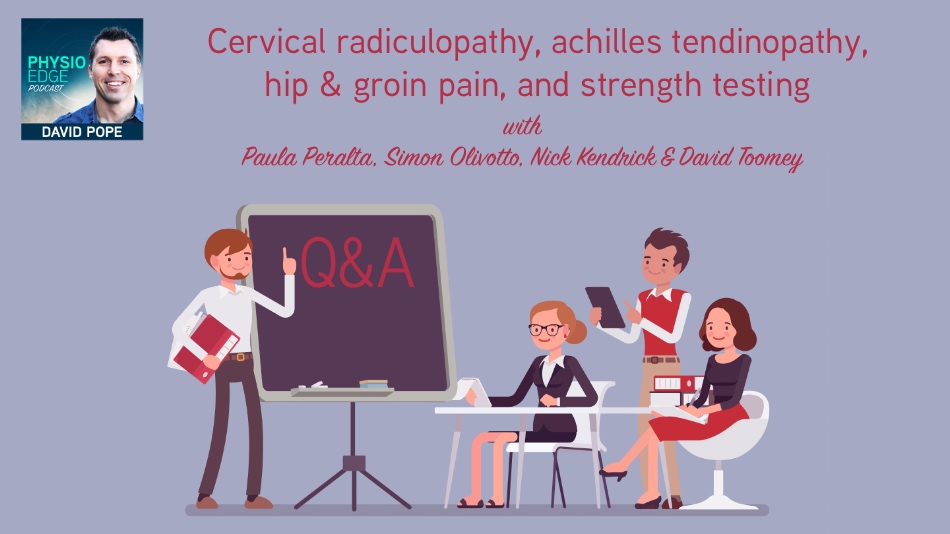




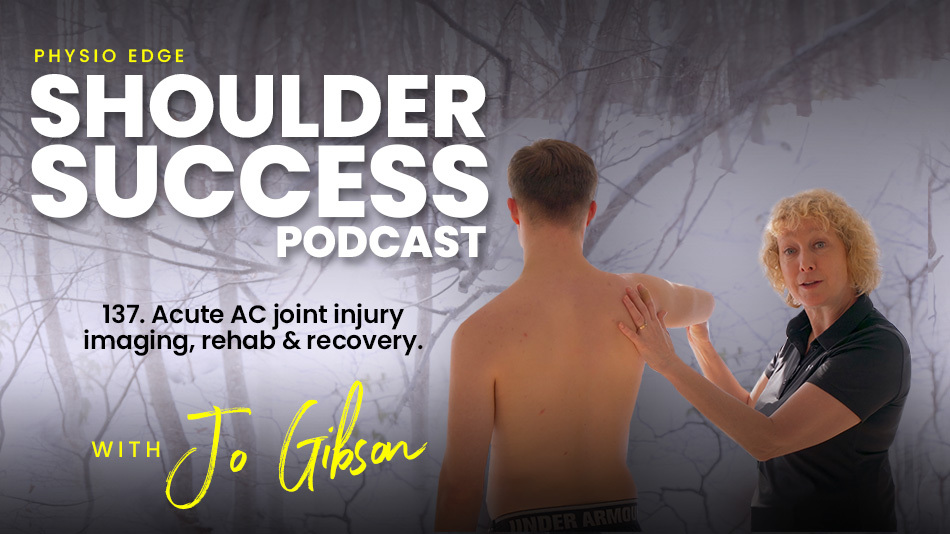

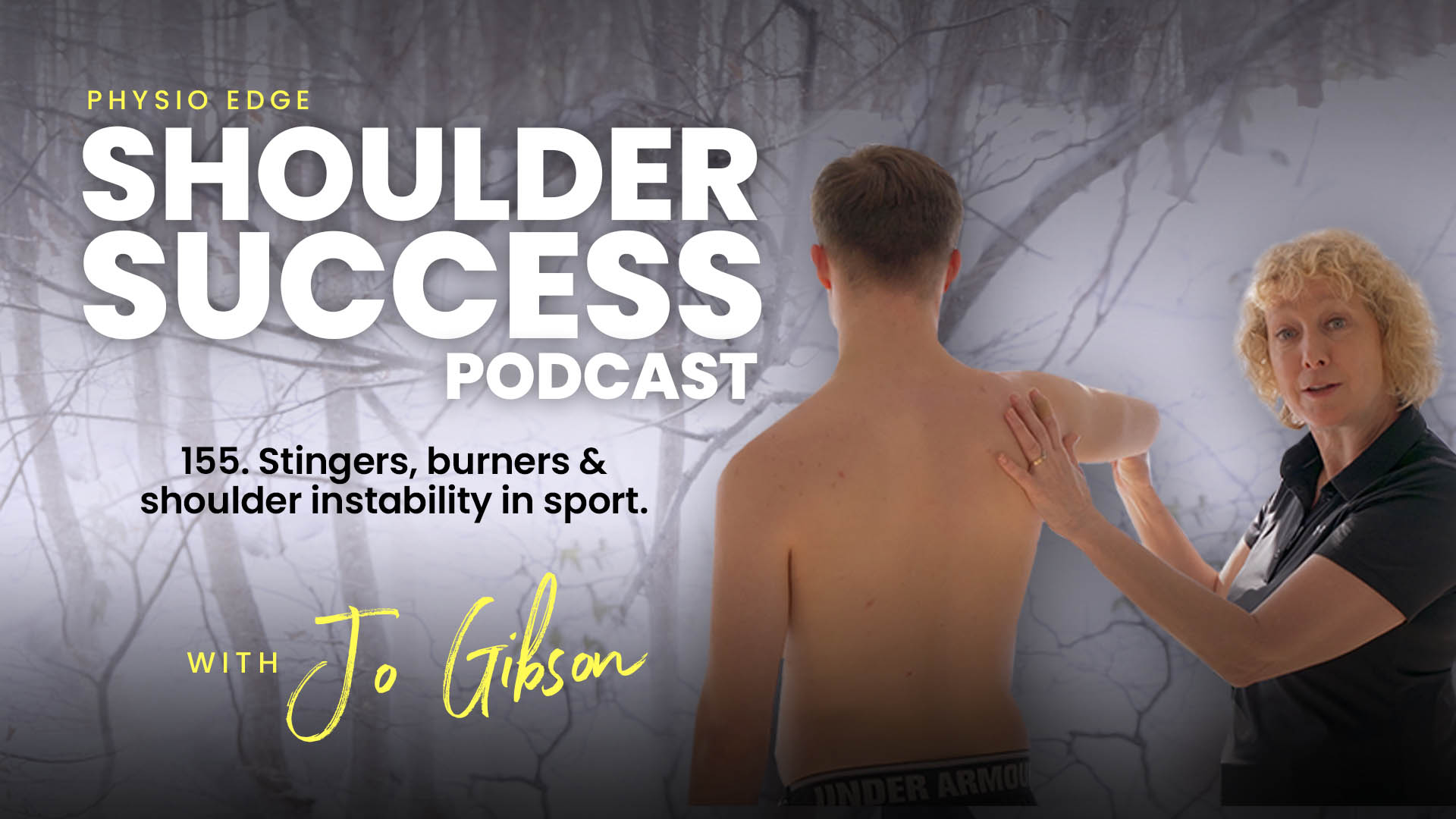






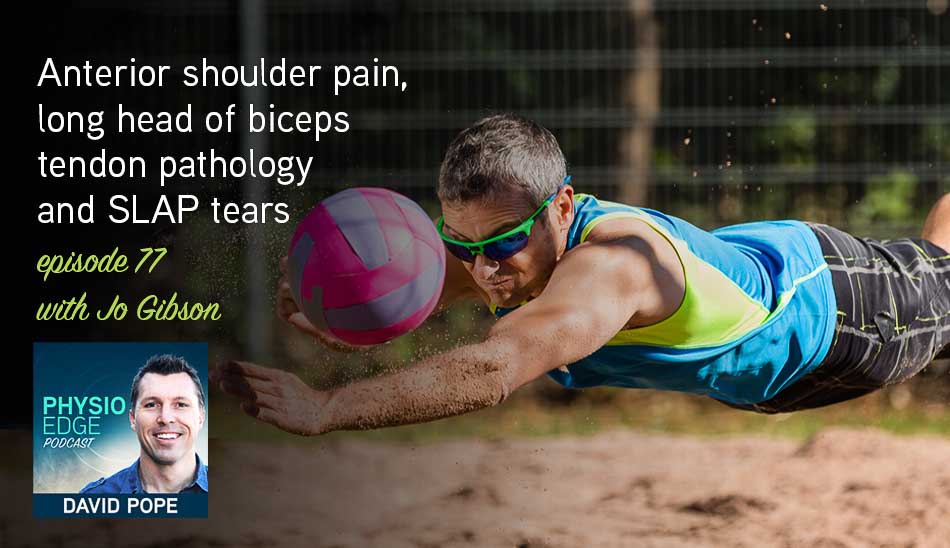

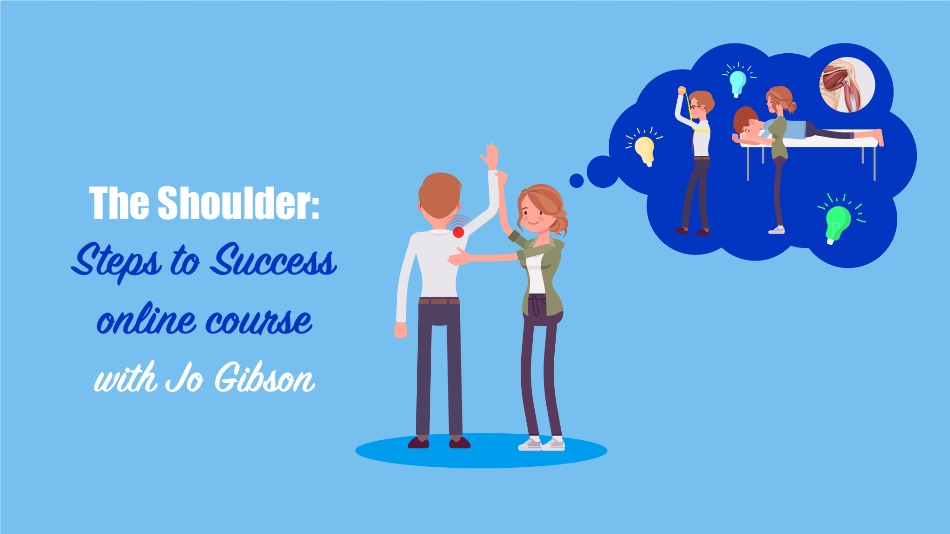

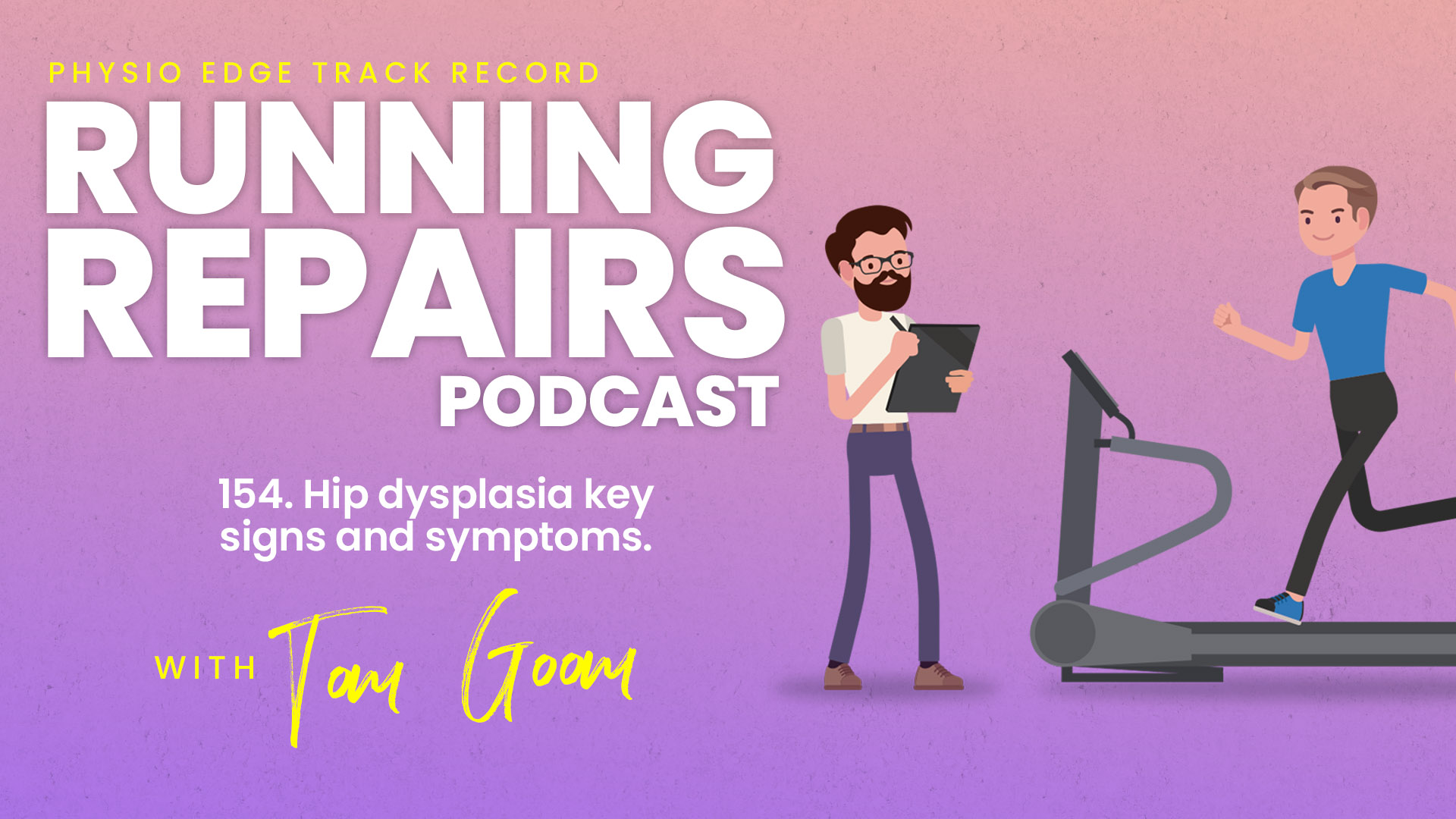
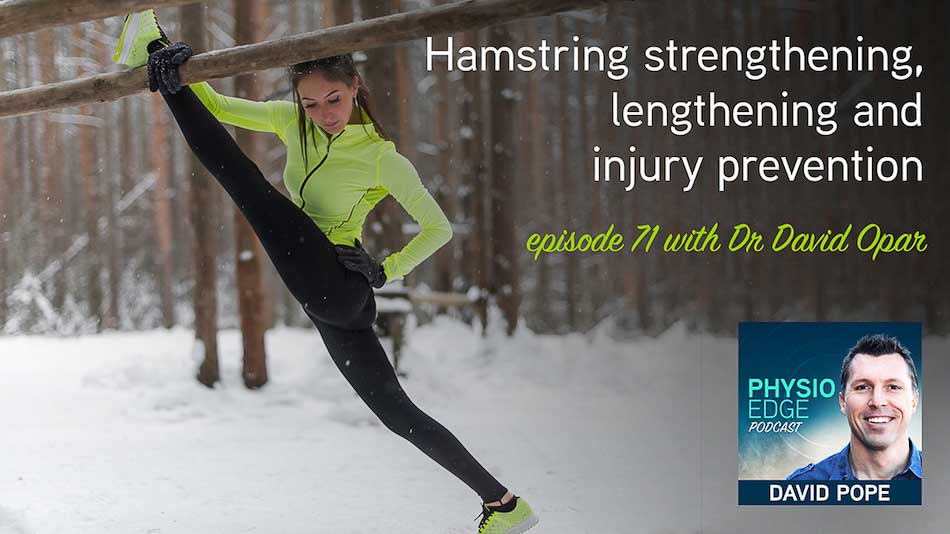
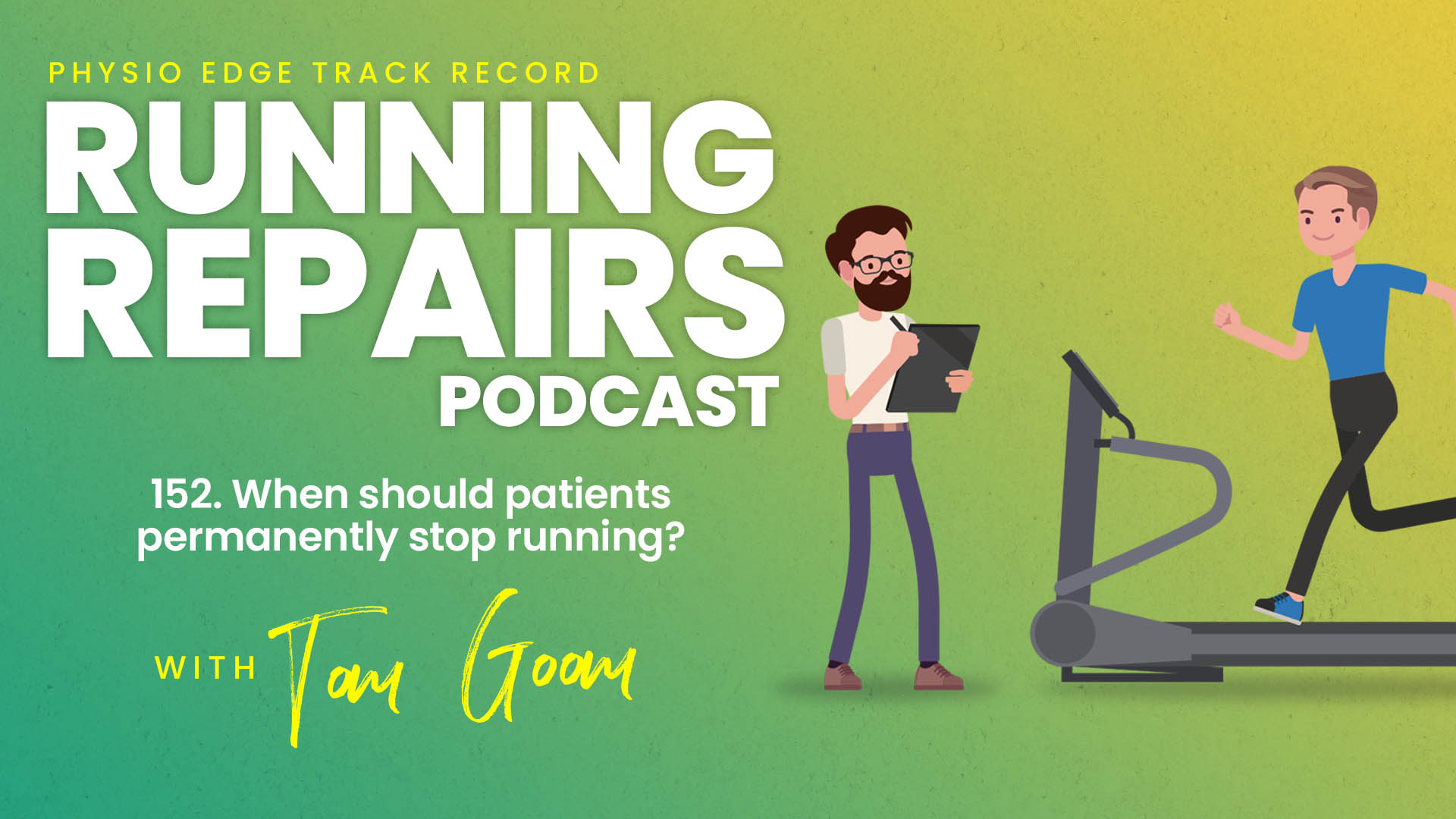 After injury or surgery, a lot of runners are told to stop running for different reasons. How can you answer patients that ask if they need to give up running for good? When should patients consider permanently stopping running? Find out in this podcast with Tom Goom (Running Physio).
After injury or surgery, a lot of runners are told to stop running for different reasons. How can you answer patients that ask if they need to give up running for good? When should patients consider permanently stopping running? Find out in this podcast with Tom Goom (Running Physio).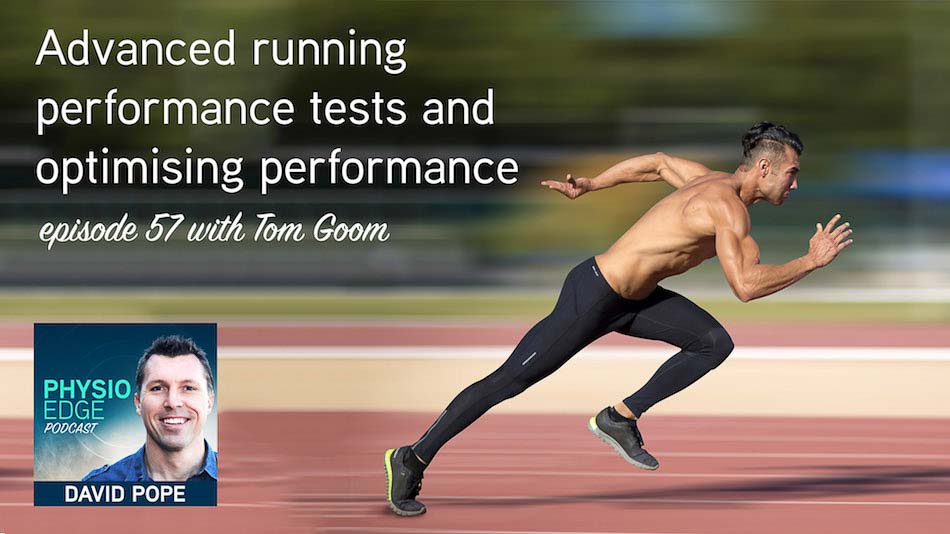
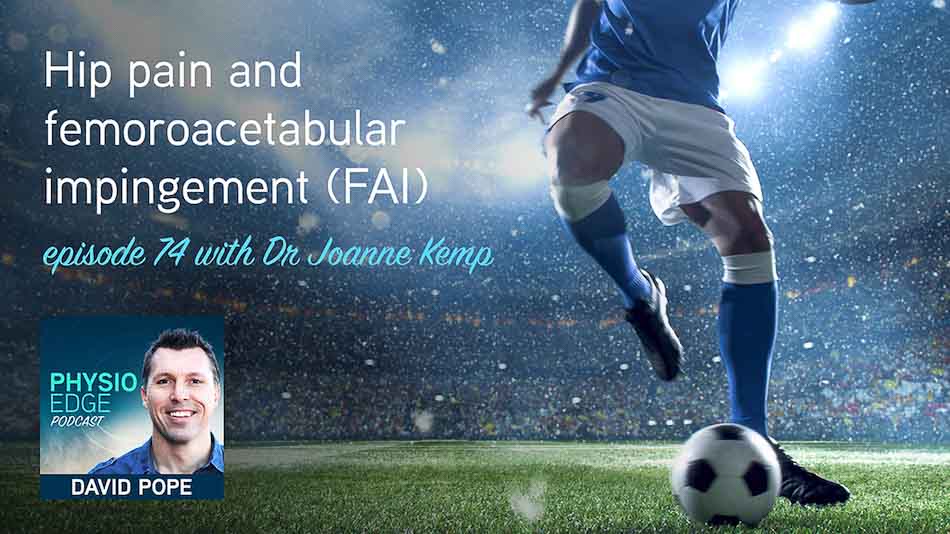

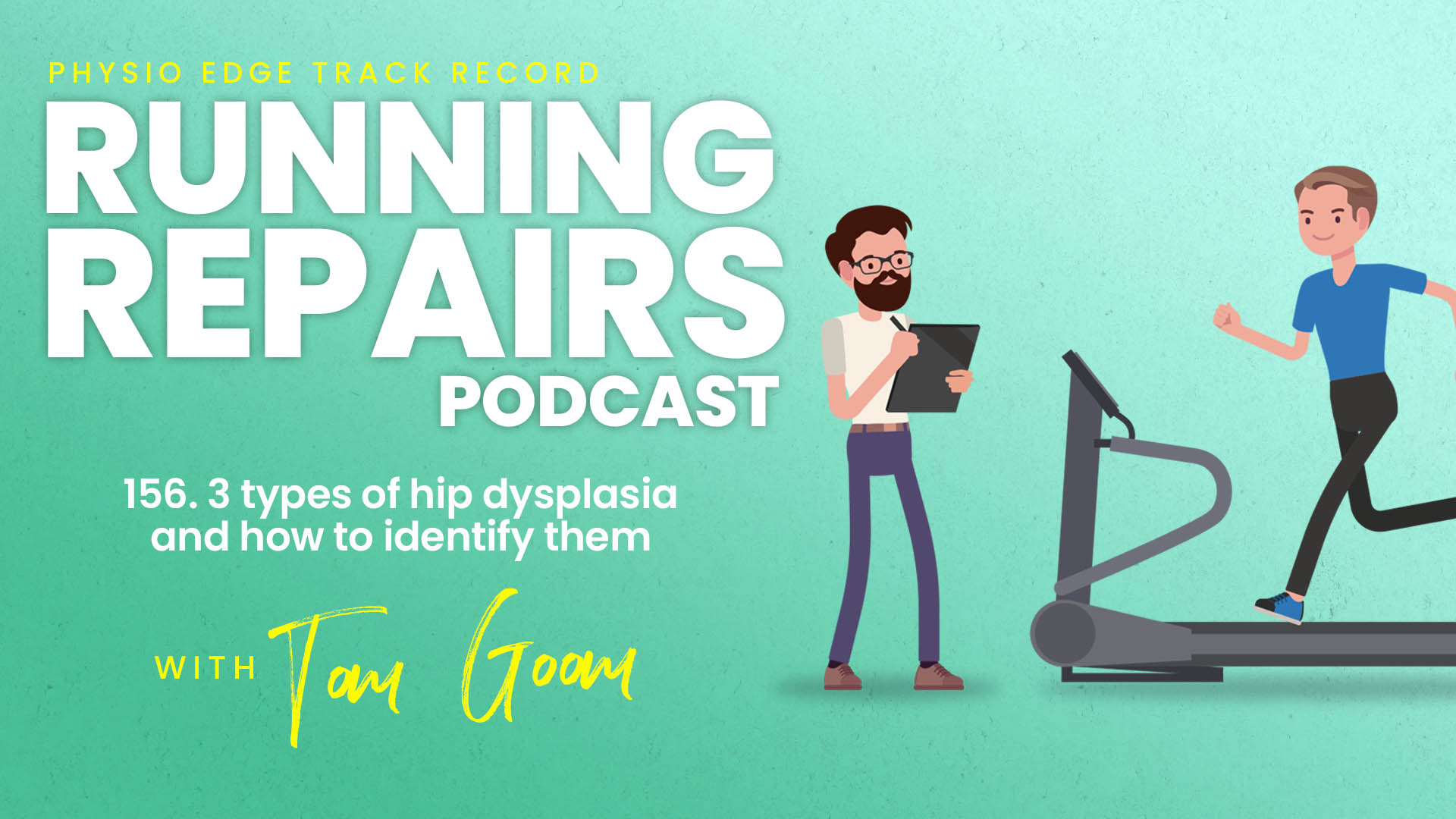

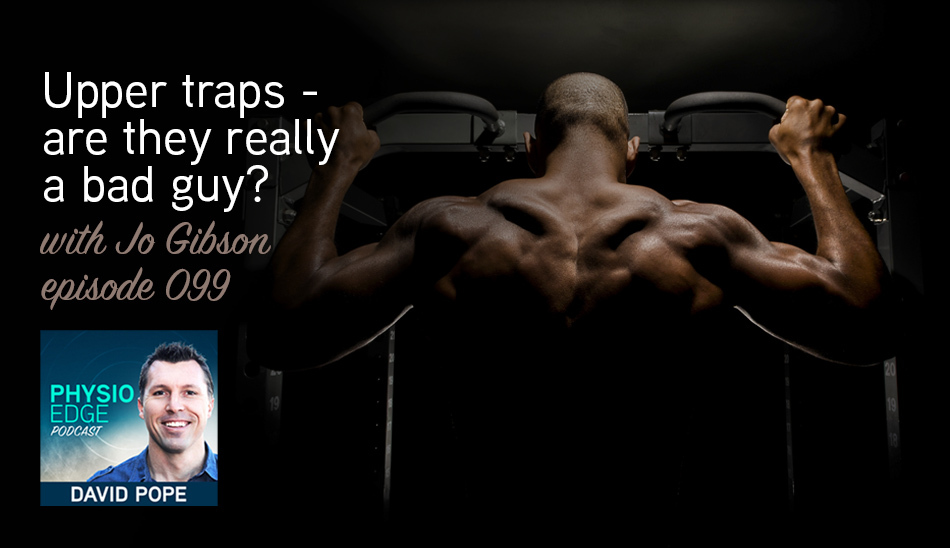
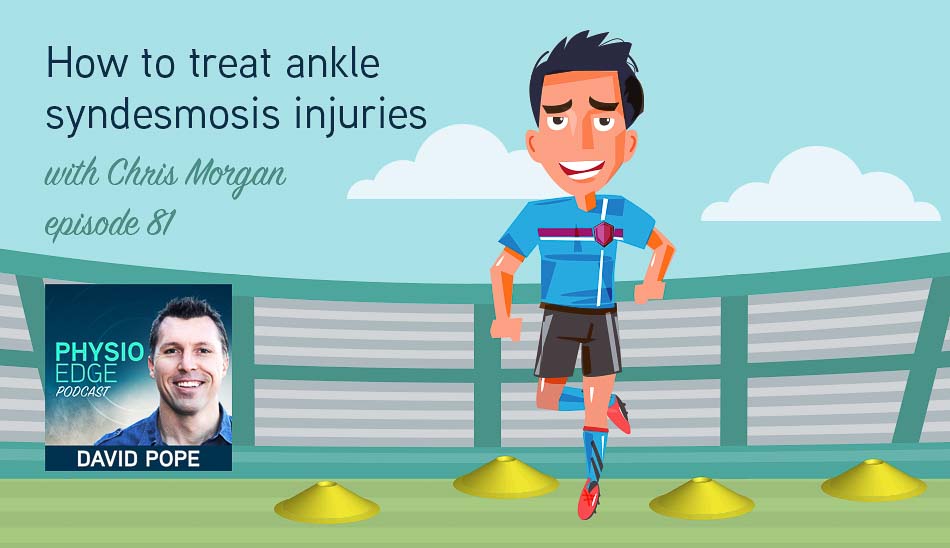

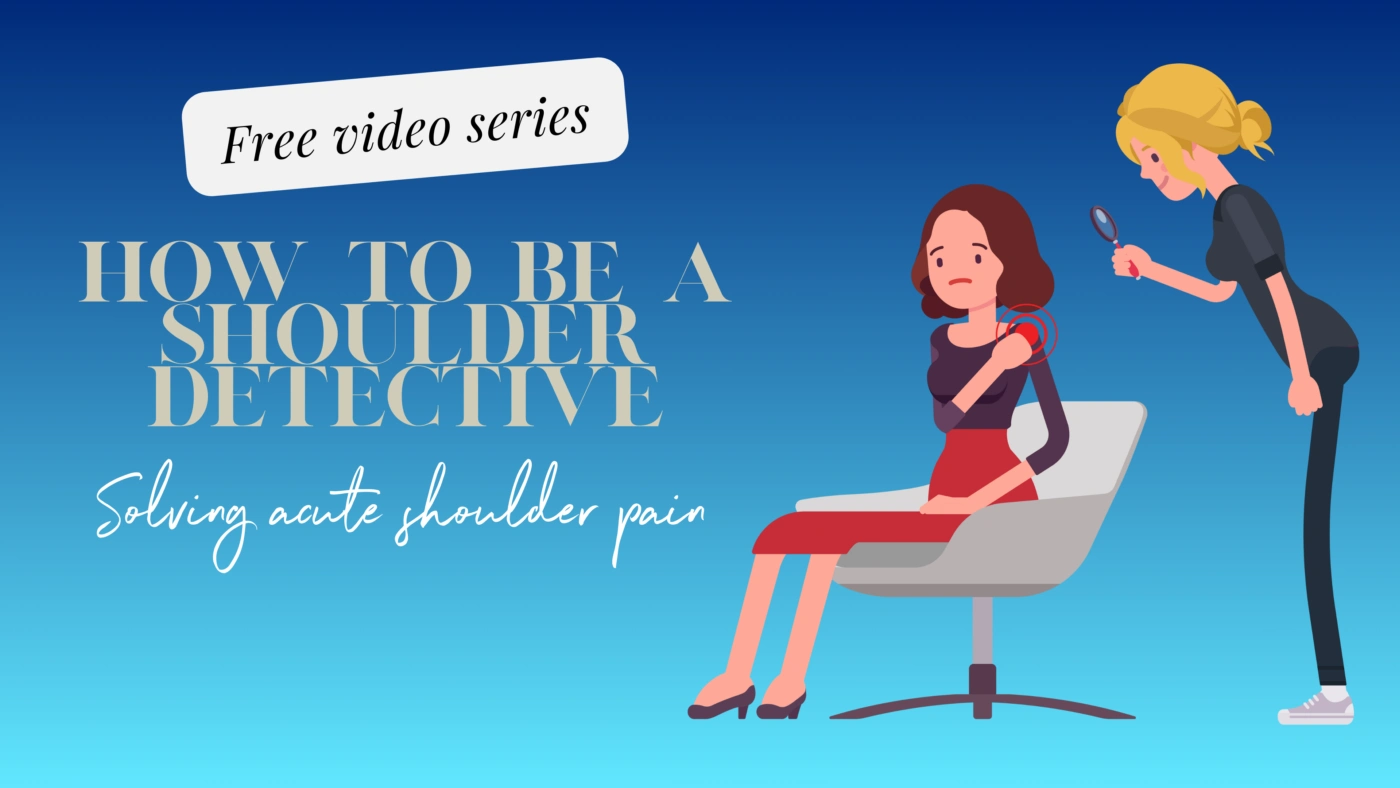




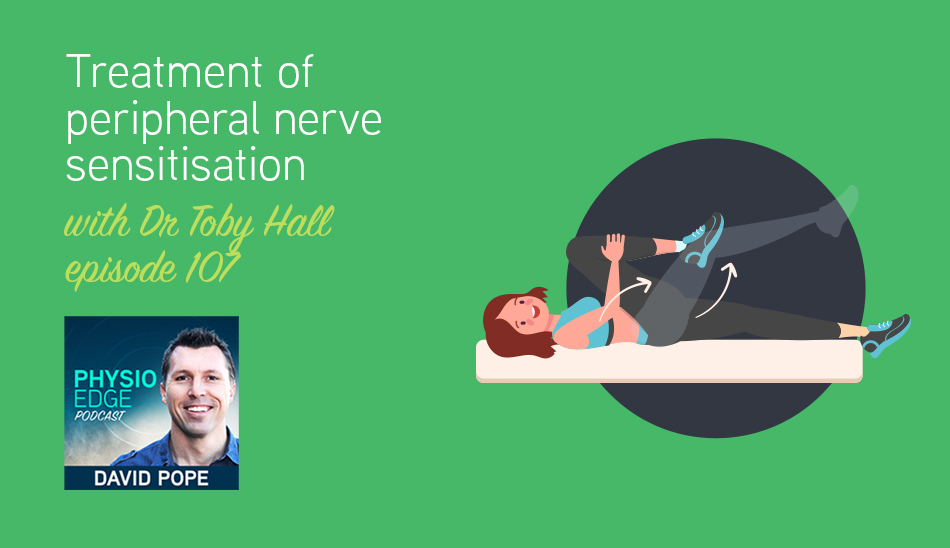
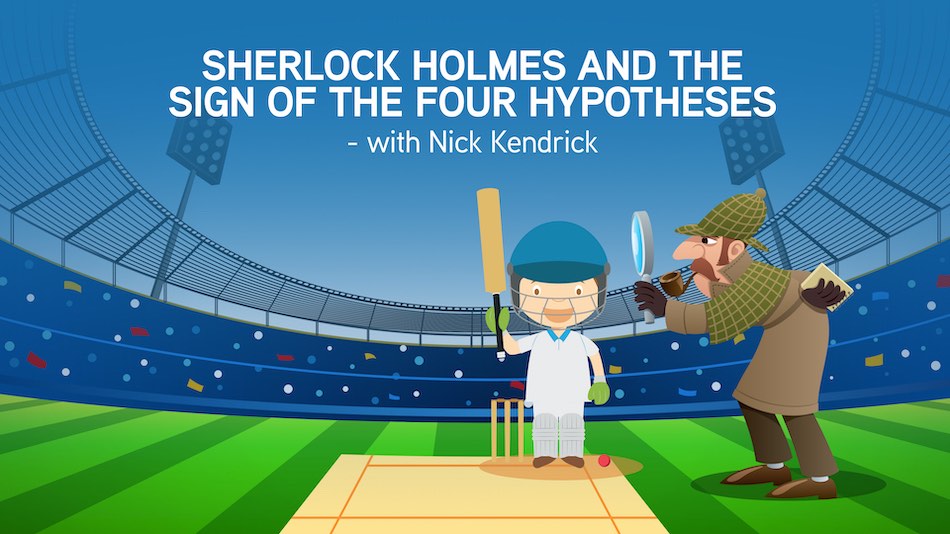
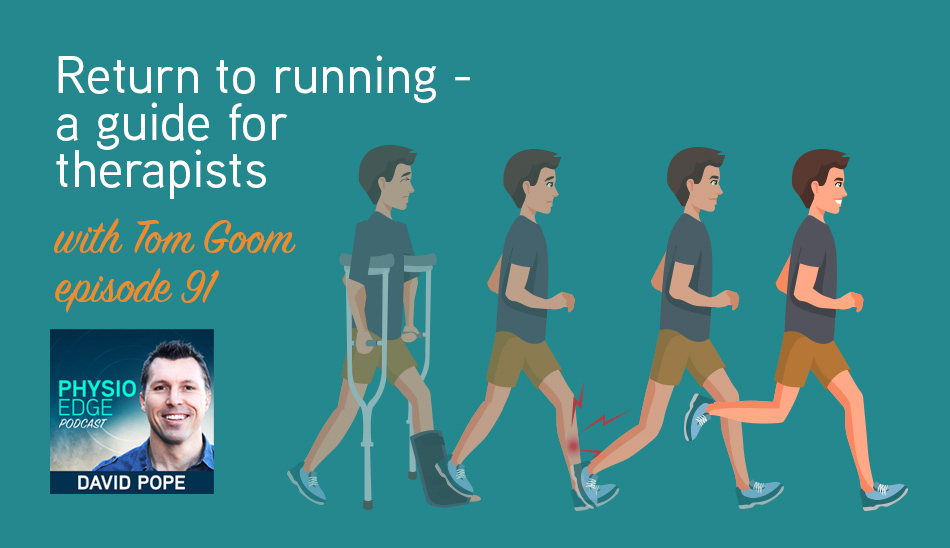
 Static stretching has long been used to improve flexibility, but research shows its effects are often short-lived. So how can you help patients achieve lasting improvements? In this episode, Tom Goom (Running Physio) explores exercises you can provide to patients to increase muscle fascicle length, improve flexibility, and reduce injury risk. You’ll discover:
Static stretching has long been used to improve flexibility, but research shows its effects are often short-lived. So how can you help patients achieve lasting improvements? In this episode, Tom Goom (Running Physio) explores exercises you can provide to patients to increase muscle fascicle length, improve flexibility, and reduce injury risk. You’ll discover:

